Tom's Hardware Verdict
Besides great performance, high build quality, and unique looks, the Antec Signature Titanium 1000 also features a dead silent operation.
Pros
- +
Full power at 47 degrees Celsius
- +
Good performance
- +
Ultra-high efficiency levels
- +
Efficient 5VSB rail
- +
High build quality
- +
Silent operation
- +
Fully modular
Cons
- -
Expensive
- -
18AWG gauges on the EPS and PCIe connectors
- -
Not compatible with the alternative sleep mode
- -
Small distance between 4-pin Molex connectors
Why you can trust Tom's Hardware
Antec took Seasonic's high-end Prime Titanium platform and used it to revamp its Signature line. This means that the Signature Titanium 1000 achieves high performance in all areas, while at the same time, it features quiet operation, even with increased loads at high operating temperatures. Besides its Seasonic sibling, the similar capacity Prime Titanium model, a strong opponent is the Corsair AX1000, which also uses the same Seasonic platform.
Antec's Signature line used to include some of the best power supplies money could buy. For more than a decade, Antec didn't update this line, so it is a pleasant surprise to see three new Signature models, with 1000W and 1300W capacities and 80 PLUS Platinum and Titanium efficiency levels. Moreover, the Signature Titanium 1000 that we will evaluate today has also been tested by Cybenetics achieving ETA-A+ and LAMBDA-A efficiency and noise certifications, respectively.
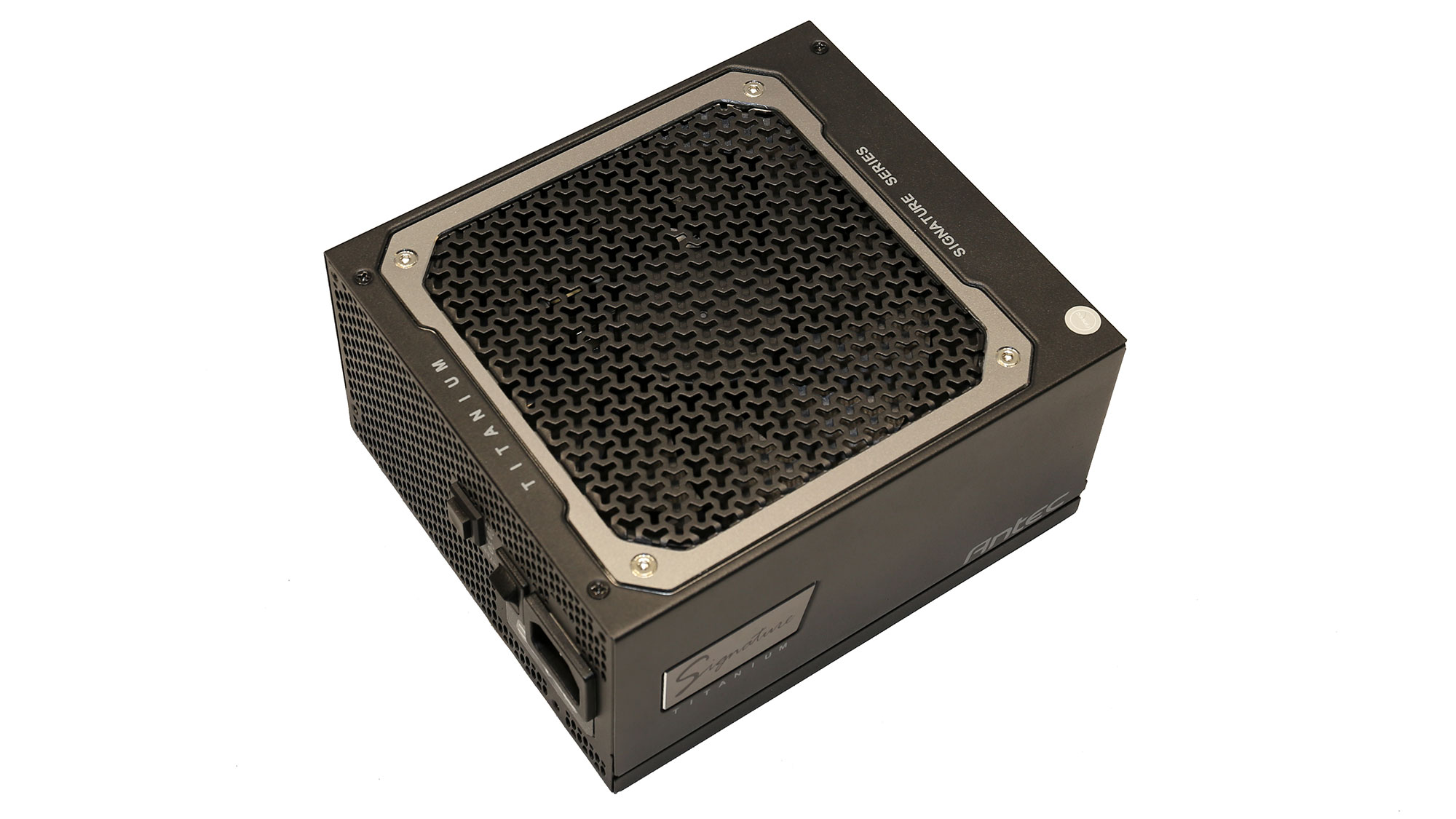
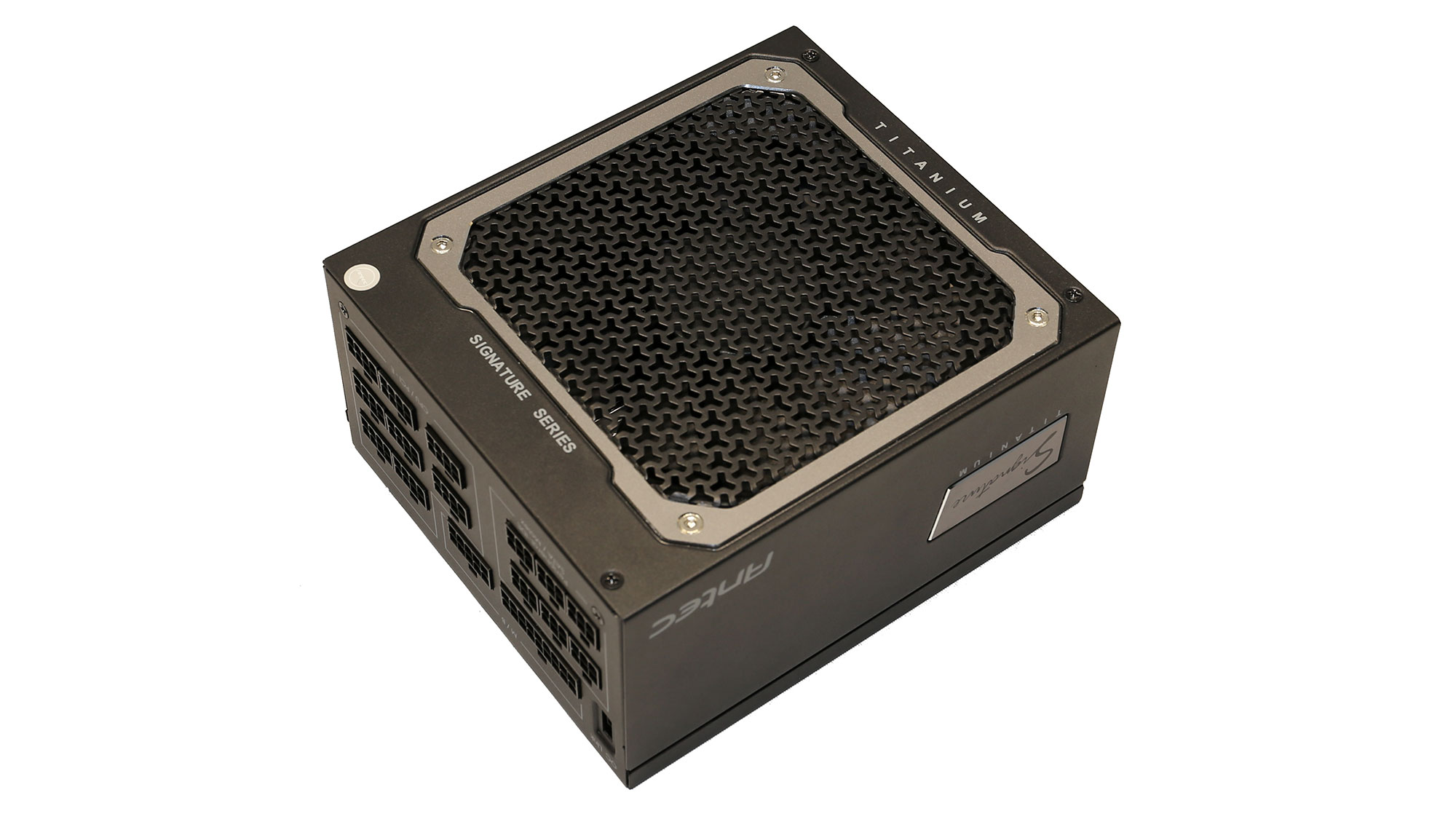
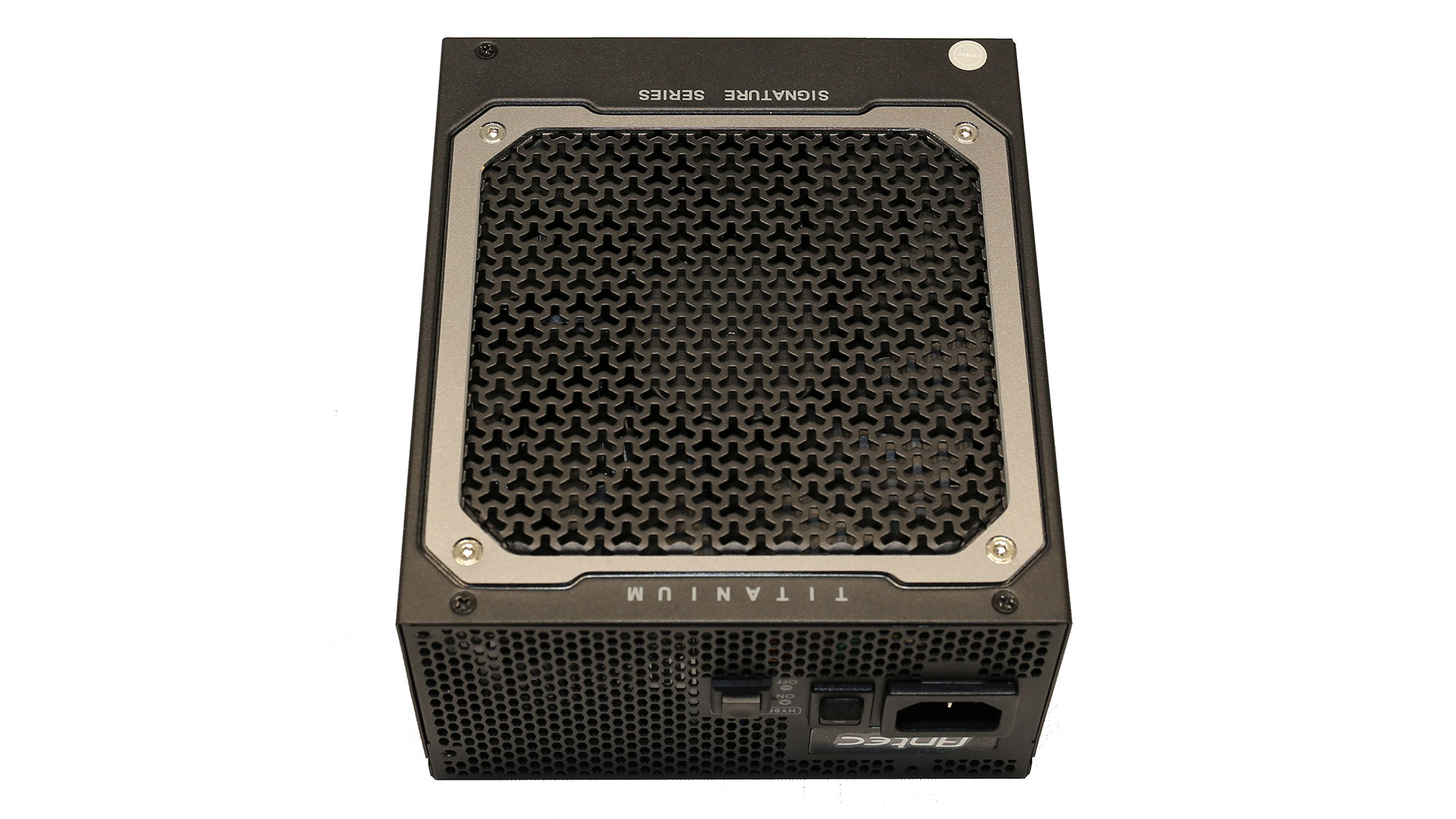
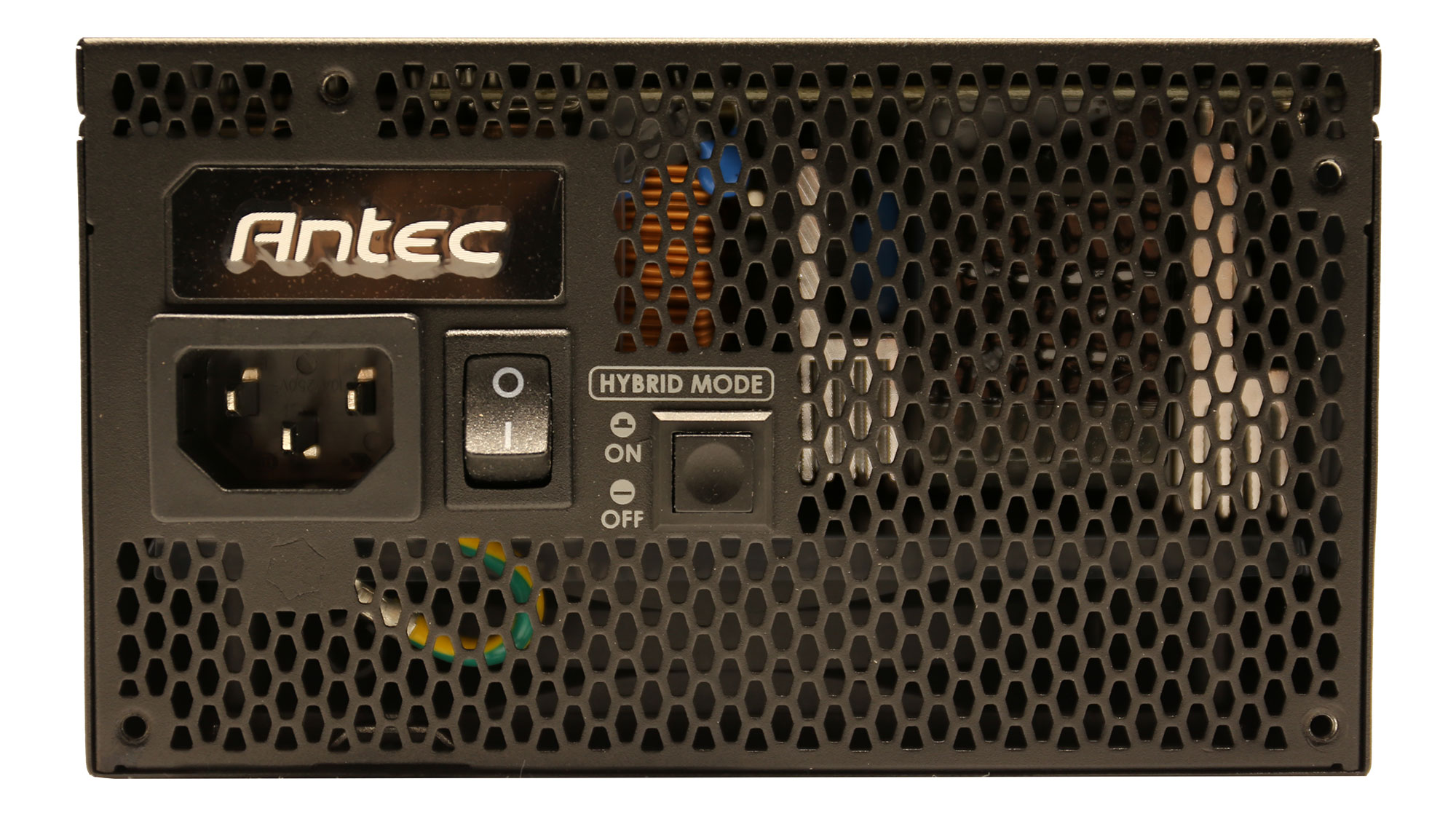
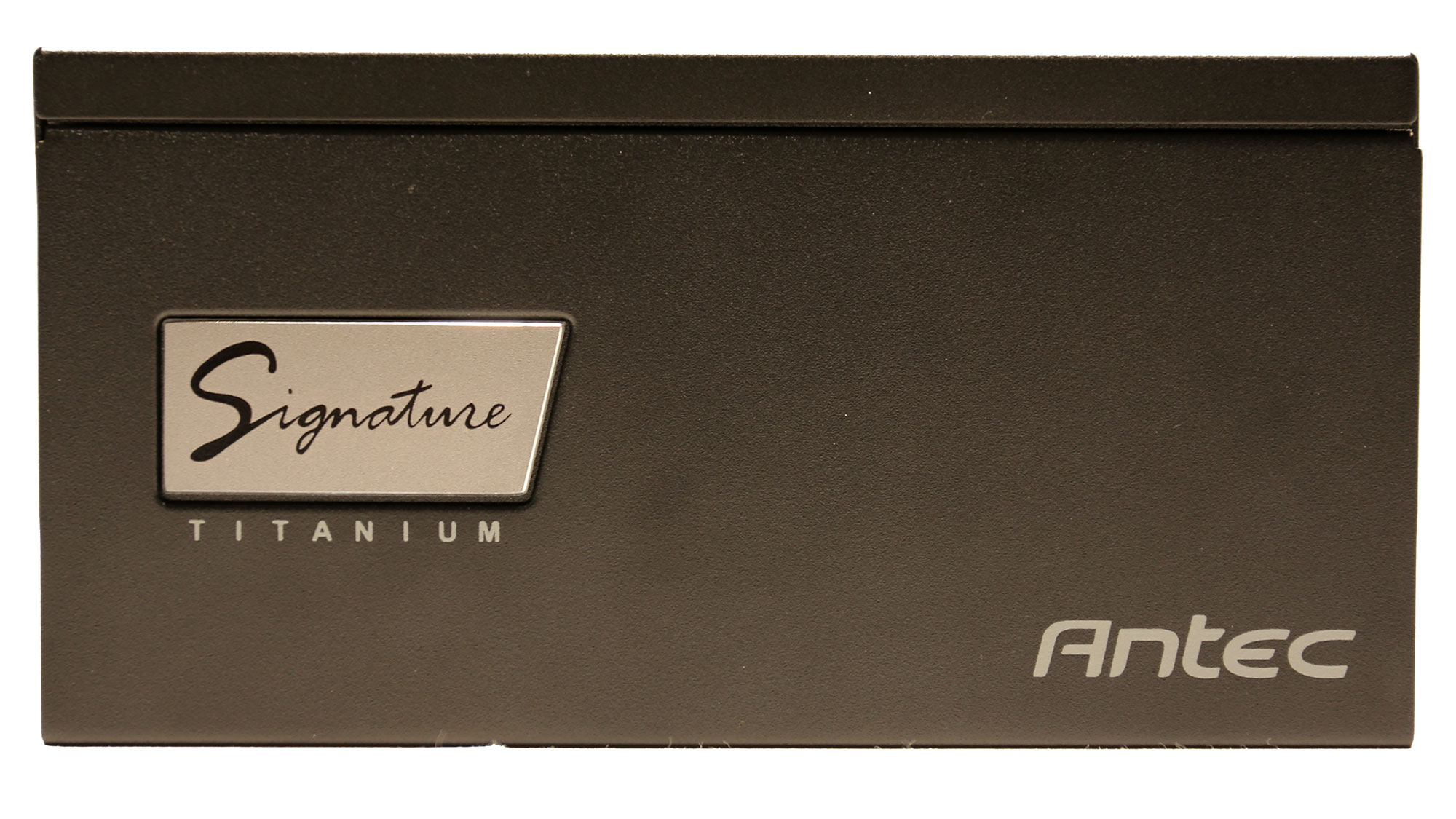
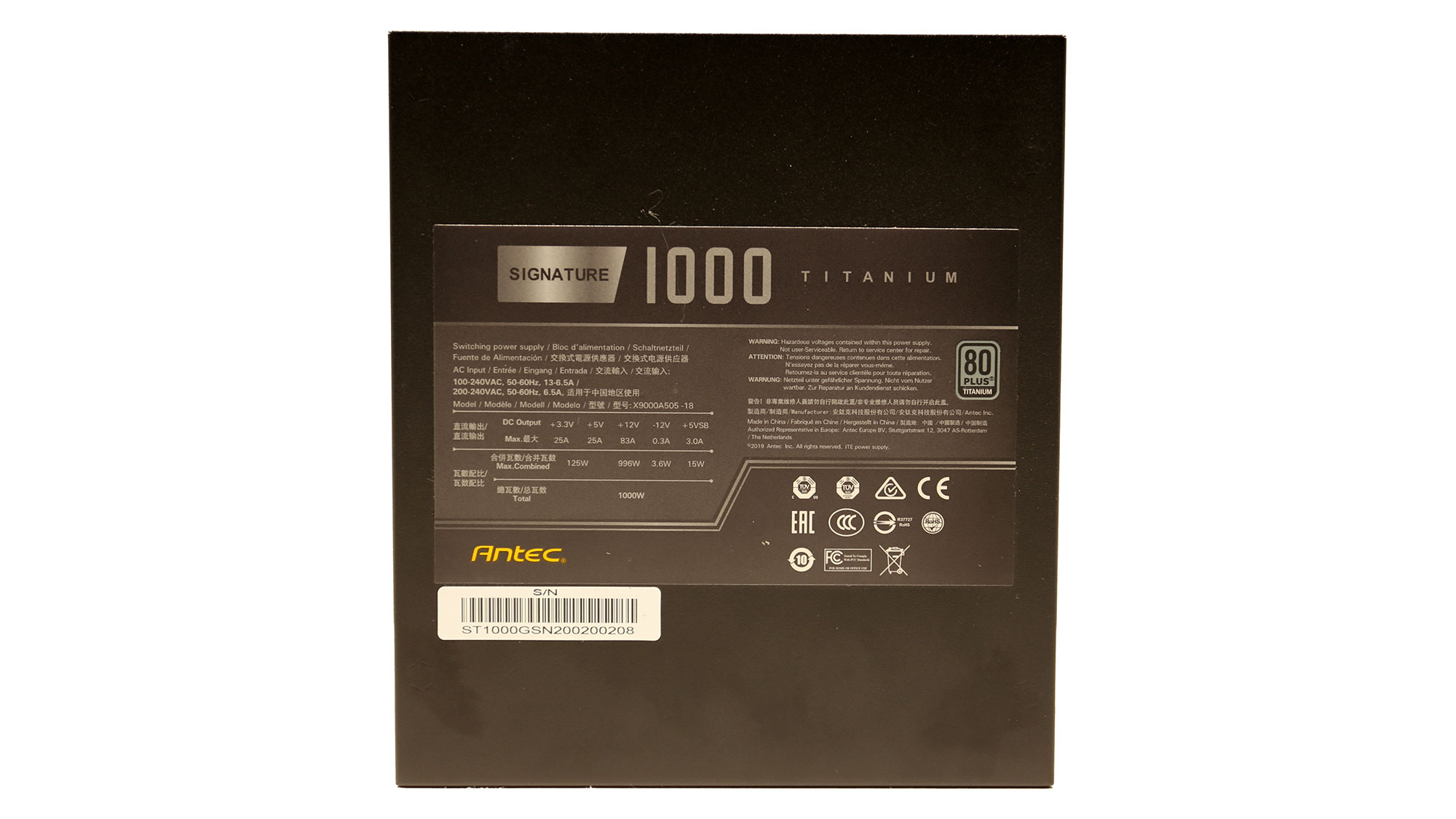
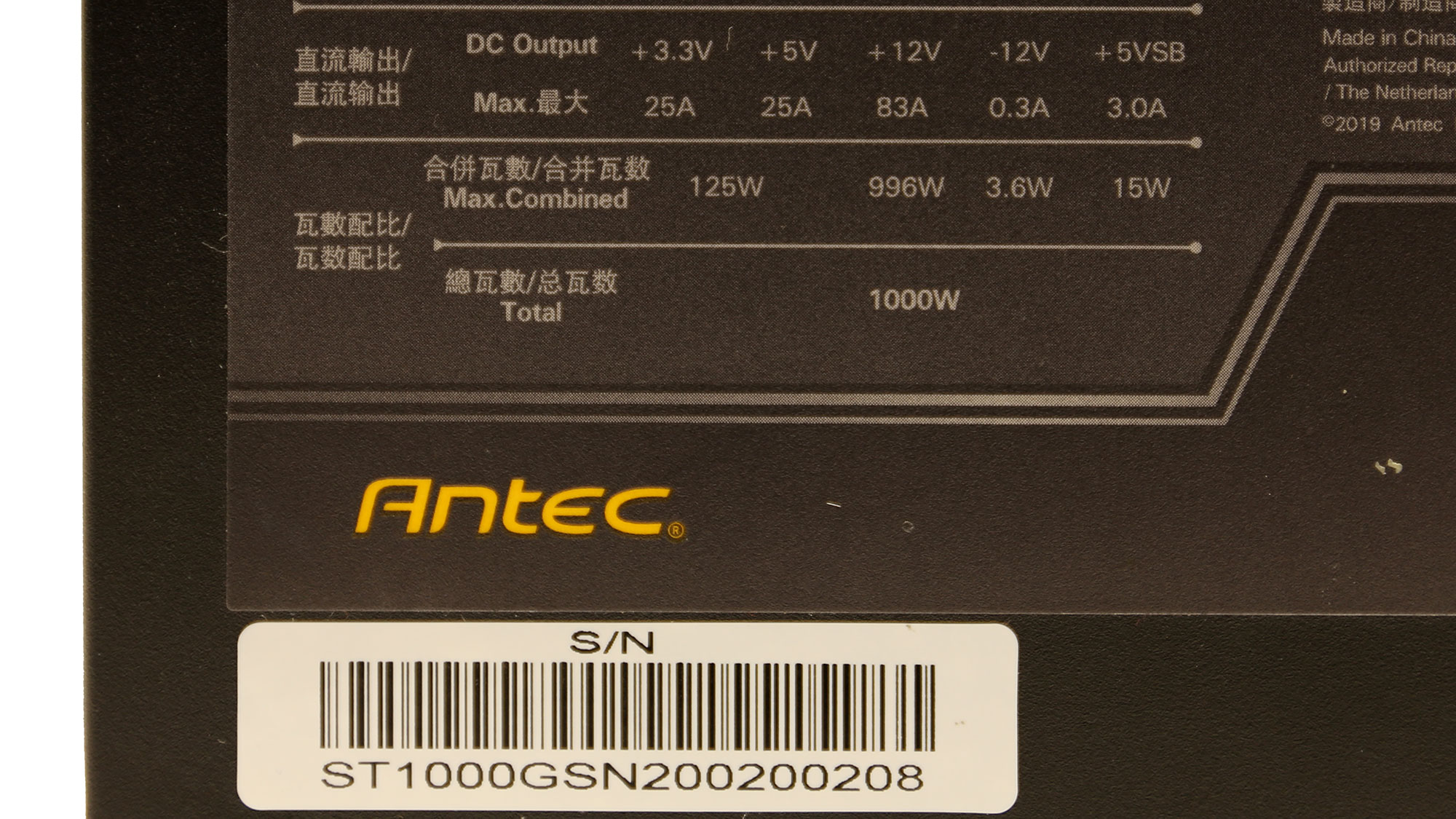
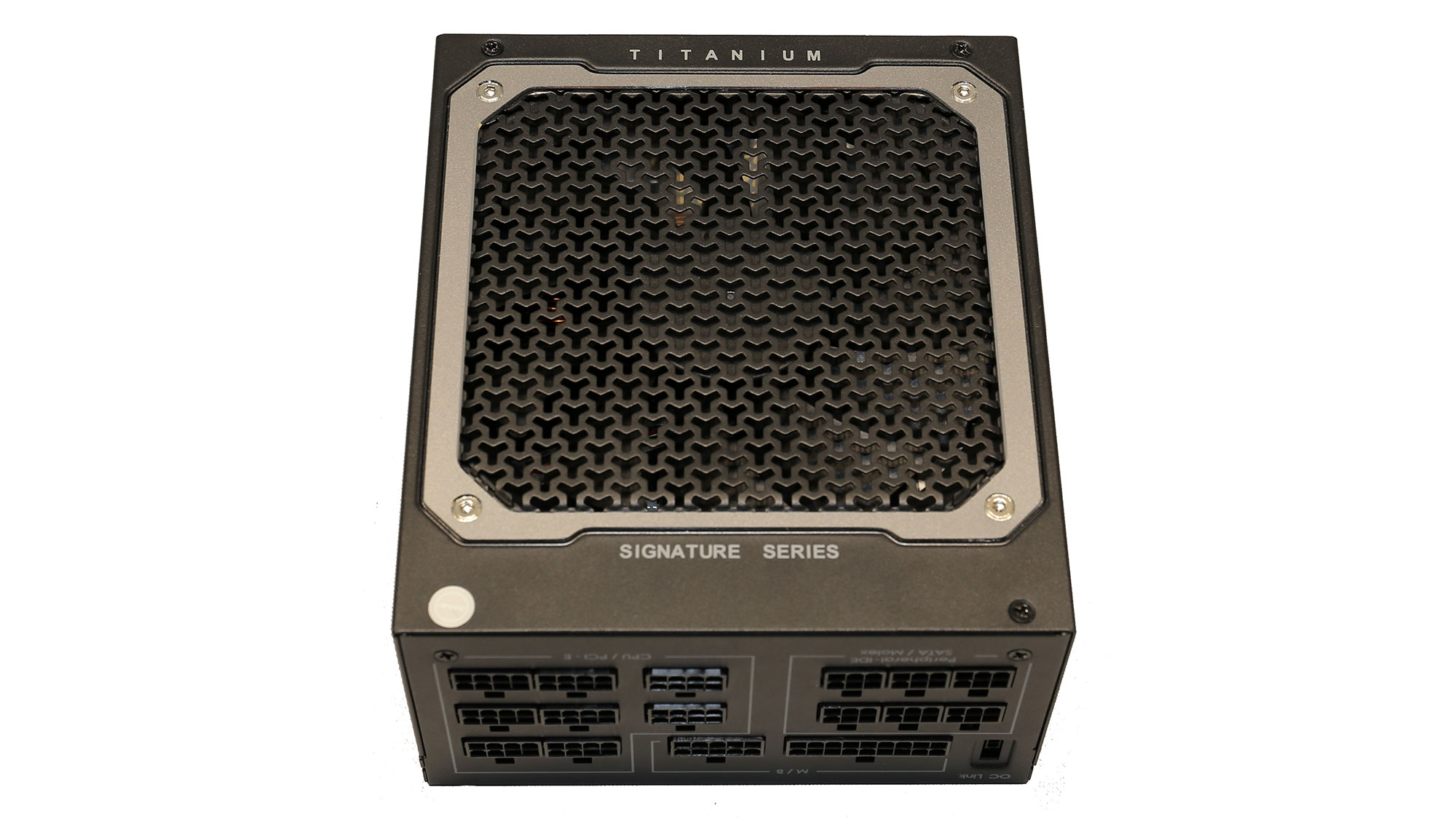
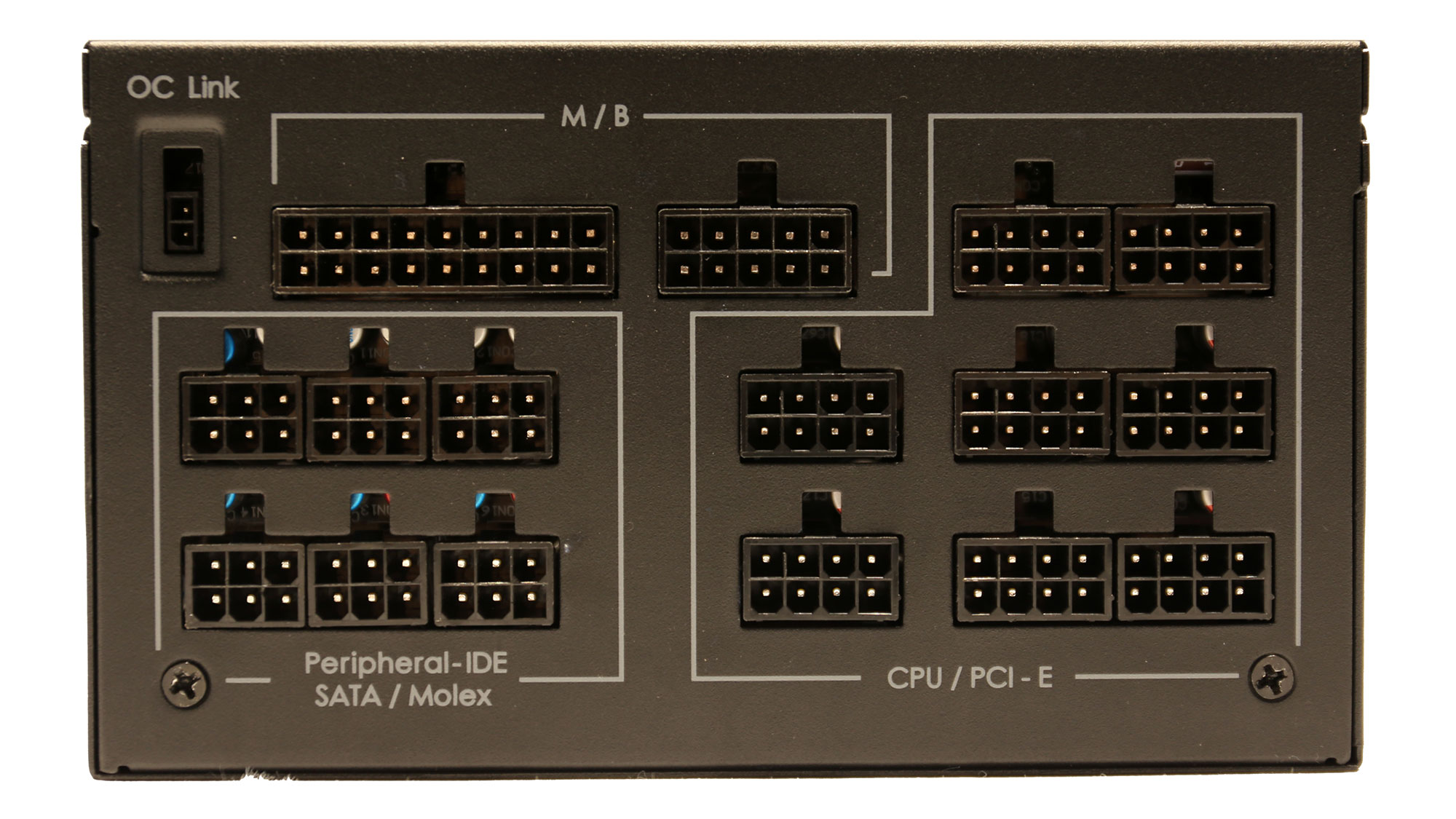
Antec used Seasonic's high-end Prime Titanium platform for the Signature 1000, which is probably the best analog platform with performance that puts several semi-digital designs to shame. Besides quality parts, including an FDB fan and good Japanese caps, the Signature 1000 also features OC Link technology, which allows two Signature power supplies to operate in tandem, to power systems with increased energy needs. Although we are not fond of systems with two PSUs installed, mostly because of increased power consumption at light loads compared to single PSU systems, this is still a nice option to have.
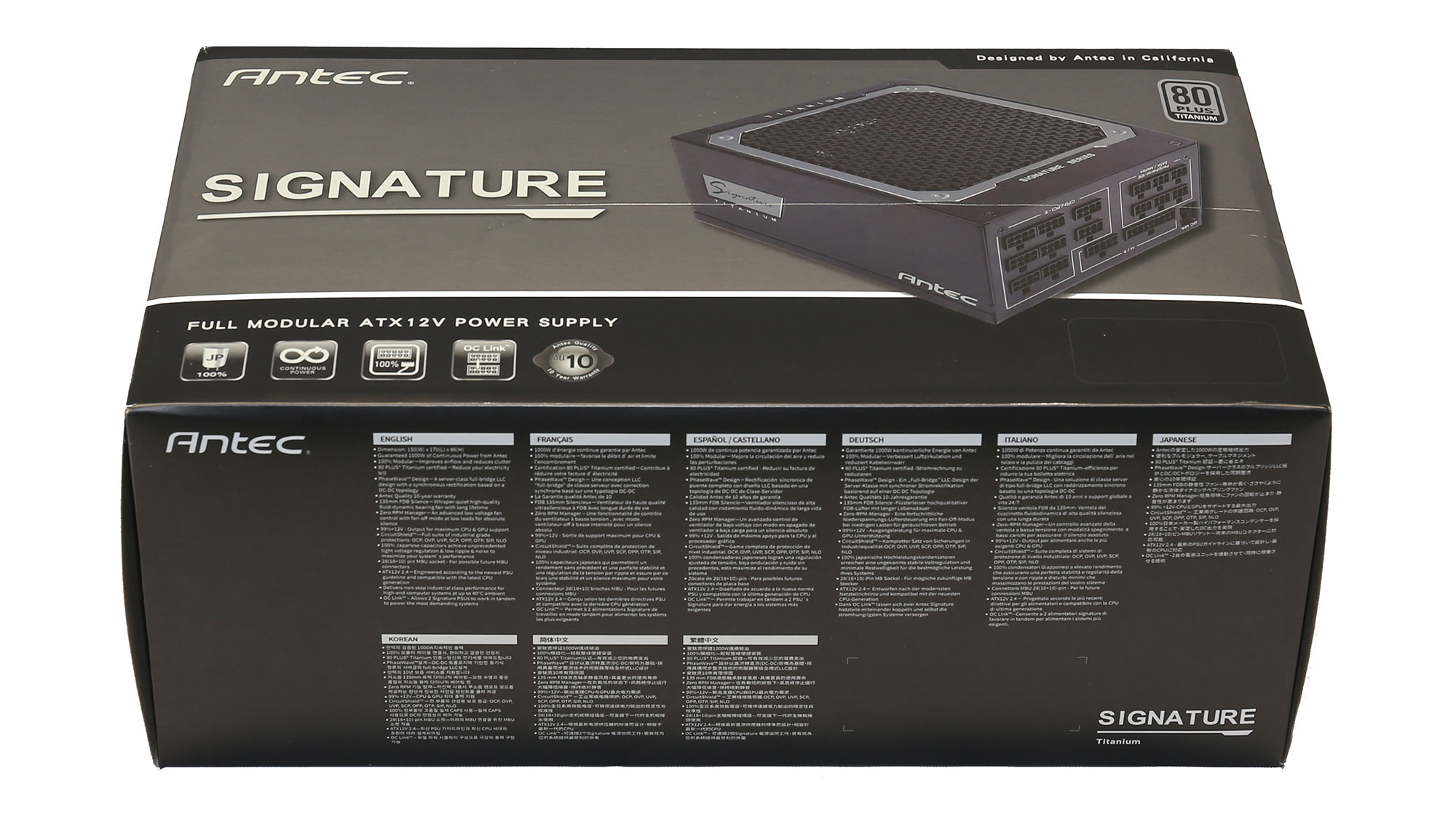
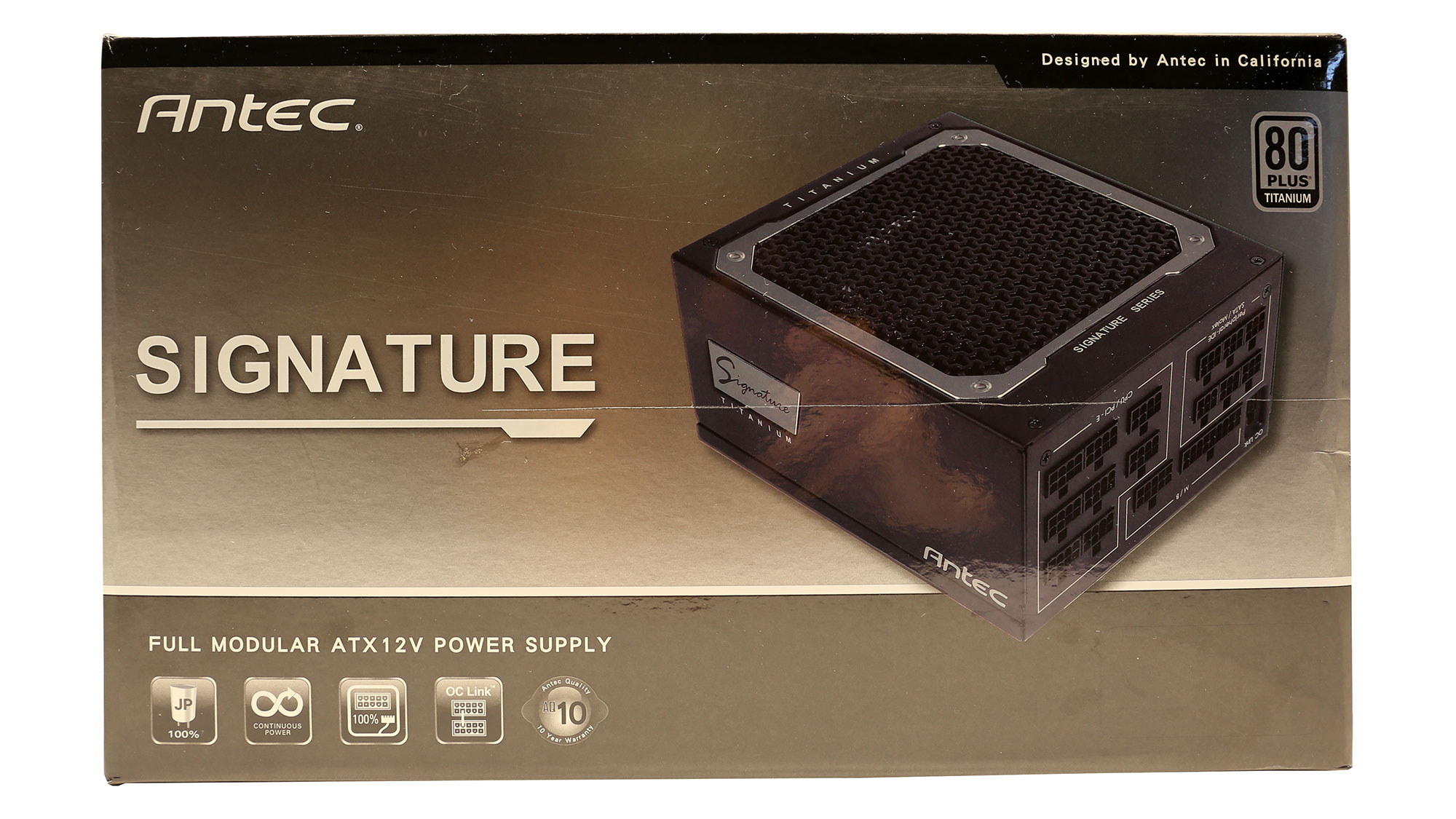
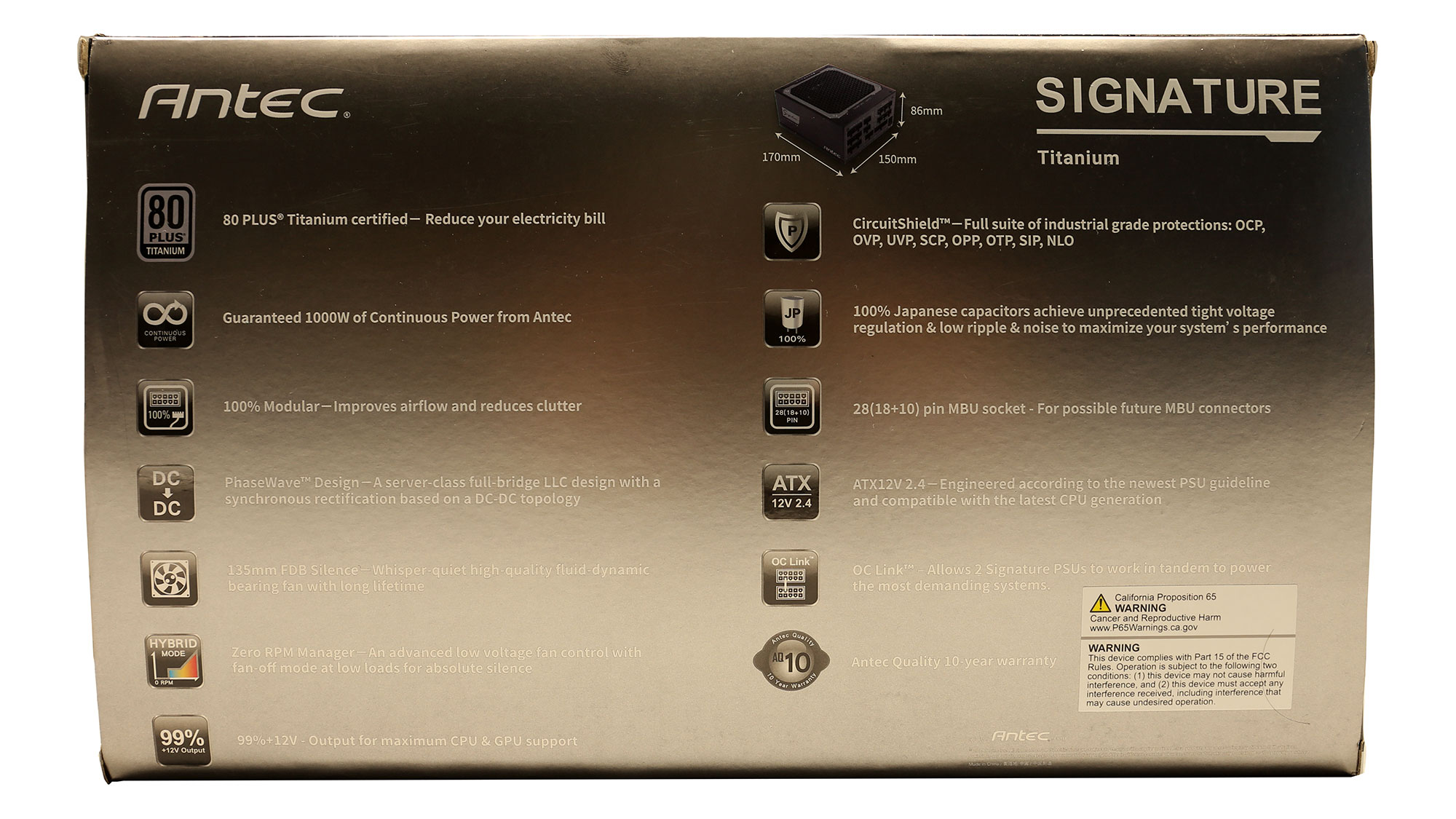
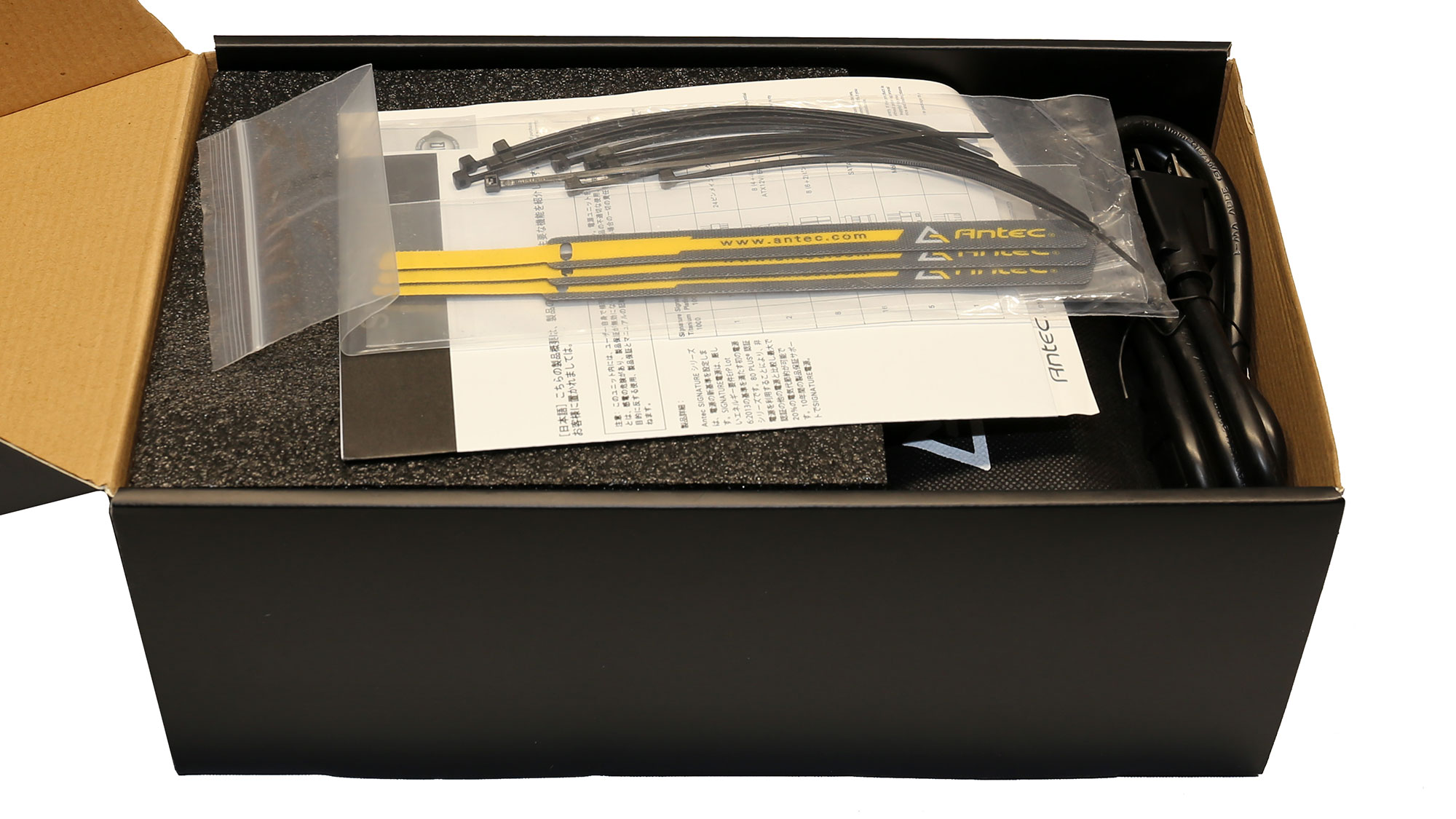
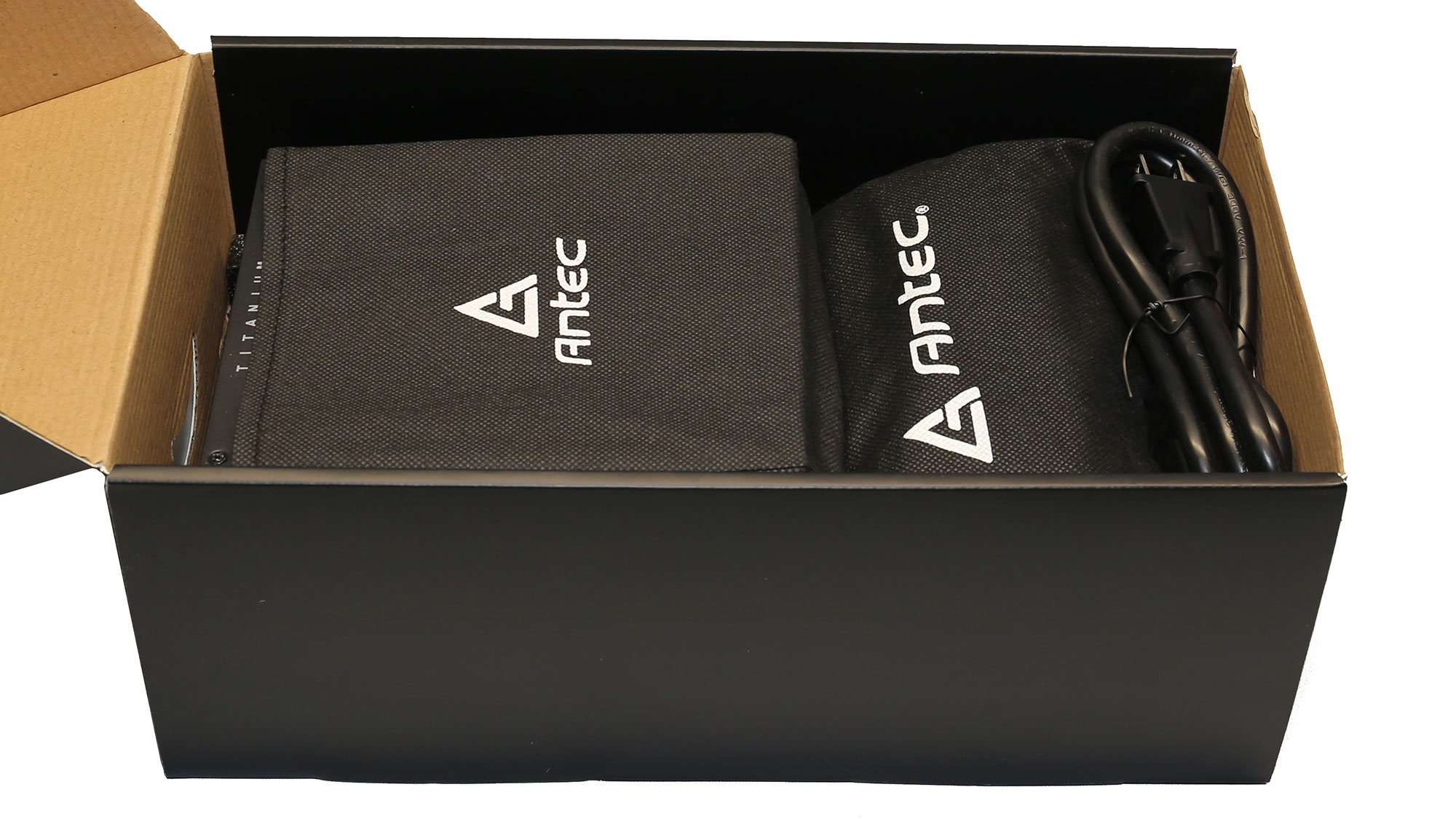
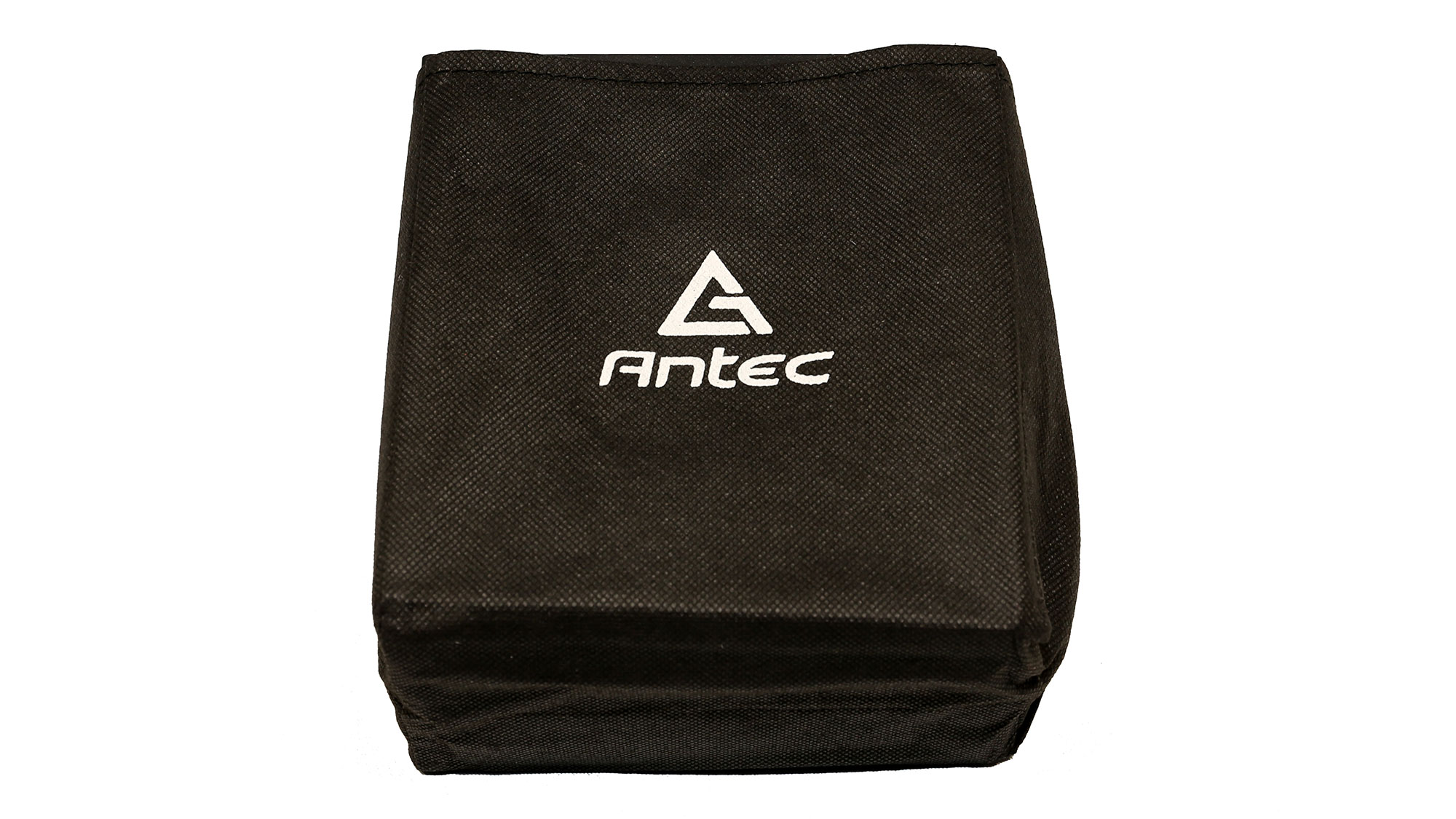
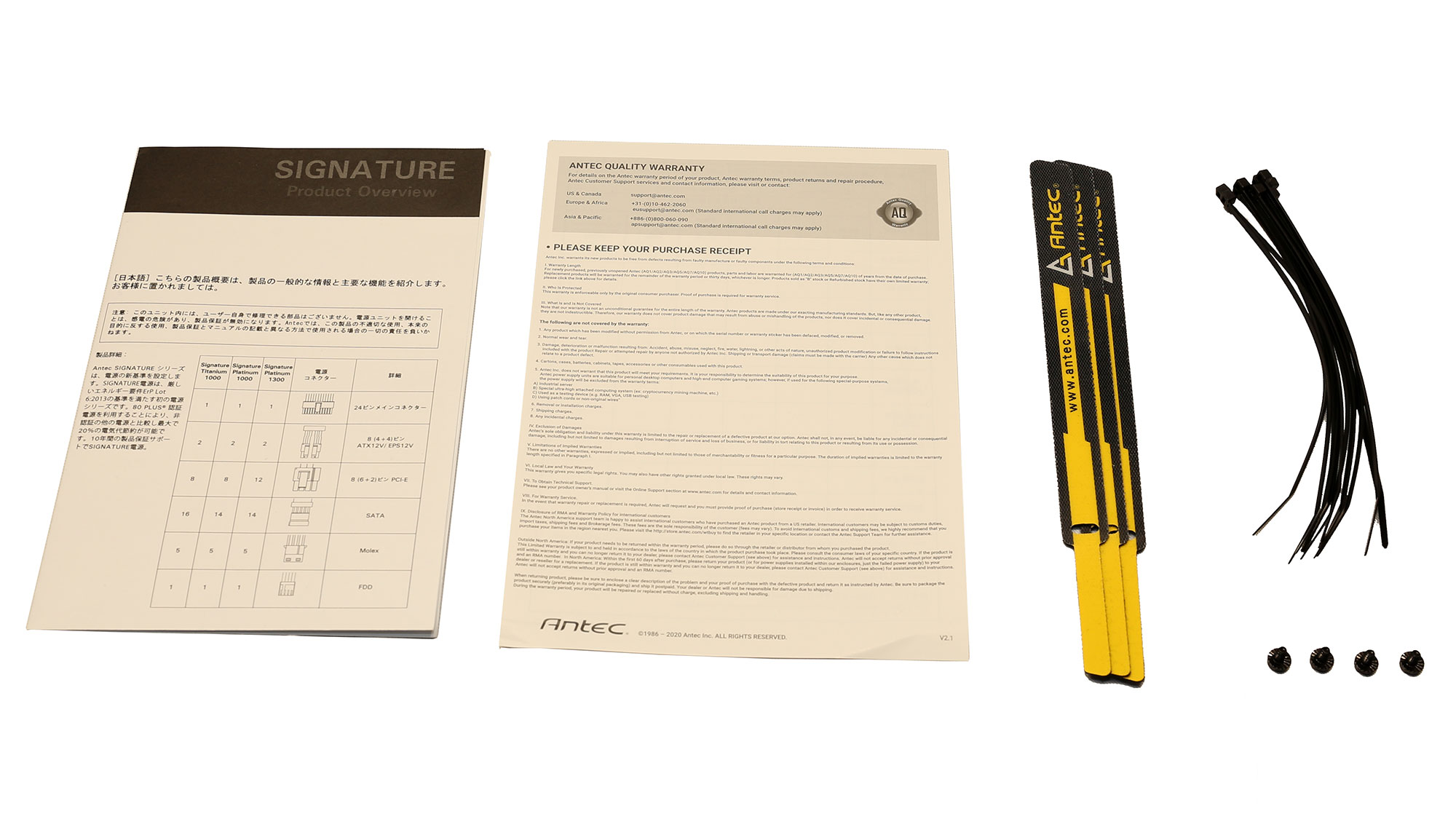
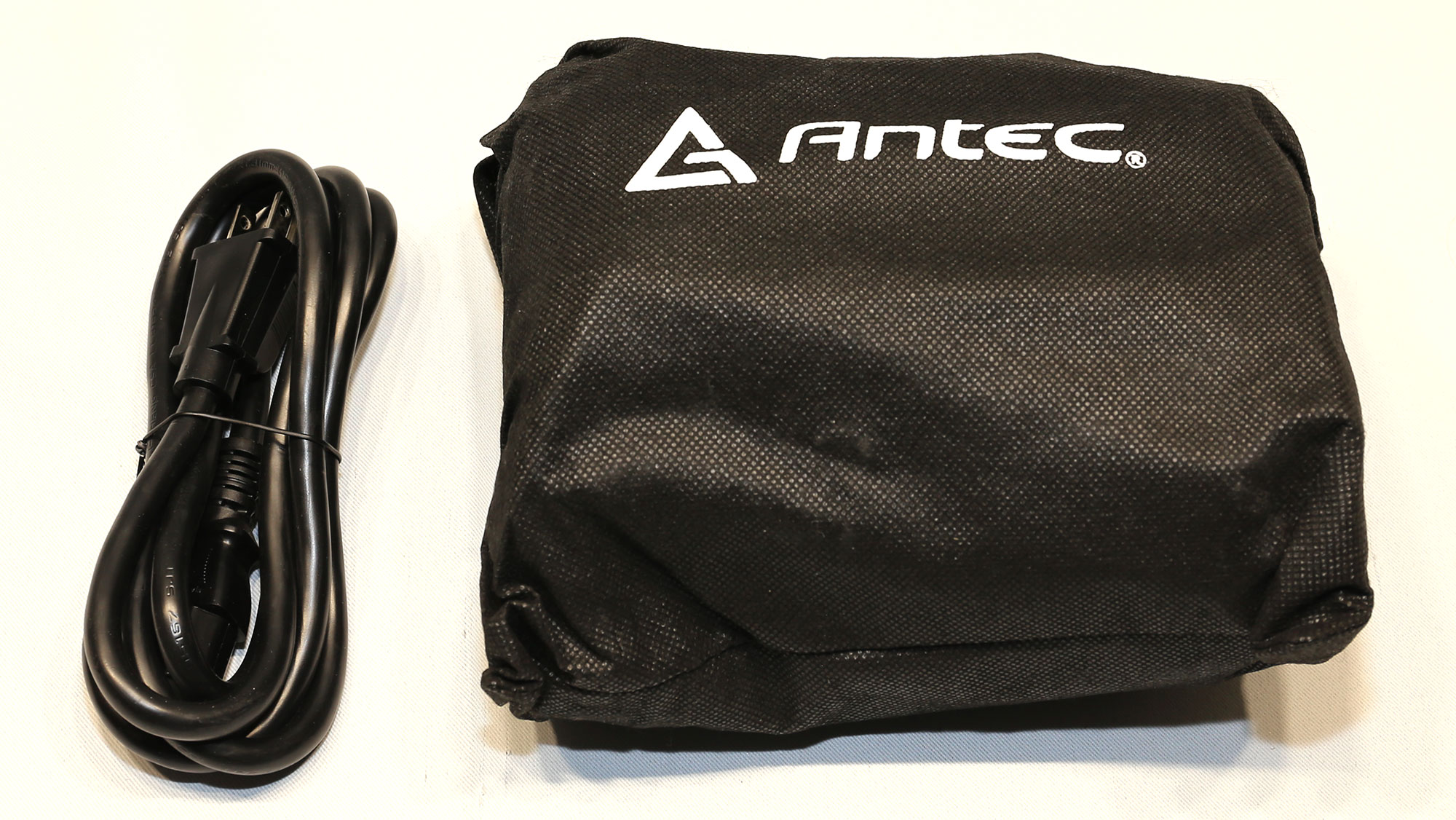
Specifications
|
Manufacturer (OEM) | Seasonic |
|
Max. DC Output |
1000W |
|
Efficiency | 80 PLUS Titanium, ETA-A+ (91-94%) |
|
Noise | LAMBDA-A (20-25 dB[A]) |
|
Modular |
✓ (Fully) |
|
Intel C6/C7 Power State Support |
✓ |
|
Operating Temperature (Continuous Full Load) | 0 - 40°C |
|
Over Voltage Protection |
✓ |
|
Under Voltage Protection |
✓ |
|
Over Power Protection |
✓ |
|
Over Current (+12V) Protection |
✓ |
|
Over Temperature Protection |
✓ |
|
Short Circuit Protection |
✓ |
|
Surge Protection |
✓ |
|
Inrush Current Protection |
✓ |
|
Fan Failure Protection |
✗ |
|
No Load Operation |
✓ |
|
Cooling |
135mm Fluid Dynamic Bearing Fan (HA13525M12F-Z) |
|
Semi-Passive Operation |
✓ (selectable) |
|
Dimensions (W x H x D) |
150 x 85 x 170mm |
|
Weight |
2.18 kg (4.81 lb) |
|
Form Factor |
ATX12V v2.4, EPS 2.92 |
|
Warranty |
10 Years |
Power Specifications
| Rail | 3.3V | 5V | 12V | 5VSB | -12V | |
|---|---|---|---|---|---|---|
| Max. Power | Amps | 25 | 25 | 83 | 3 | 0.3 |
| Watts | 125 | 996 | 15 | 3.6 | ||
| Total Max. Power (W) | 1000 |
Cables and Connectors
| Description | Cable Count | Connector Count (Total) | Gauge | In Cable Capacitors |
|---|---|---|---|---|
| ATX connector 20+4 pin (610mm) | 1 | 1 | 18-22AWG | No |
| 4+4 pin EPS12V (650mm) | 2 | 2 | 18AWG | No |
| 6+2 pin PCIe (750mm) | 4 | 4 | 18AWG | No |
| 6+2 pin PCIe (680mm+70mm) | 2 | 4 | 18AWG | No |
| SATA (400mm+115mm+115mm+115mm) | 2 | 8 | 18AWG | No |
| SATA (350mm+150mm+150mm+150mm) | 1 | 4 | 18AWG | No |
| SATA (300mm+150mm) | 1 | 2 | 18AWG | No |
| 4-pin Molex (450mm+120mm+120mm) | 1 | 3 | 18AWG | No |
| 4-pin Molex (350mm+120mm) | 1 | 2 | 18AWG | No |
| FDD Adapter (105mm) | 1 | 1 | 22AWG | No |
| 4 pin Molex to SATA 3.3V Adapter (150mm+150mm) | 1 | 2 | 18AWG | No |
| OC Link Cable (460mm) | 1 | 1 | 24AWG | No |
| AC Power Cord (1400mm) - C13 coupler | 1 | 1 | 16AWG | - |
As expected, there are two EPS connectors, while the number of PCIe connectors is increased. The cables are long enough, but no connector uses thicker, 16AWG gauges, which could offer lower voltage drops, especially at high loads. Moreover, the distance between the 4-pin Molex connectors is small.
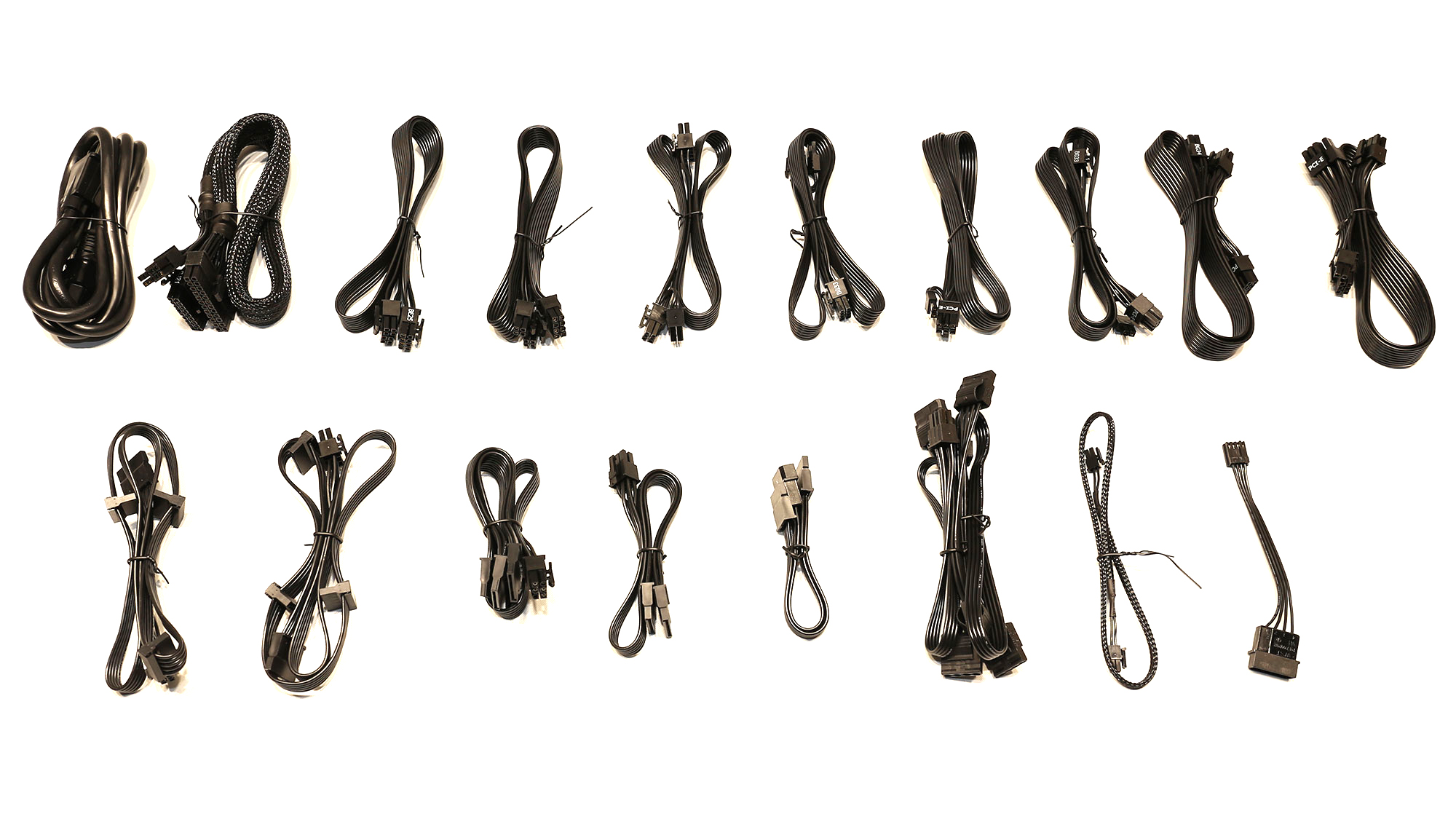
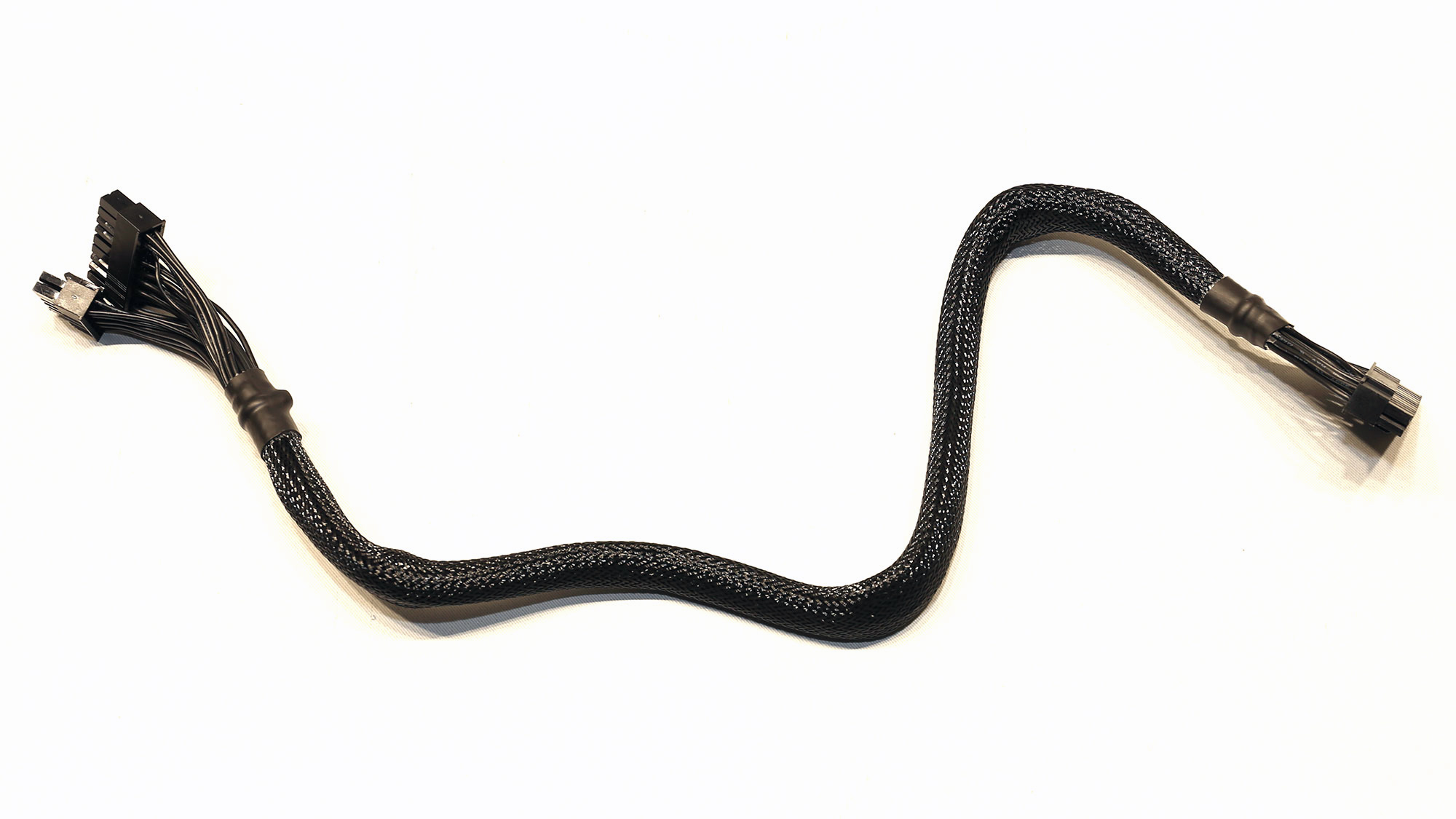
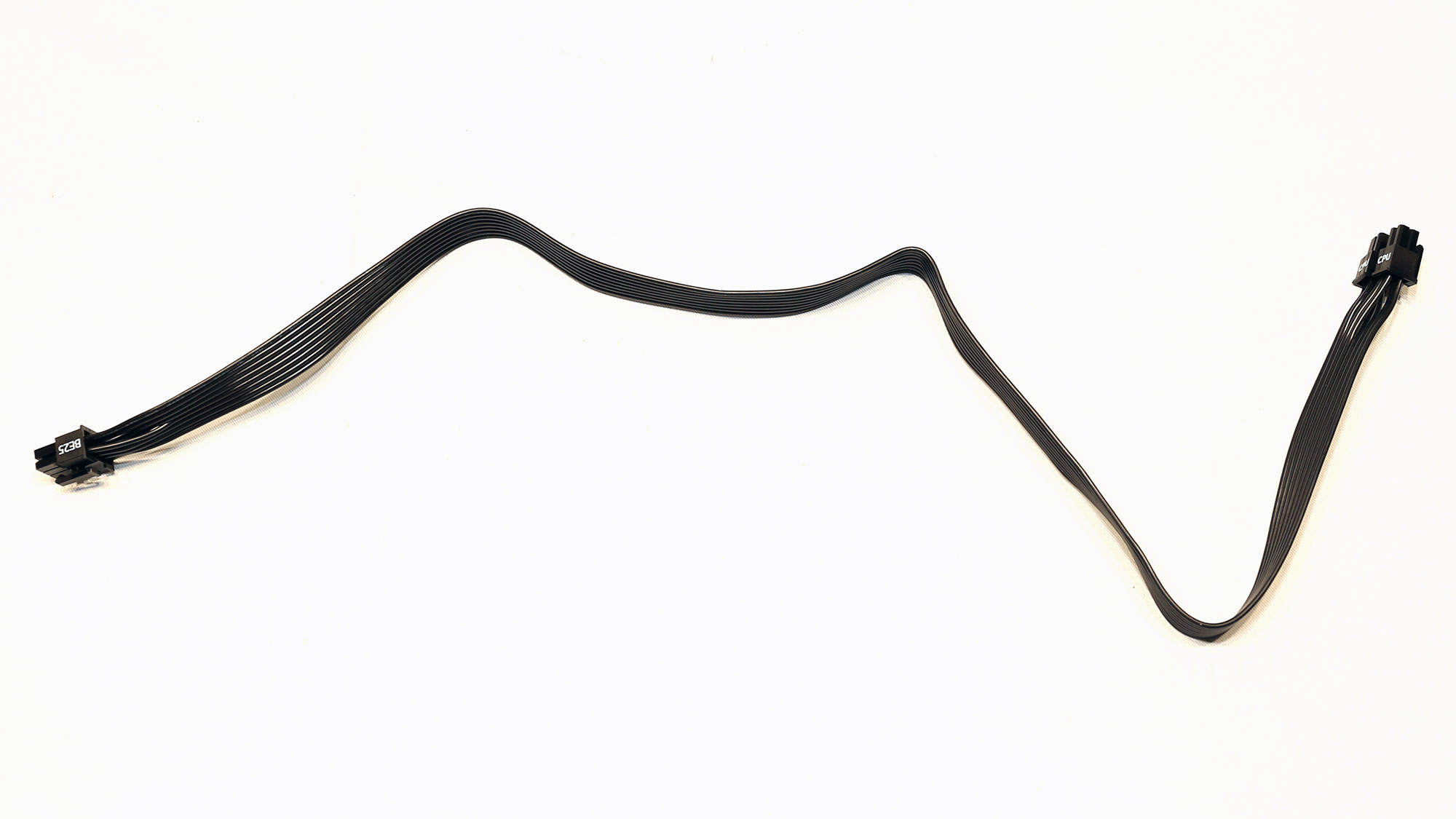
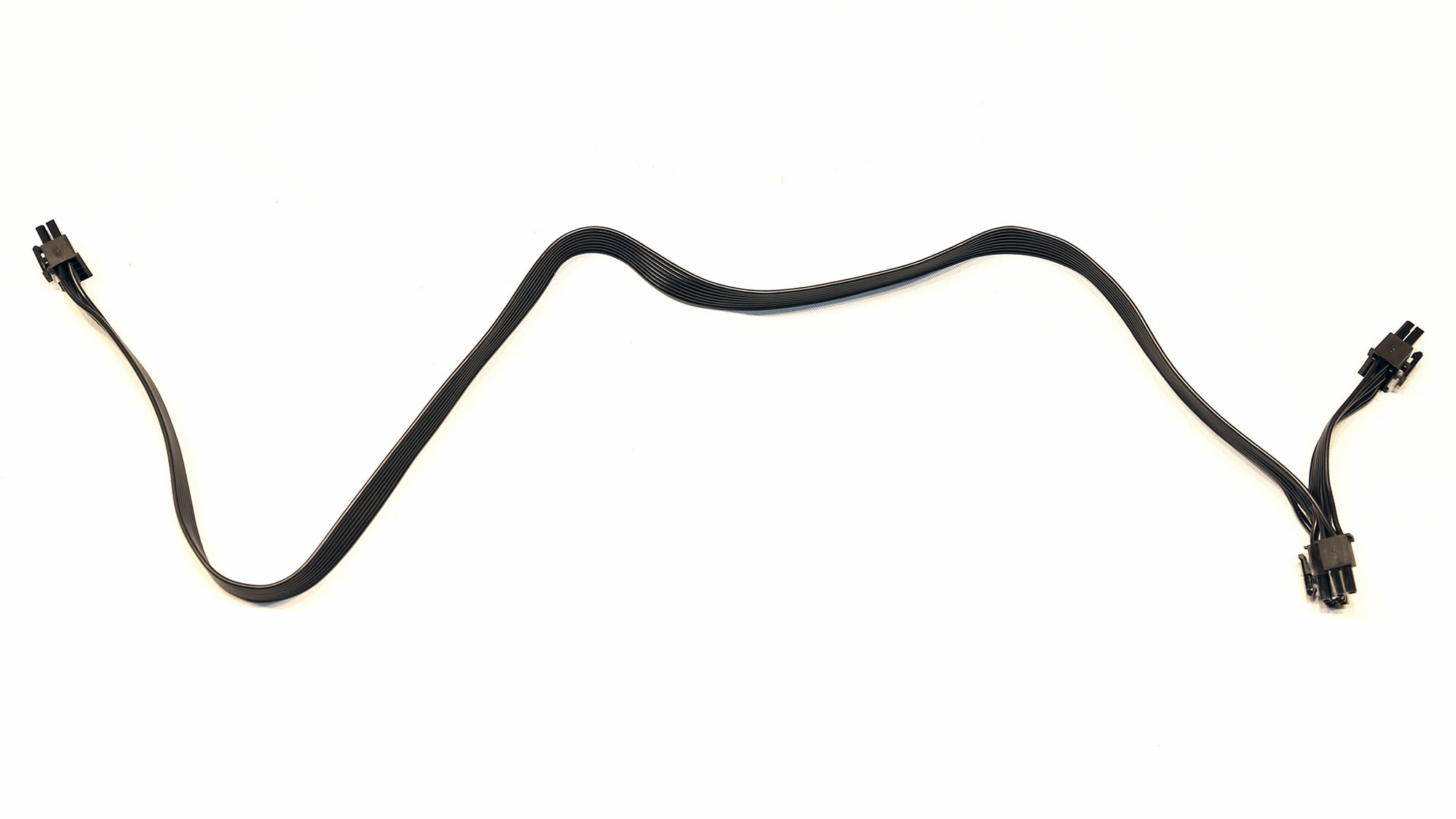
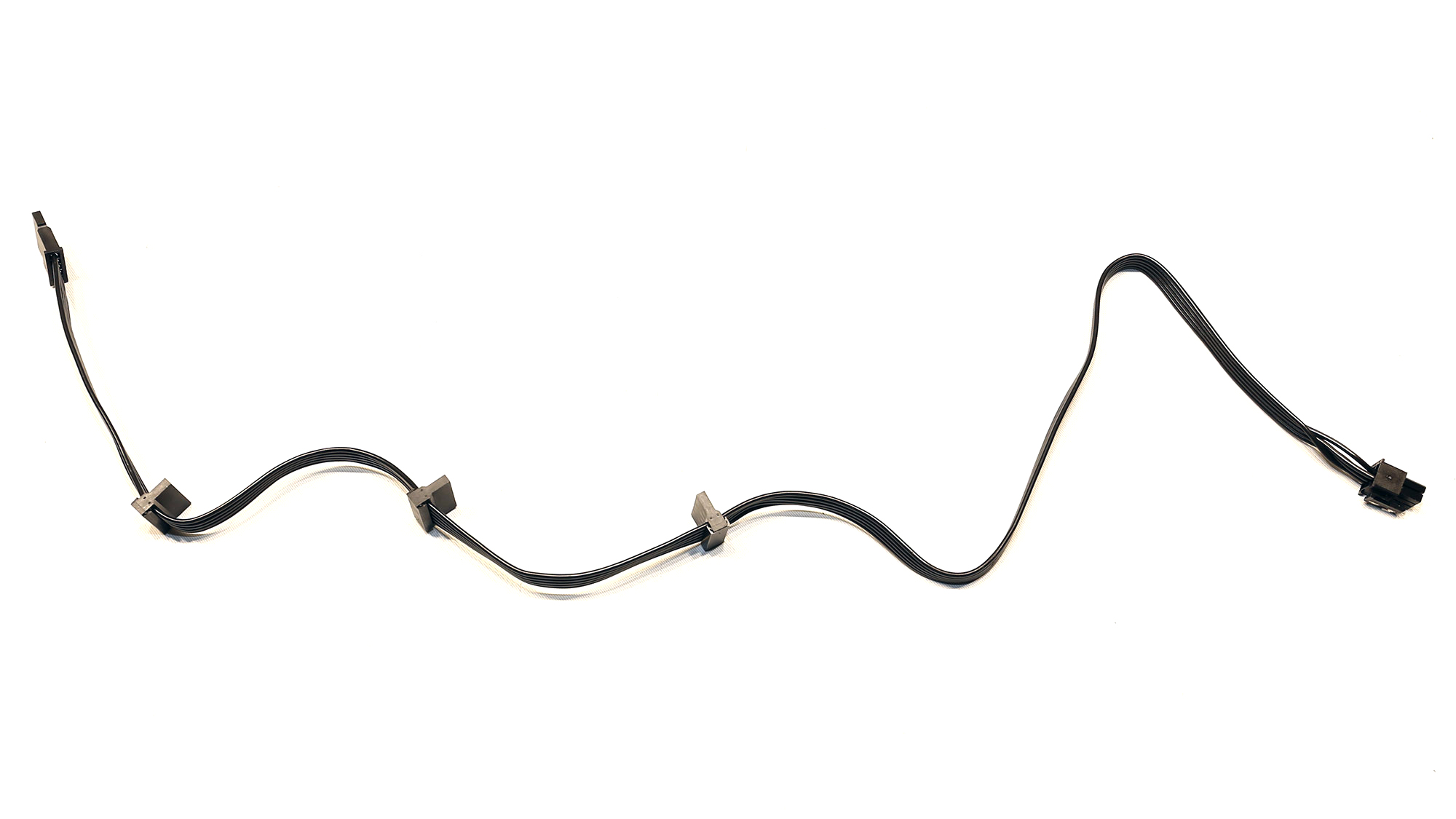
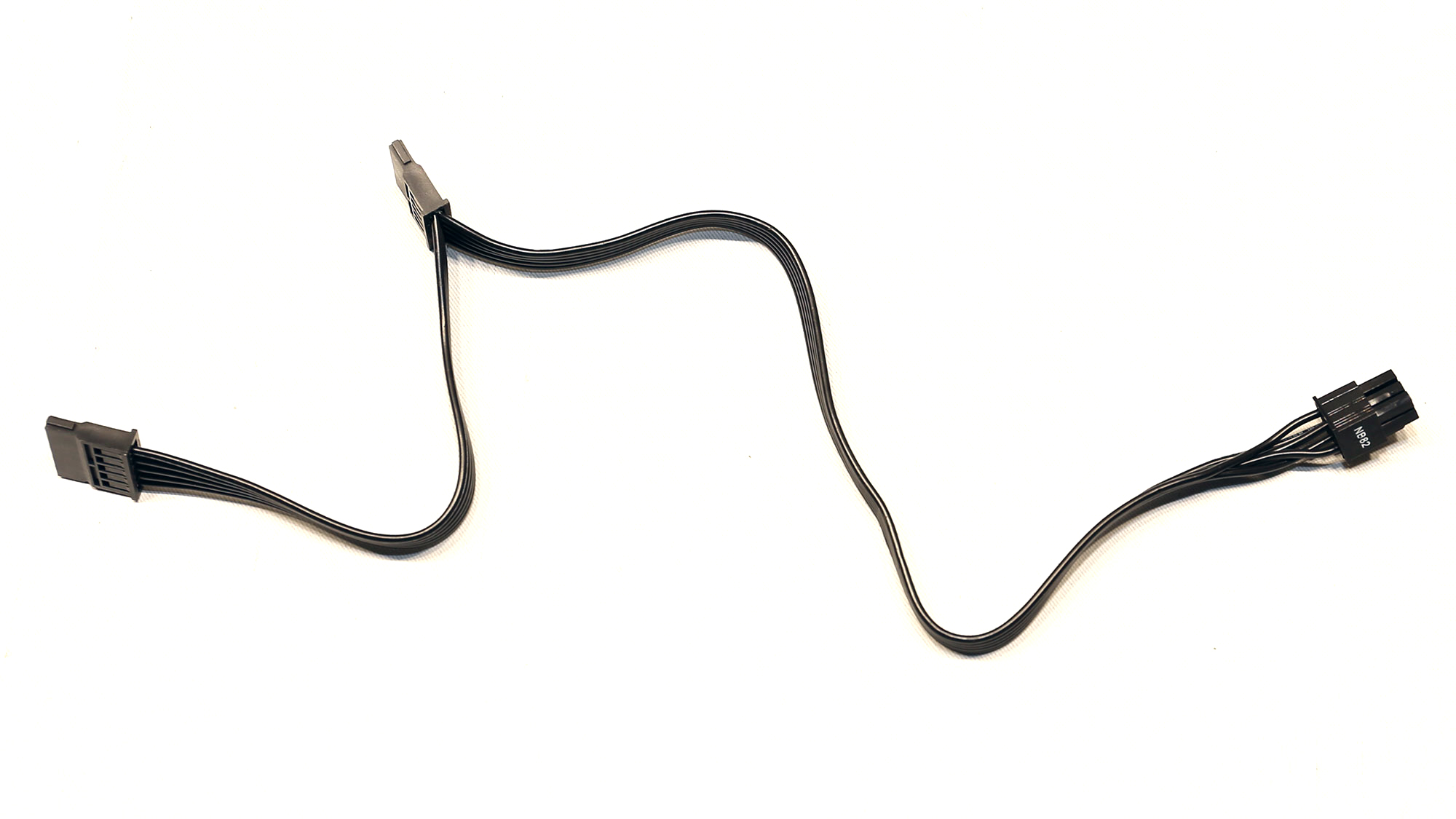
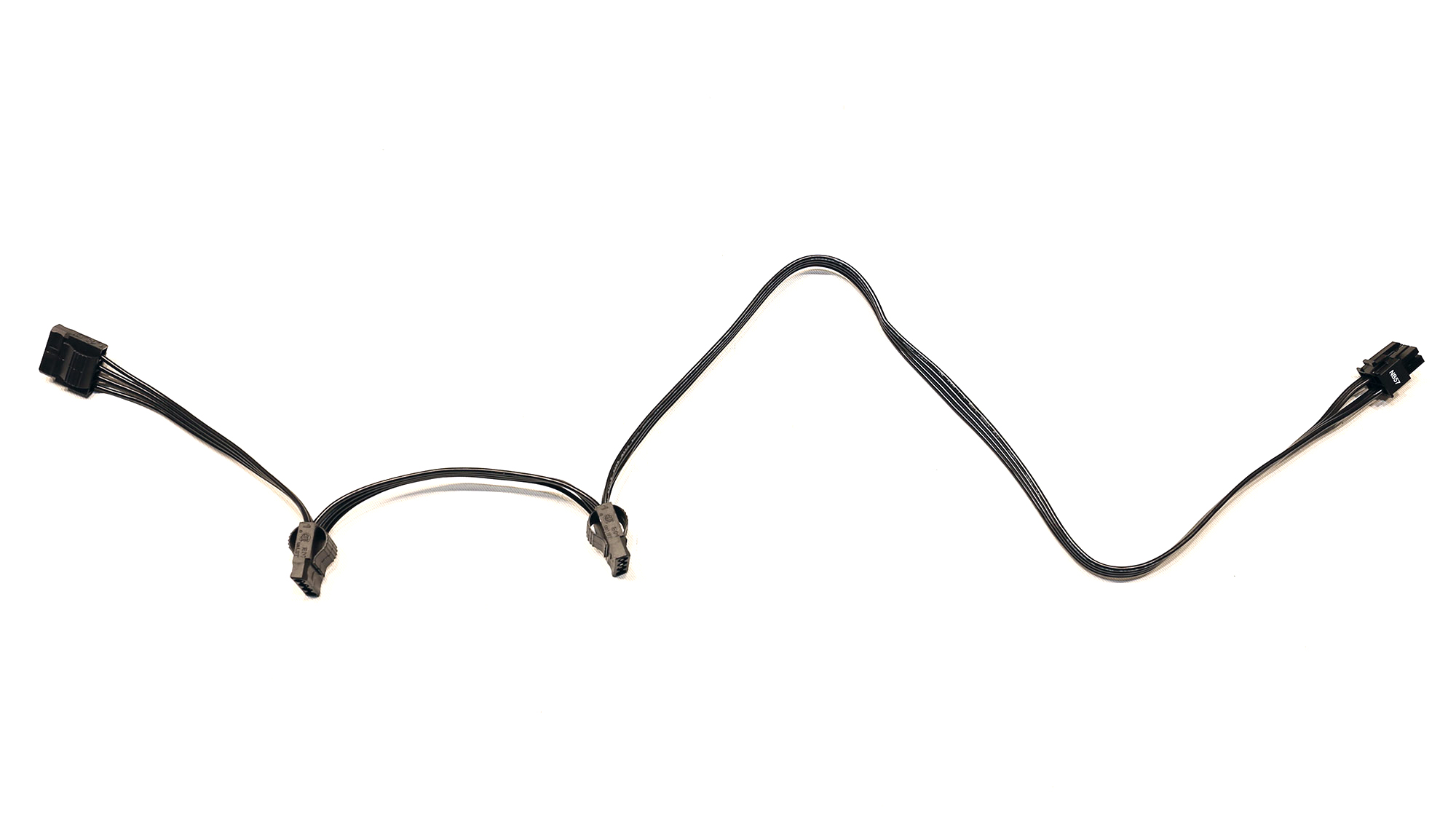
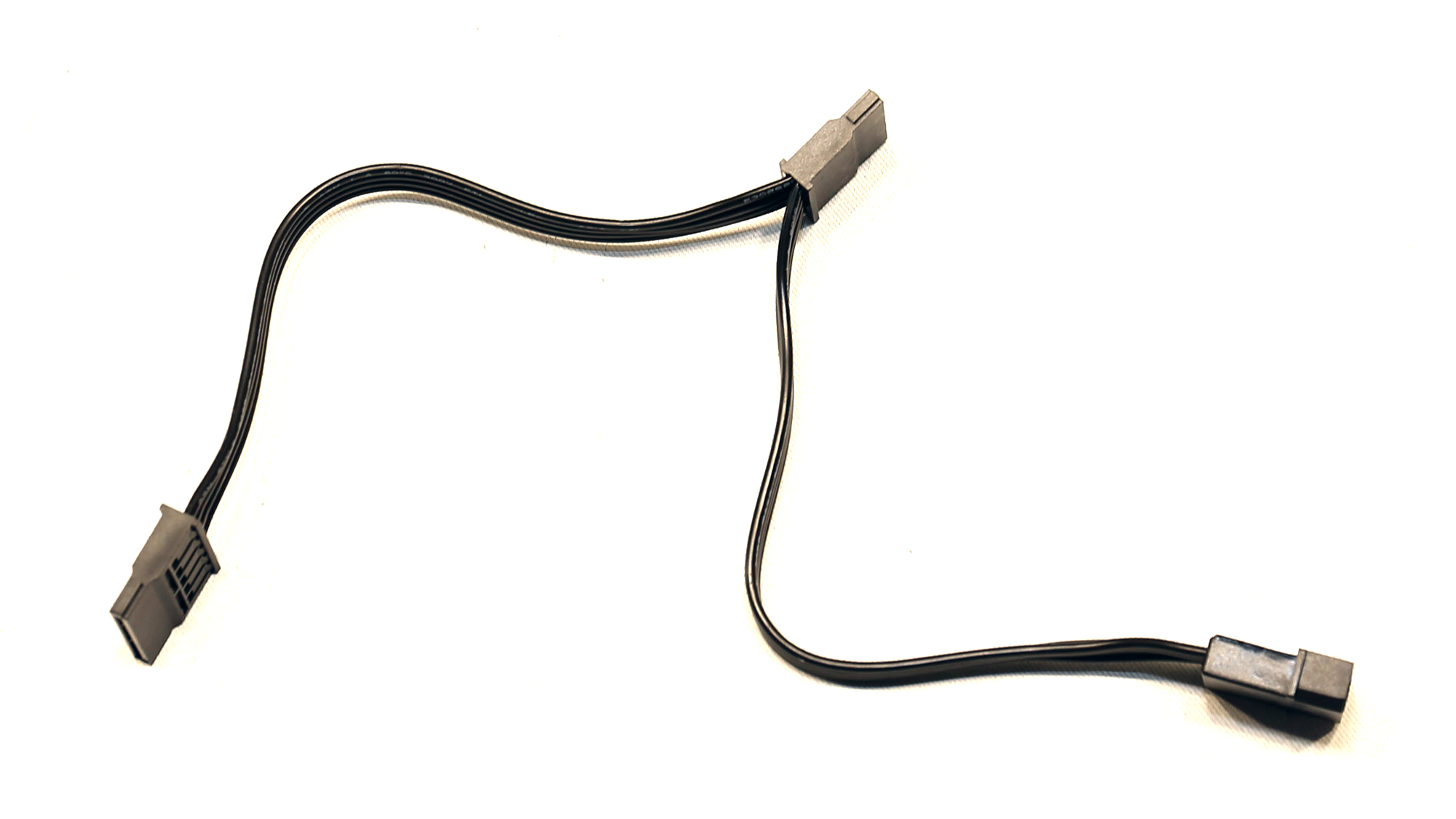
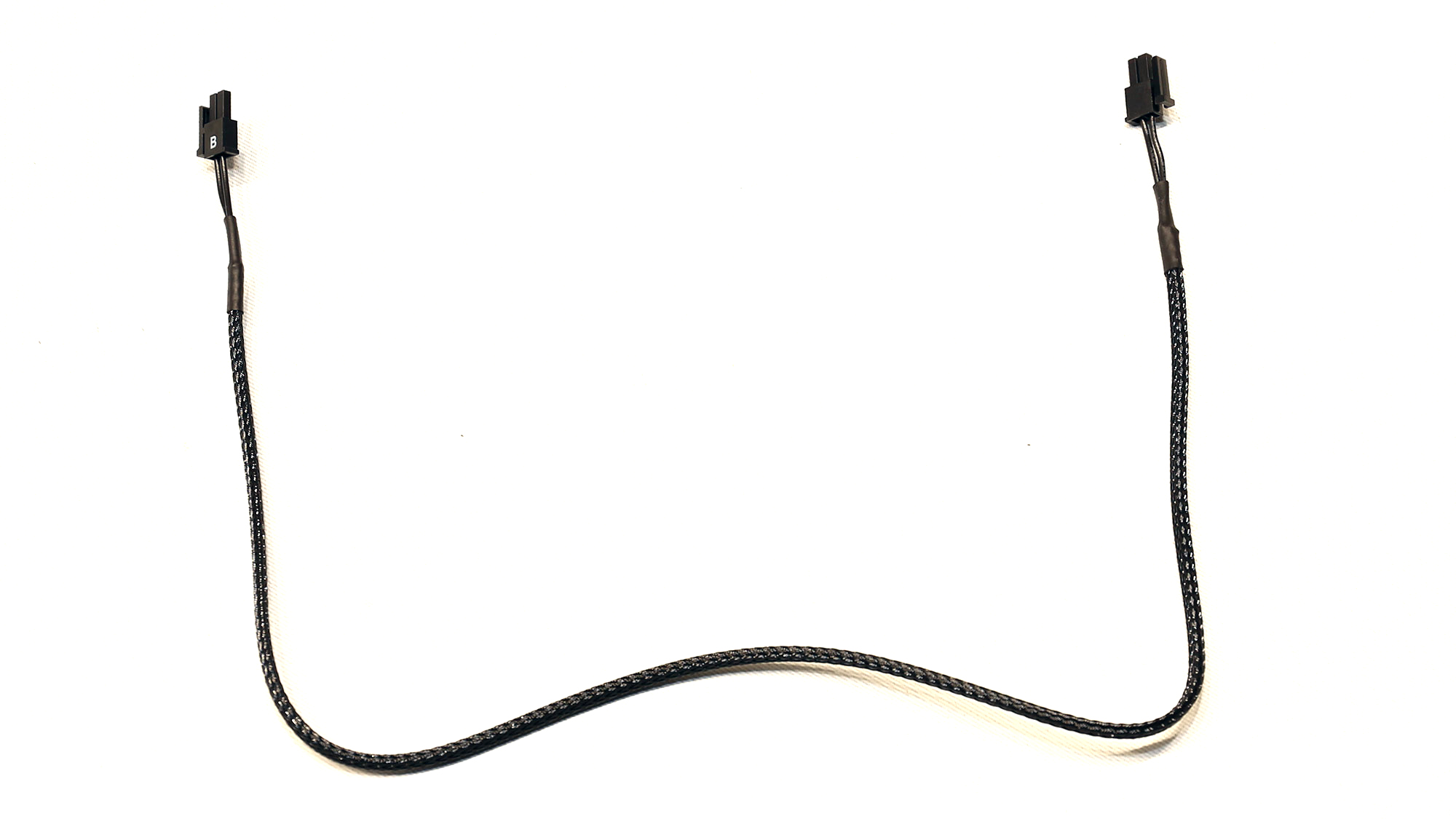
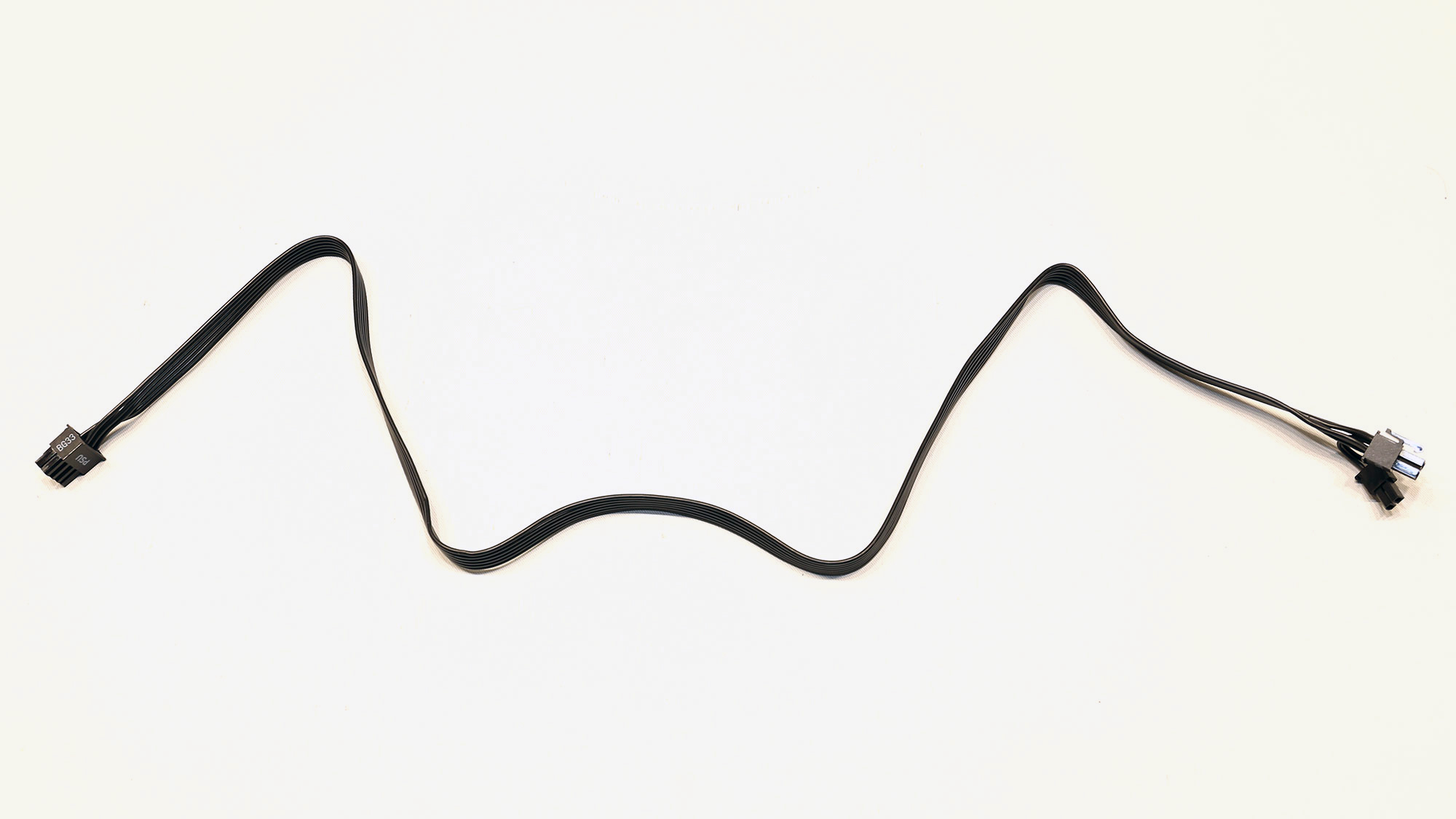
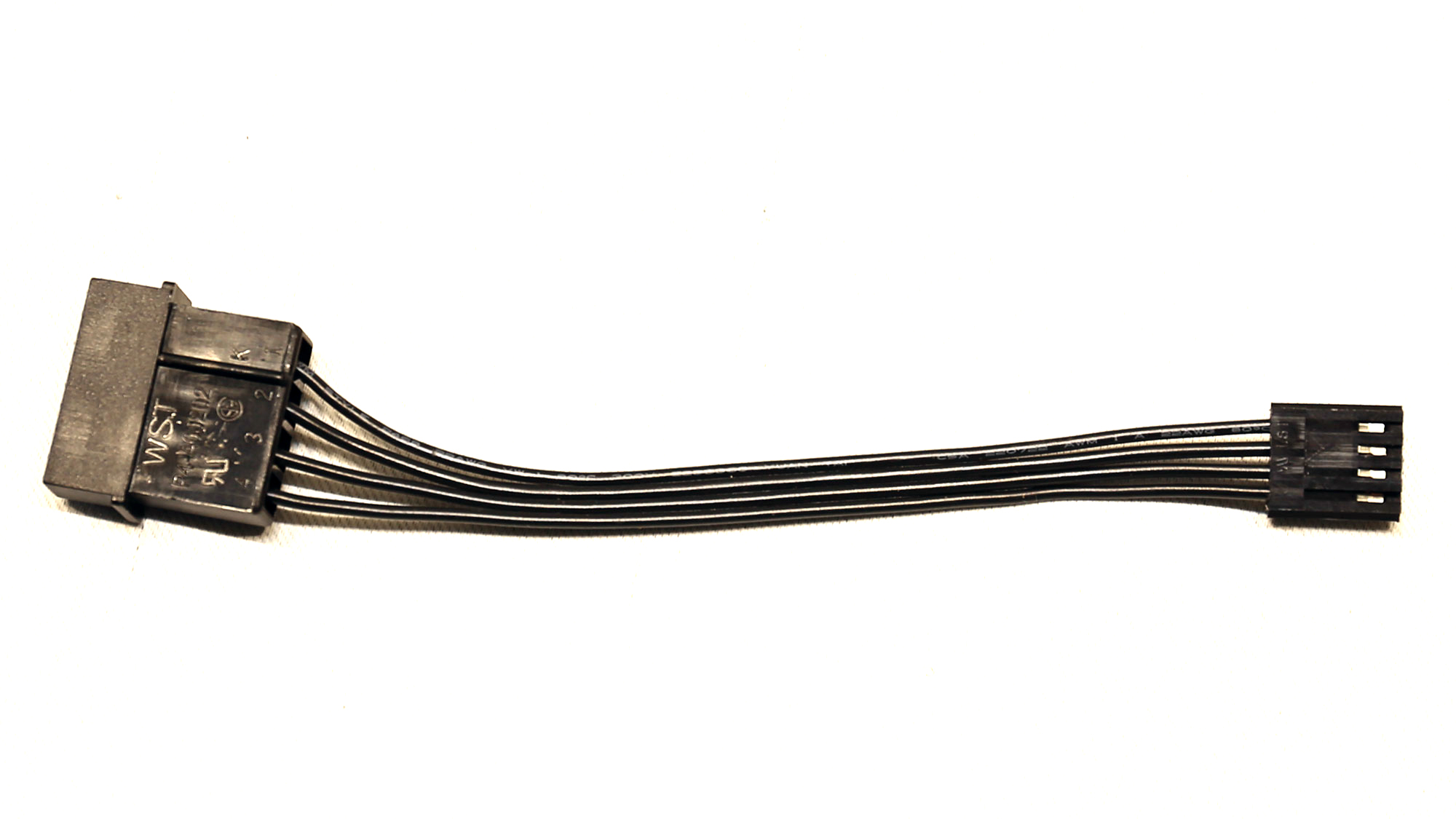
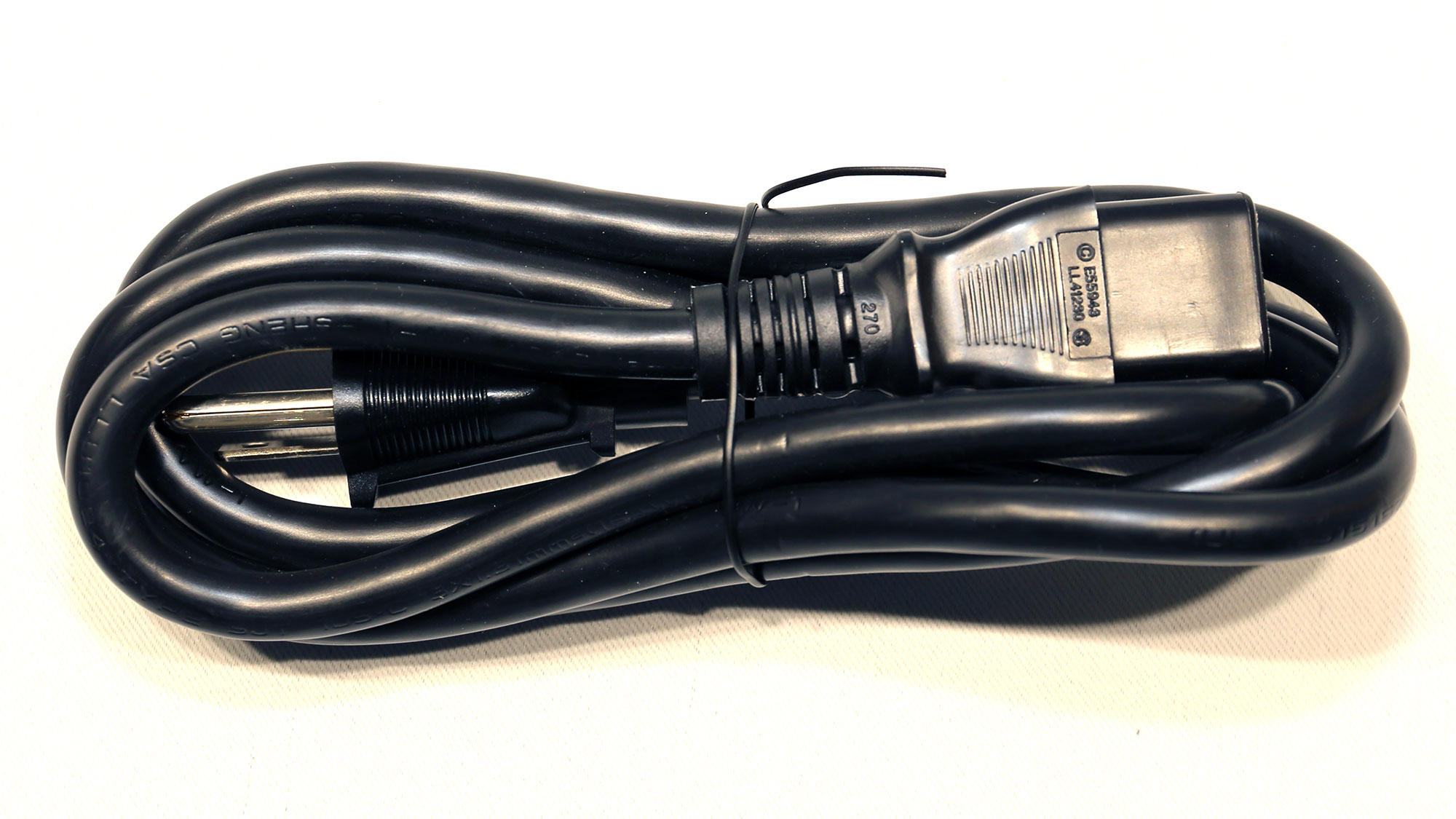
Component Analysis
We strongly encourage you to have a look at our PSUs 101 article, which provides valuable information about PSUs and their operation, allowing you to better understand the components we're about to discuss.
| General Data | - |
|---|---|
| Manufacturer (OEM) | Seasonic |
| PCB Type | Double Sided |
| Primary Side | - |
| Transient Filter | 6x Y caps, 3x X caps, 2x CM chokes, 1x MOV, 1x Discharger IC |
| Inrush Protection | NTC Thermistor (MF72 5D-20) & Relay |
| Bridge Rectifier(s) | 2x LVB2560 (600V, 25A @ 105°C) |
| APFC MOSFETs | 2x Infineon IPP60R099C7 (650V, 14A @ 100°C, 0.099Ohm) |
| APFC Boost Diode | 1x STPSC10H065D (650V, 10A @ 135°C) |
| Hold-up Cap(s) | 1x Rubycon (400V, 820uF, 3,000h @ 105°C, MXK) & 1x Rubycon (400V, 470uF, 2,000h @ 105°C, MXH) |
| Main Switchers | 4x Infineon IPP50R140CP (550V, 15A @ 100°C, 0.14 Ohm) |
|
IC Drivers |
2x Silicon Labs Si8230BD |
| APFC Controller | ON Semiconductor NPC1654 |
| Resonant Controller | Champion CM6901T2 |
| Topology | Primary side: Full-Bridge & LLC converter Secondary side: Synchronous Rectification & DC-DC converters |
| Secondary Side | - |
| +12V MOSFETs | 6x SiR638DP (40V, 100A @ 70°C, 0.88mOhm) |
| 5V & 3.3V | DC-DC Converters: no info PWM Controllers: no info |
| Filtering Capacitors |
Electrolytic: 4x Nippon Chemi-Con (4-10,000h @ 105°C, KY), 4x Nippon Chemi-Con (105°C, W), 1x Rubycon (3-6,000h @ 105°C, YXG), 1x Nippon Chemi-Con (4-10,000h @ 105°C, KYB), 1x Nippon Chemi-Con (1-5,000h @ 105°C, KZE), 1x Nippon Chemi-Con (5-6,000h @ 105°C, KZH) |
| Supervisor IC | Weltrend WT7527V (OVP, UVP, OCP, SCP, PG ) |
| Fan Model | Hong Hua HA13525M12F-Z (135mm, 12V, 0.36A, Fluid DynamicBearing Fan) |
| 5VSB Circuit | - |
| Rectifiers |
1x STMicroelectronics STF6N65K3 (650V, 3A @ 100°C, 1.3Ohm) & 1x M.C.C MBR1045ULPS SBR (45V, 10A) |
| Standby PWM Controller | Leadtrend LD7750R |
| -12V Circuit | - |
| Buck Converter | Lite-On LSP5523 (3A max output current ) |
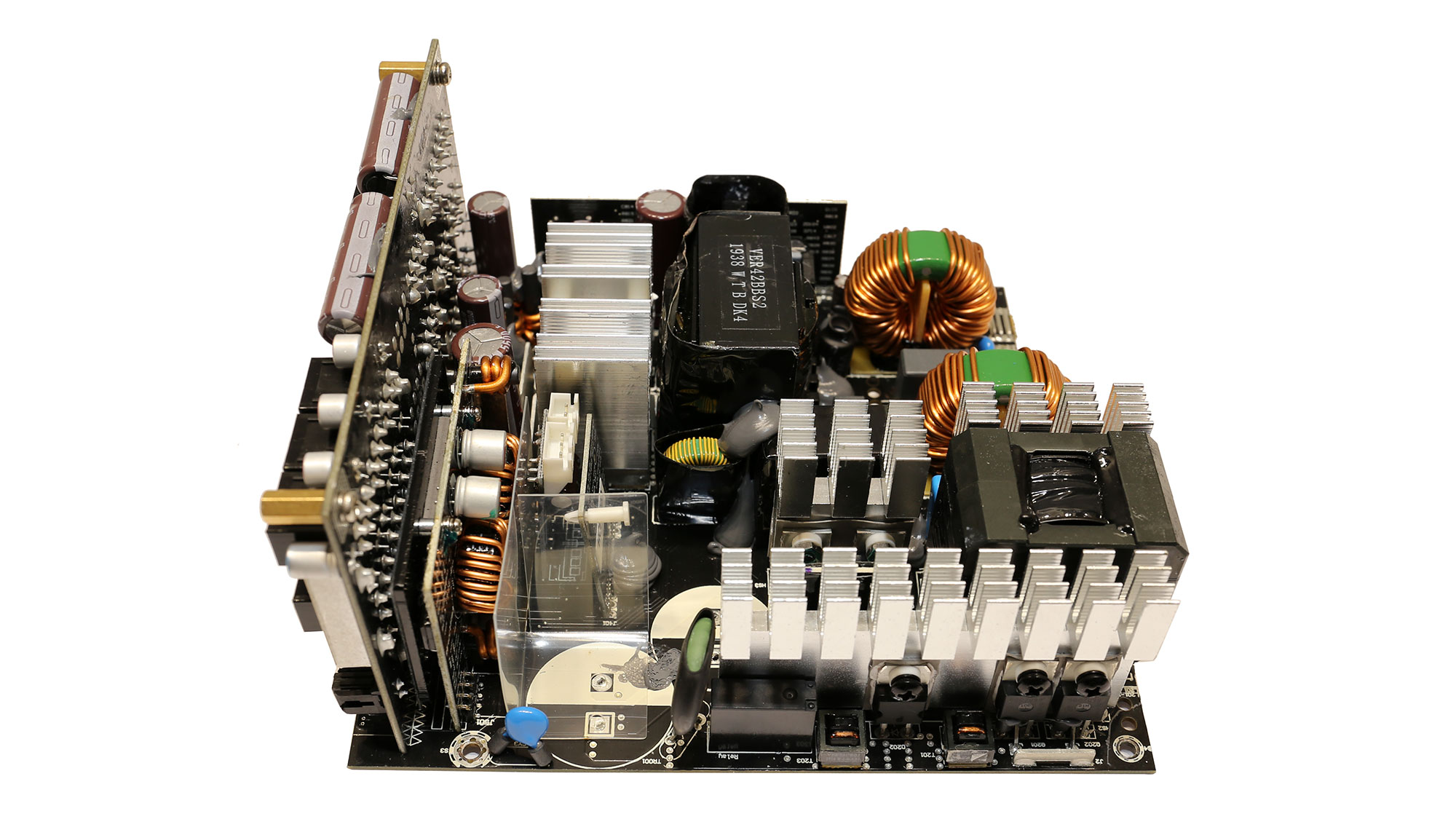
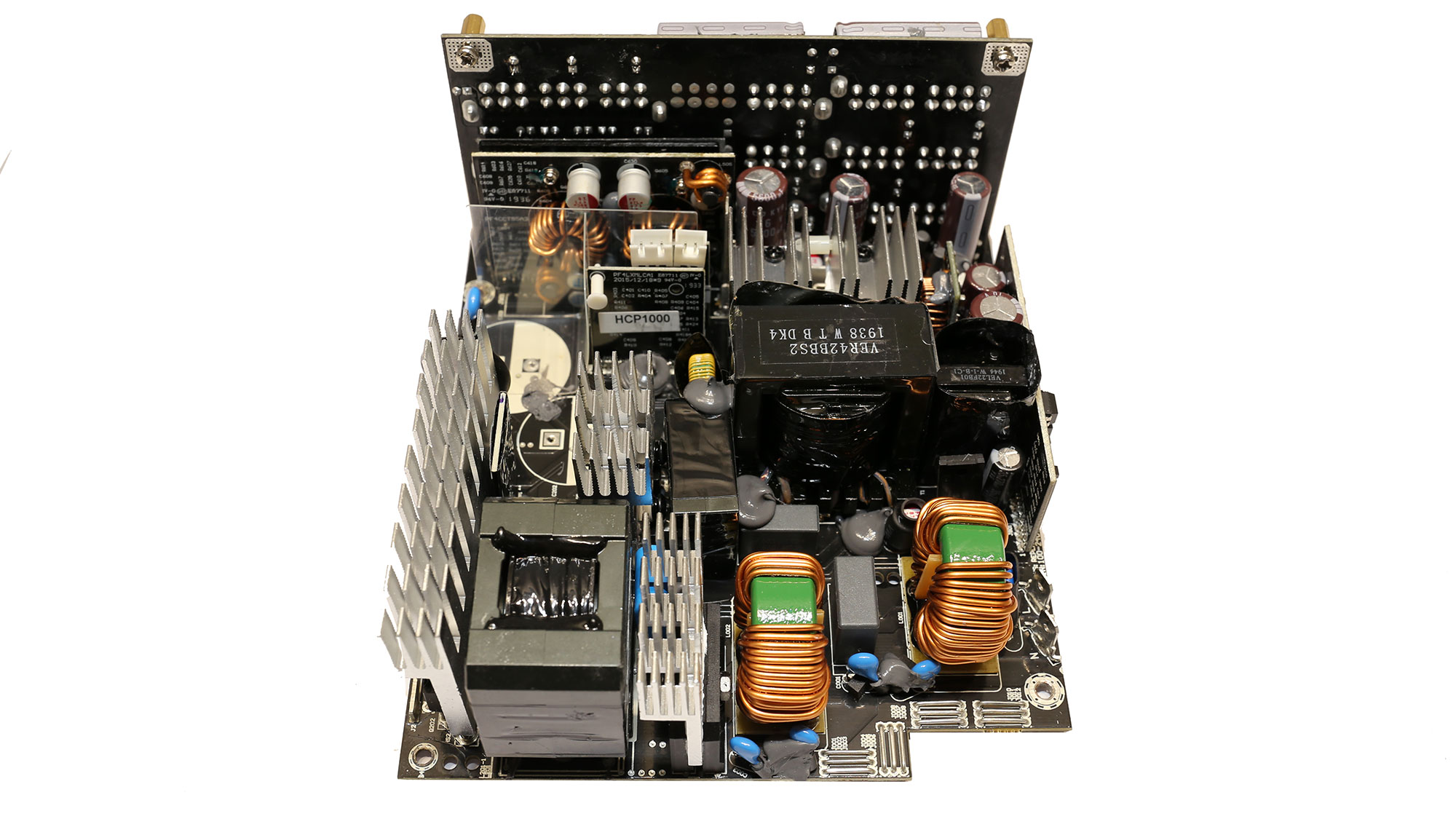
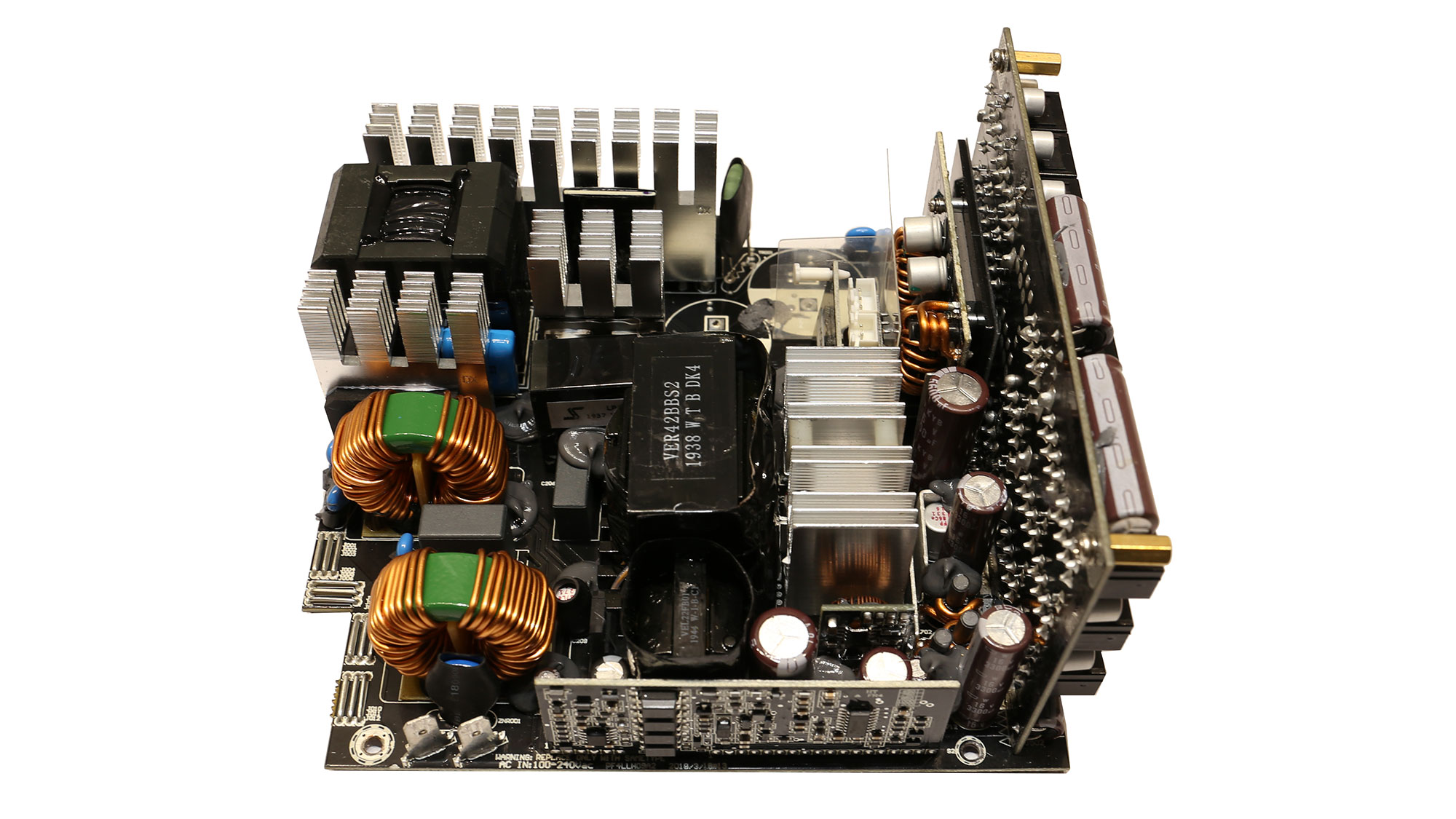
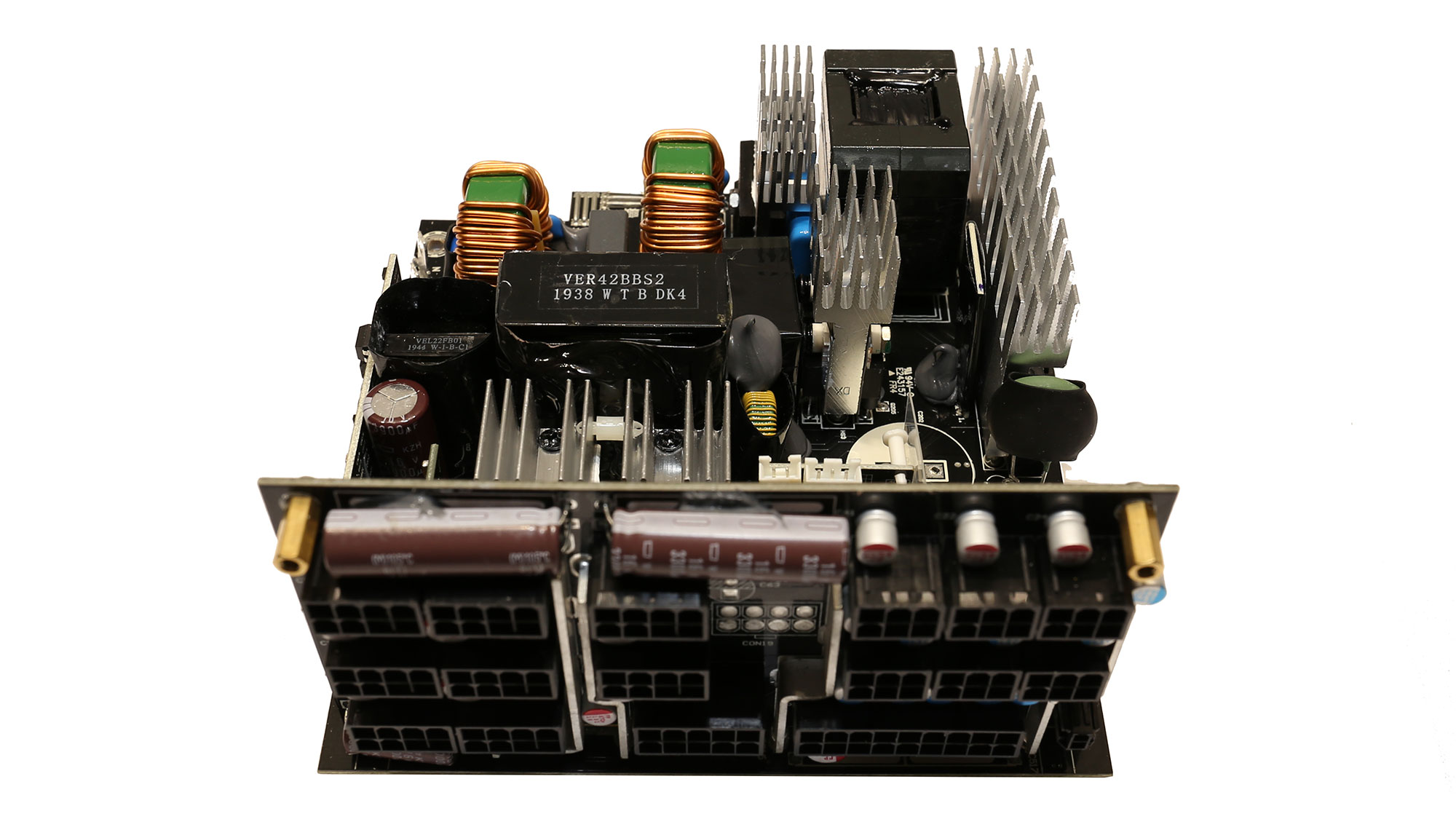
This unit uses a Seasonic Prime platform, which is among the best money can get you today. The design is cutting edge for an analog platform, and the build quality is top-notch. Seasonic used quality parts to achieve high performance and increased reliability. Most filtering caps belong to good Japanese lines, and the Hong Hua FDB fan has proved its reliability so far, while at the same time, it doesn't notably increase the production cost.
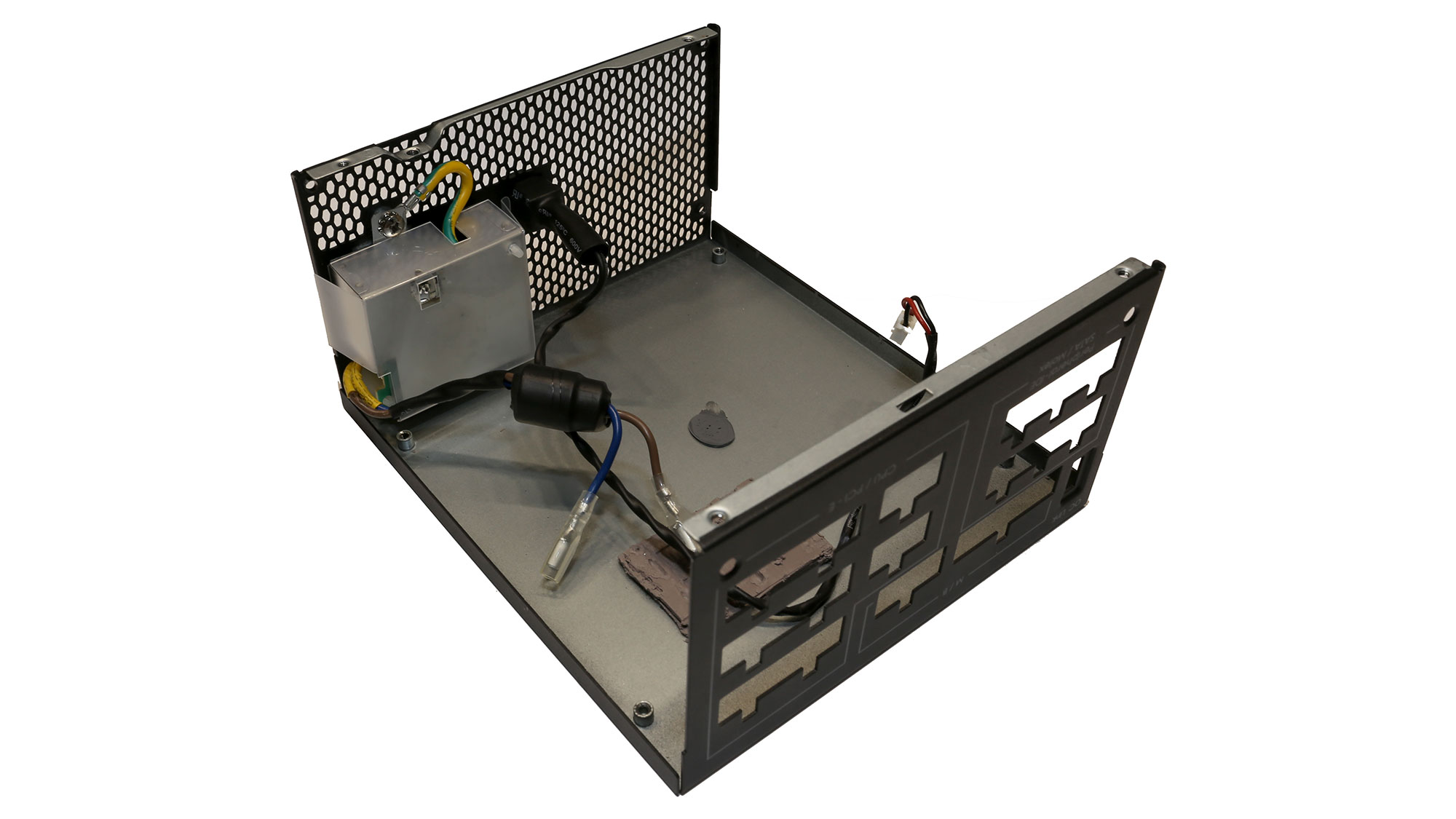
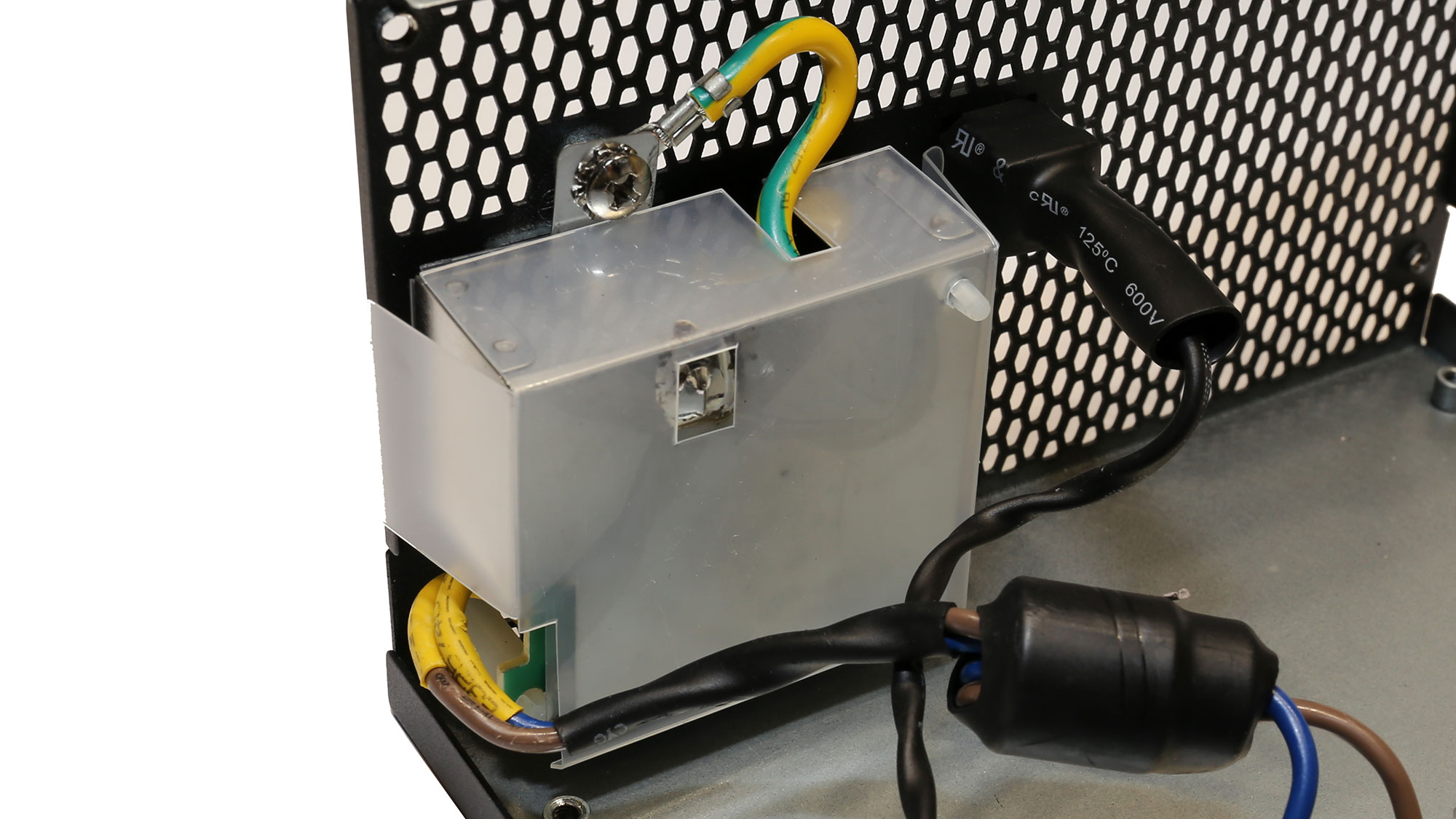
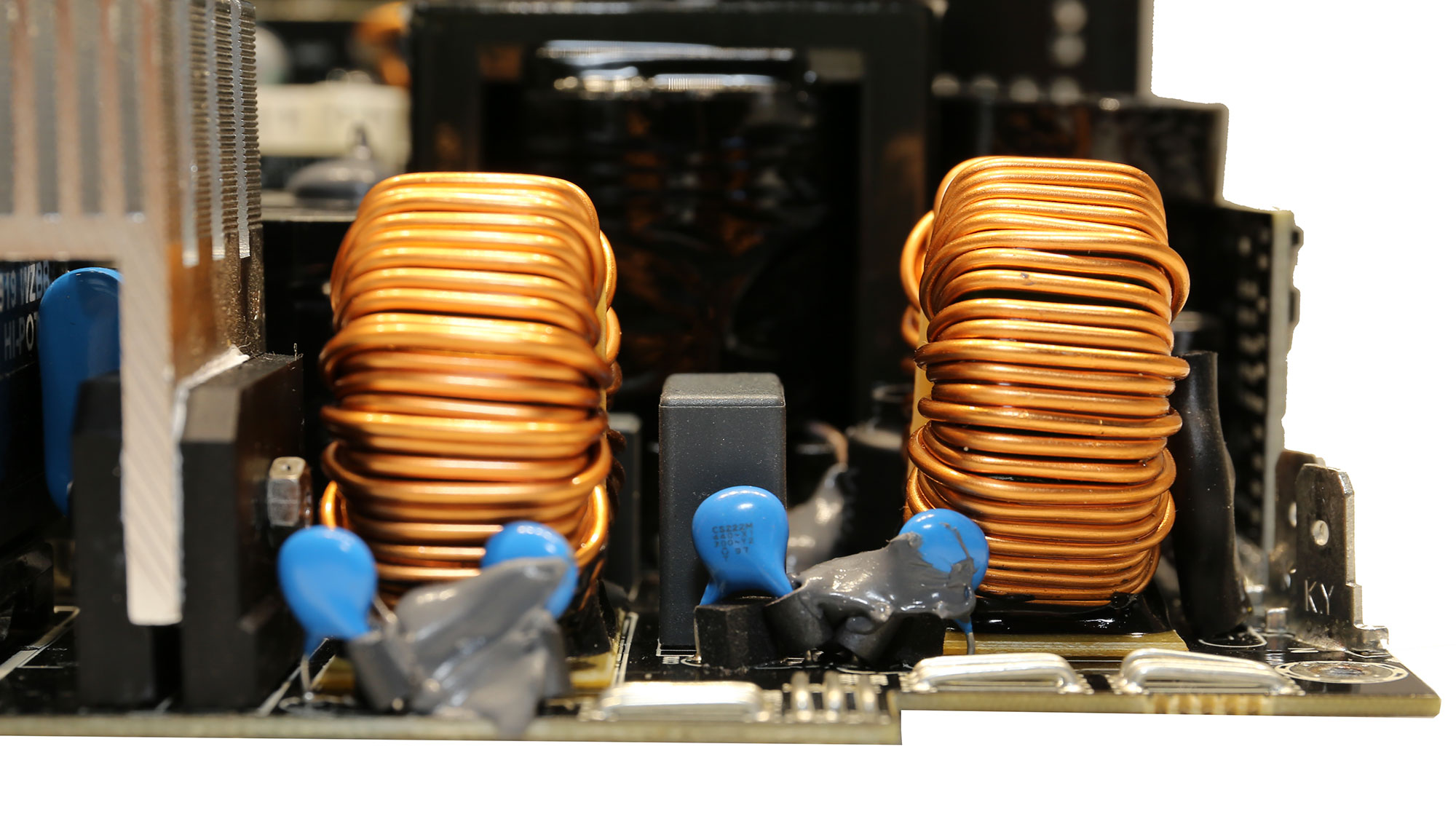
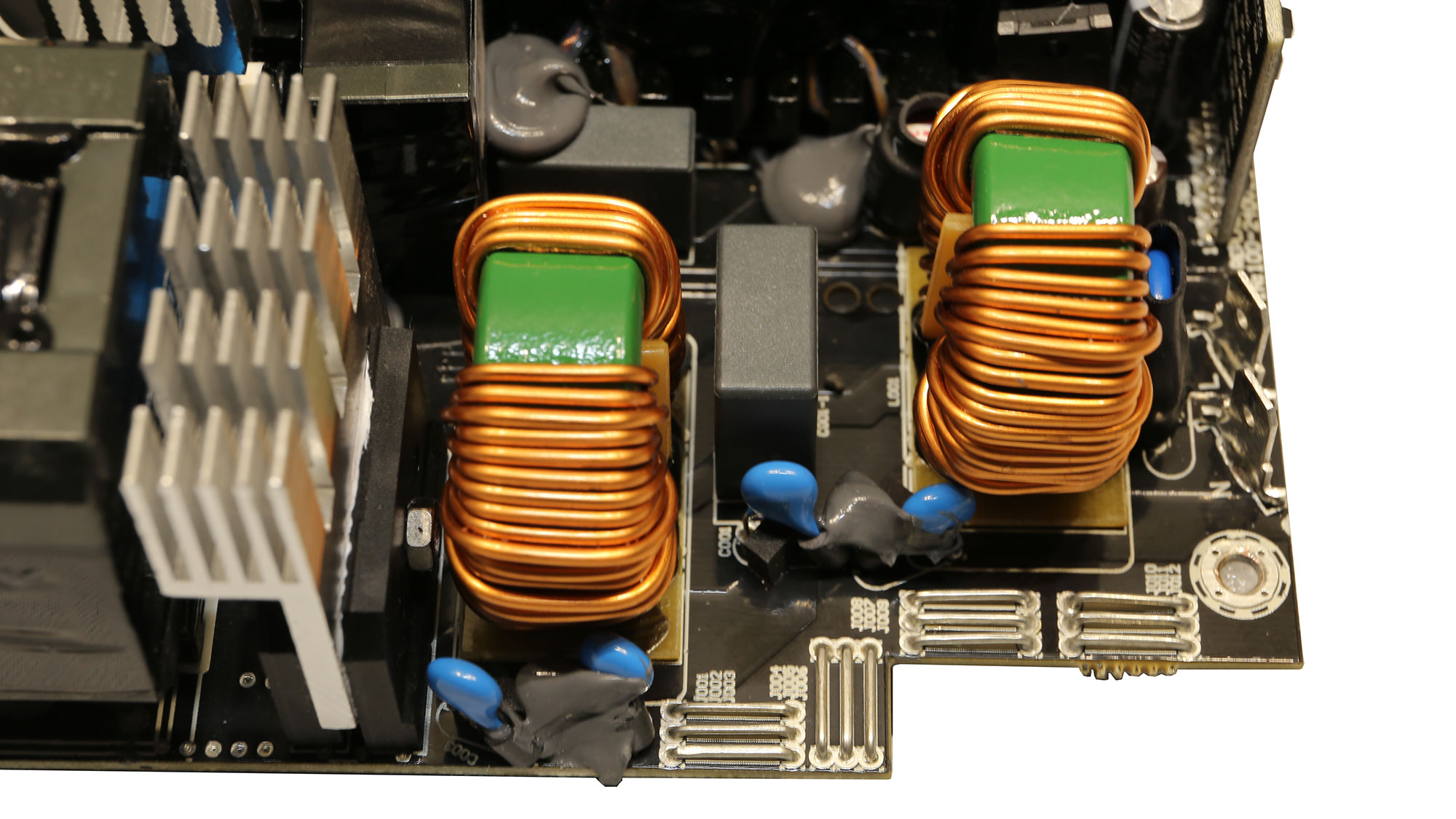
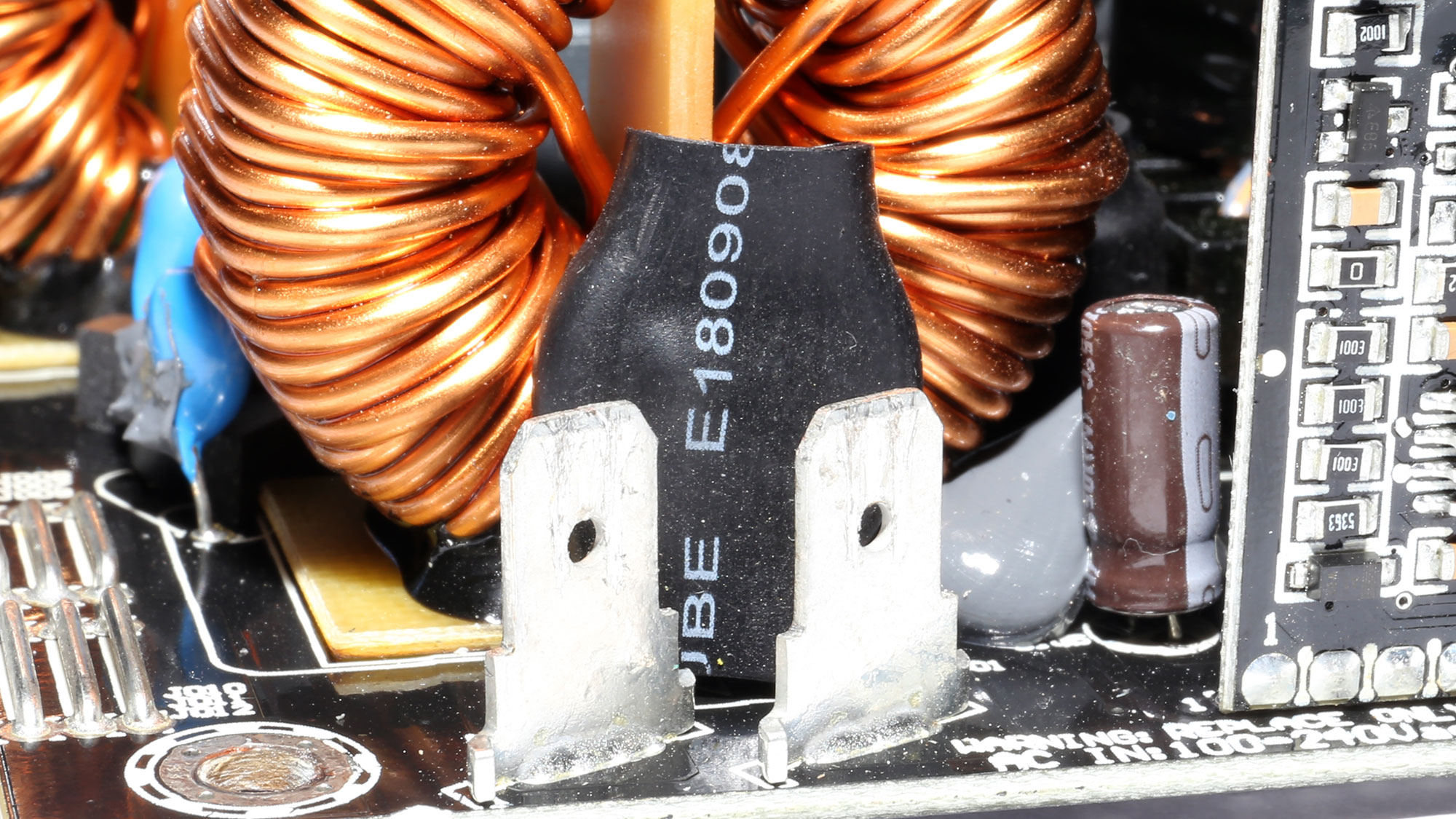
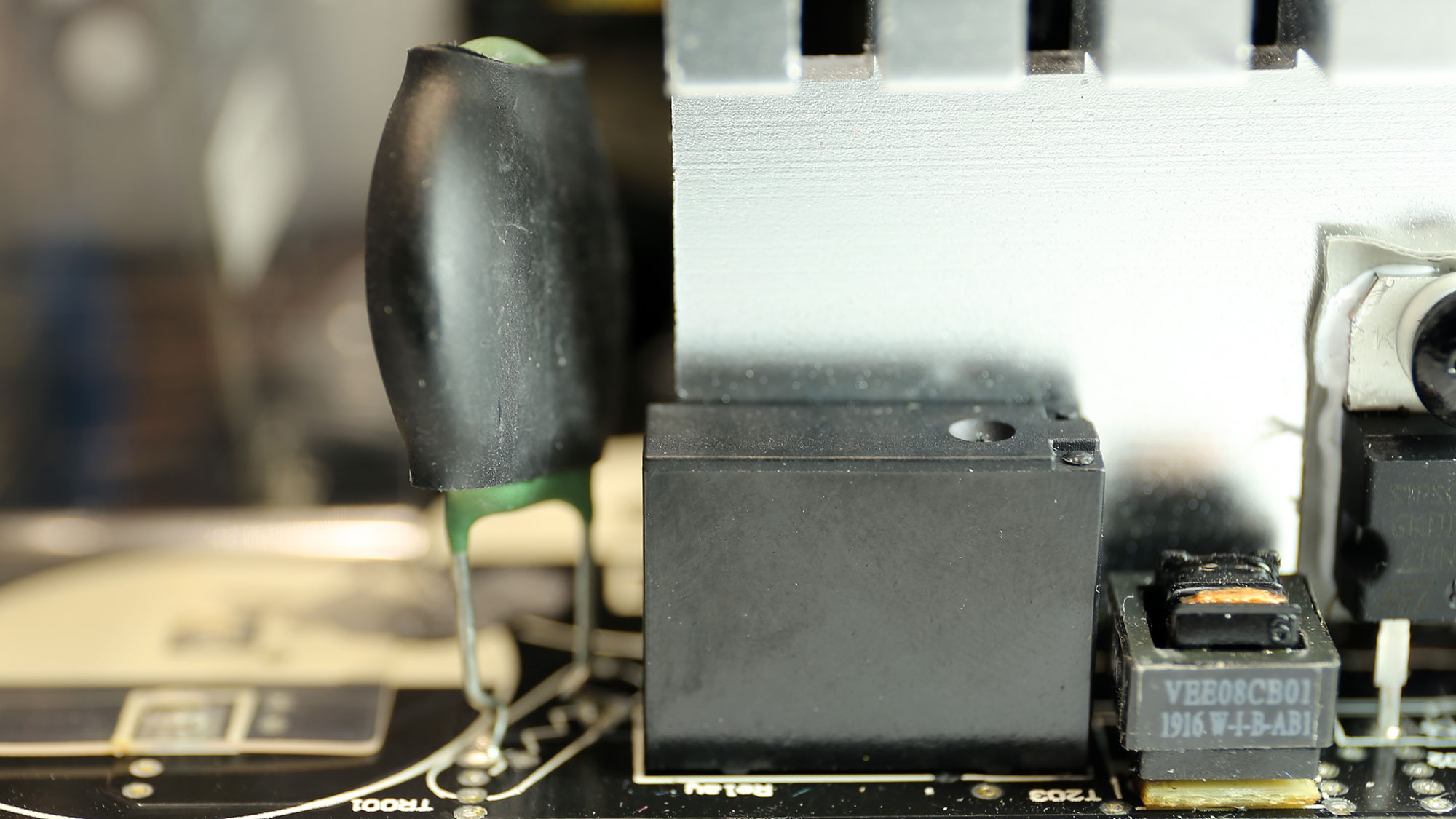
The first part of the transient filter is on a PCB that also holds the AC receptacle. This PCB is shielded to suppress EMI. The second part is located on the main PCB and includes an MOV, which handles voltage surges.
Get Tom's Hardware's best news and in-depth reviews, straight to your inbox.
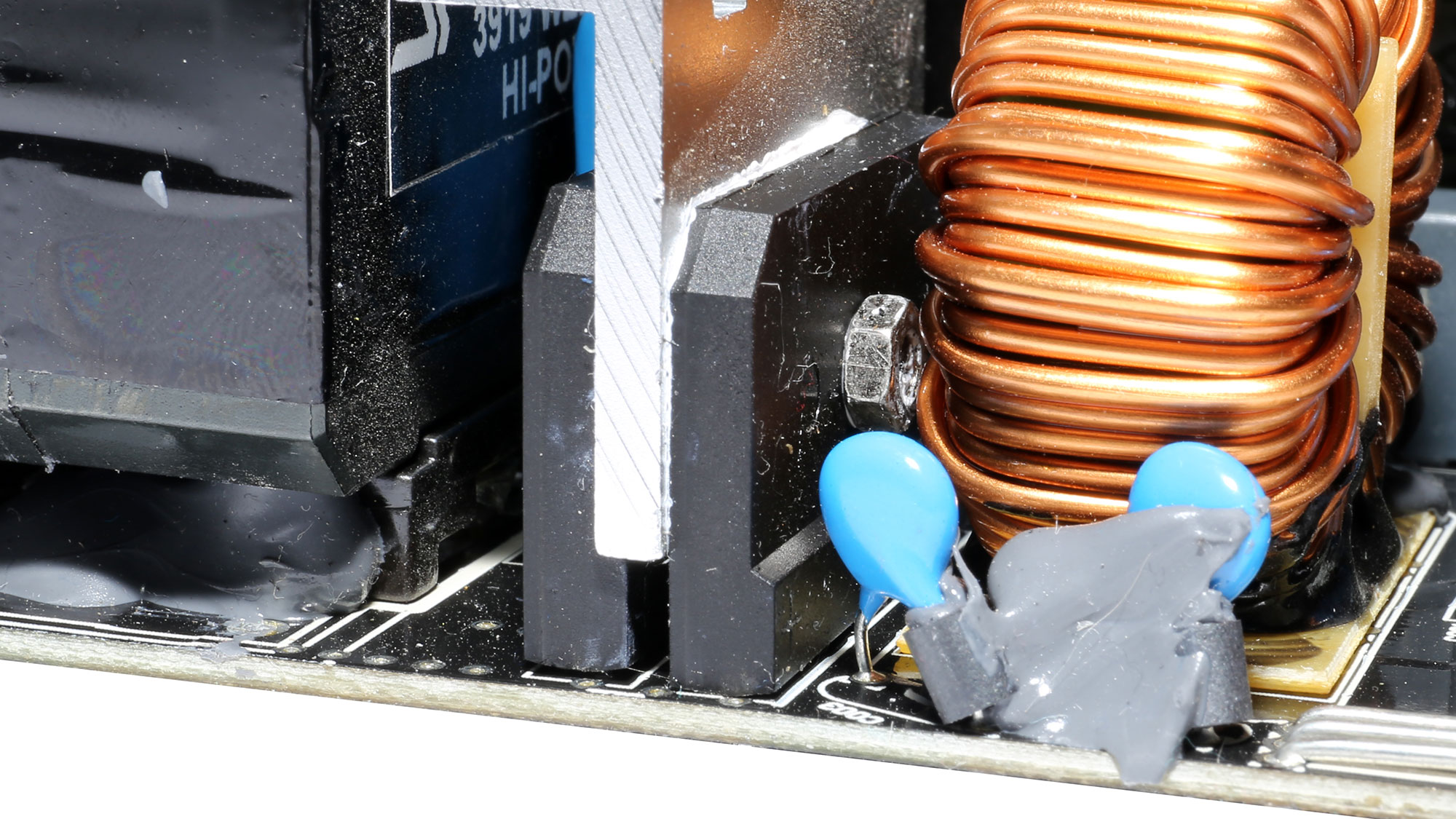
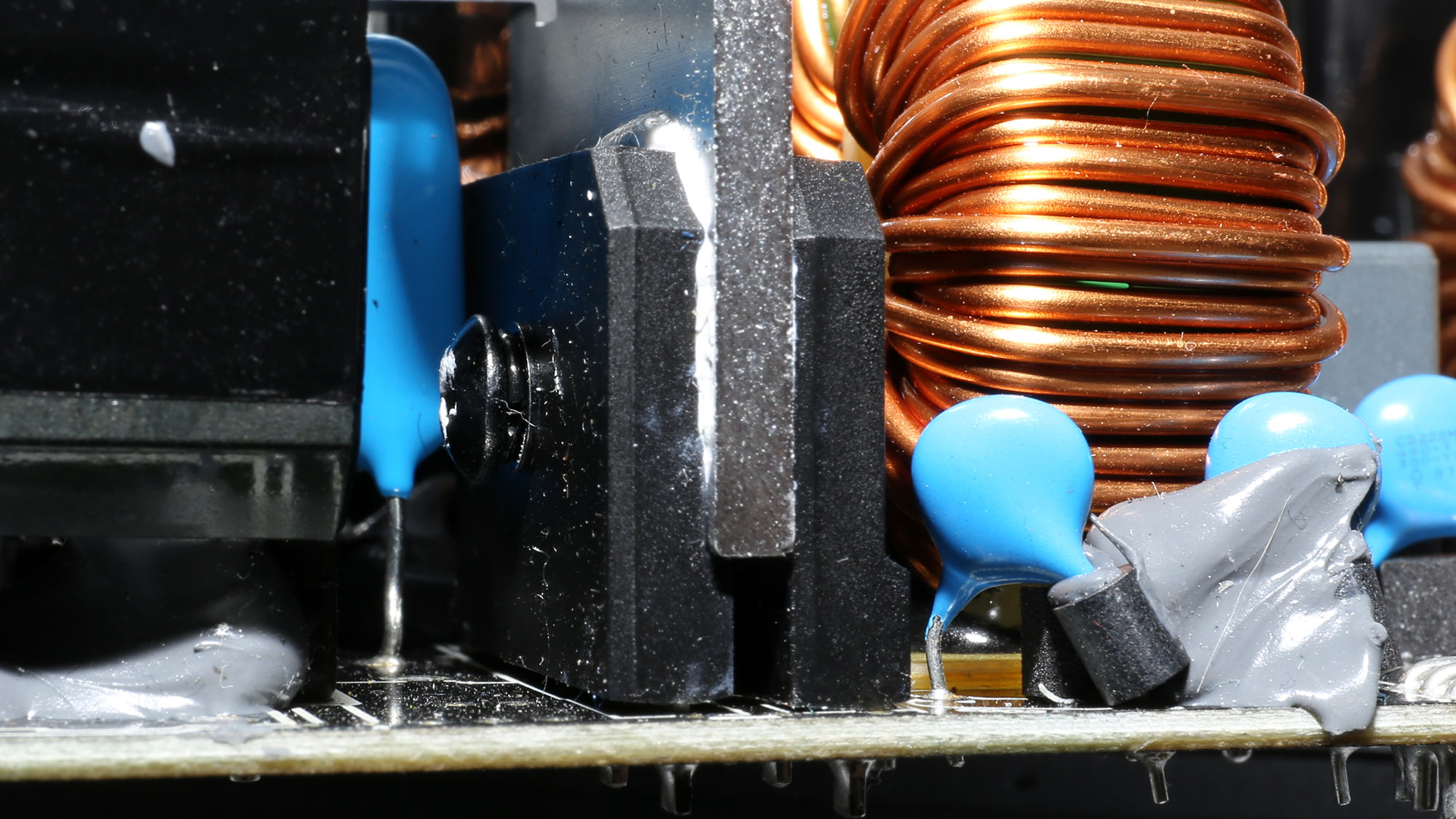
Two powerful bridge rectifiers are used, capable of handling up to 50A of current.
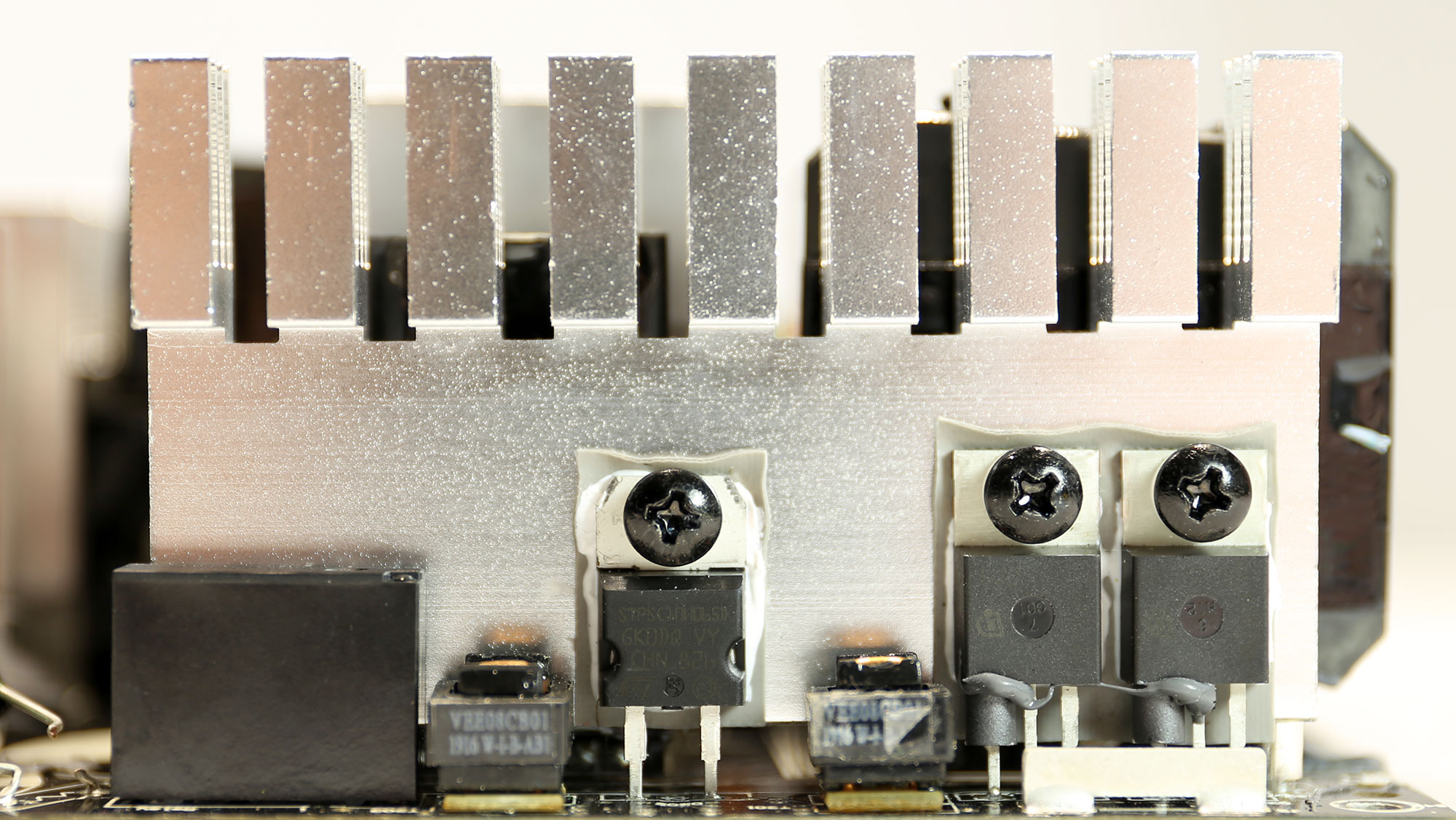
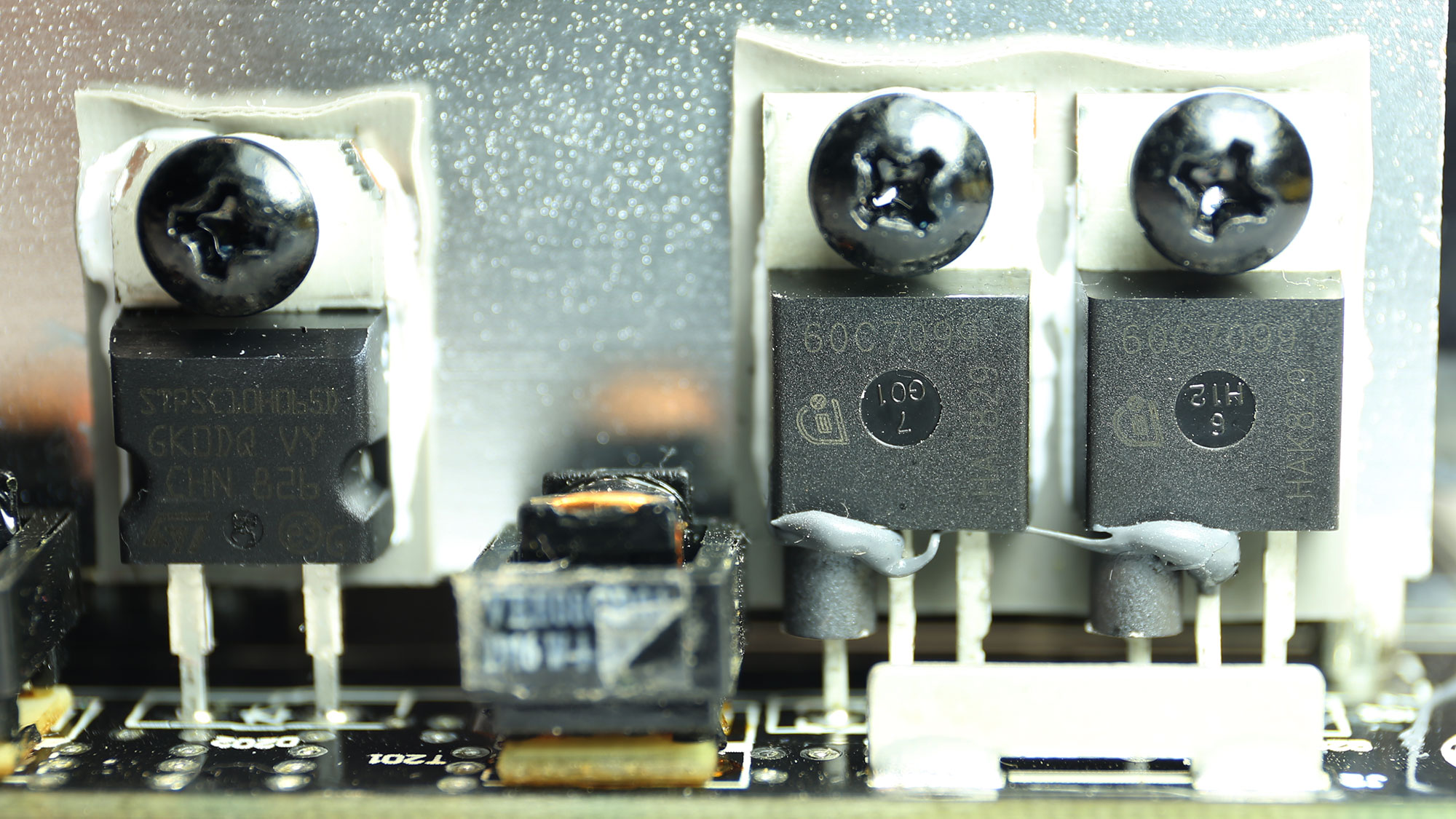
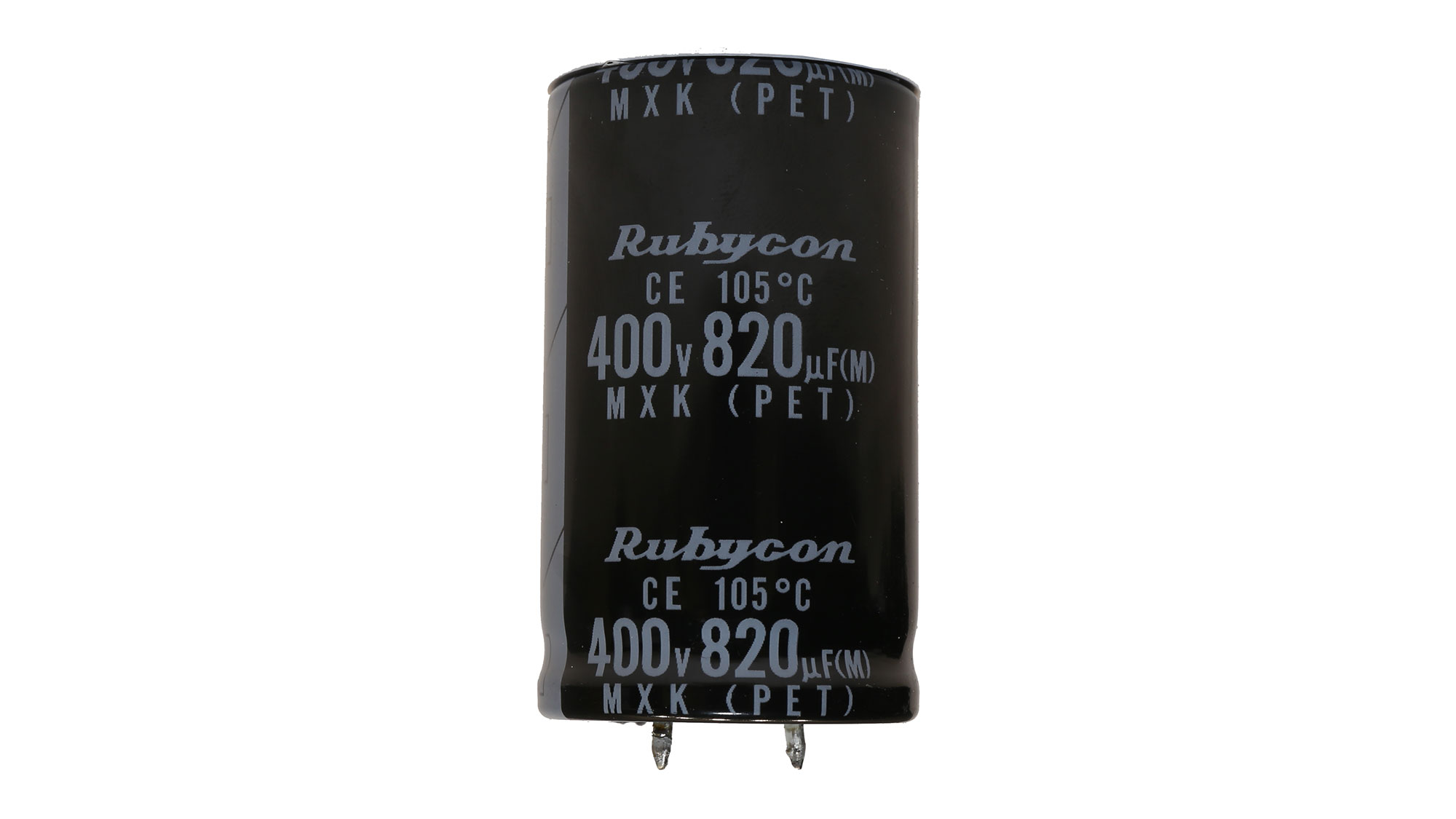
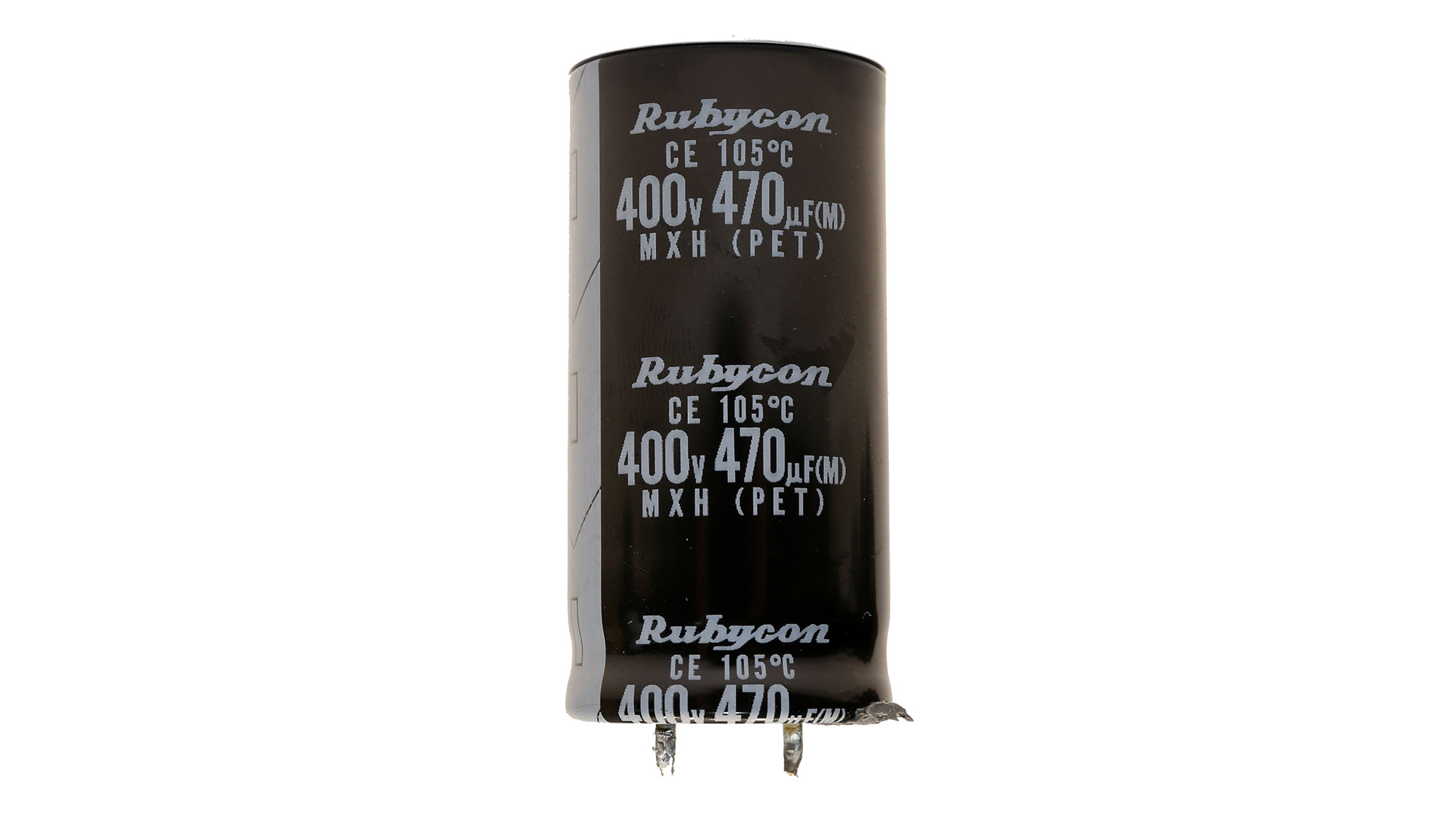
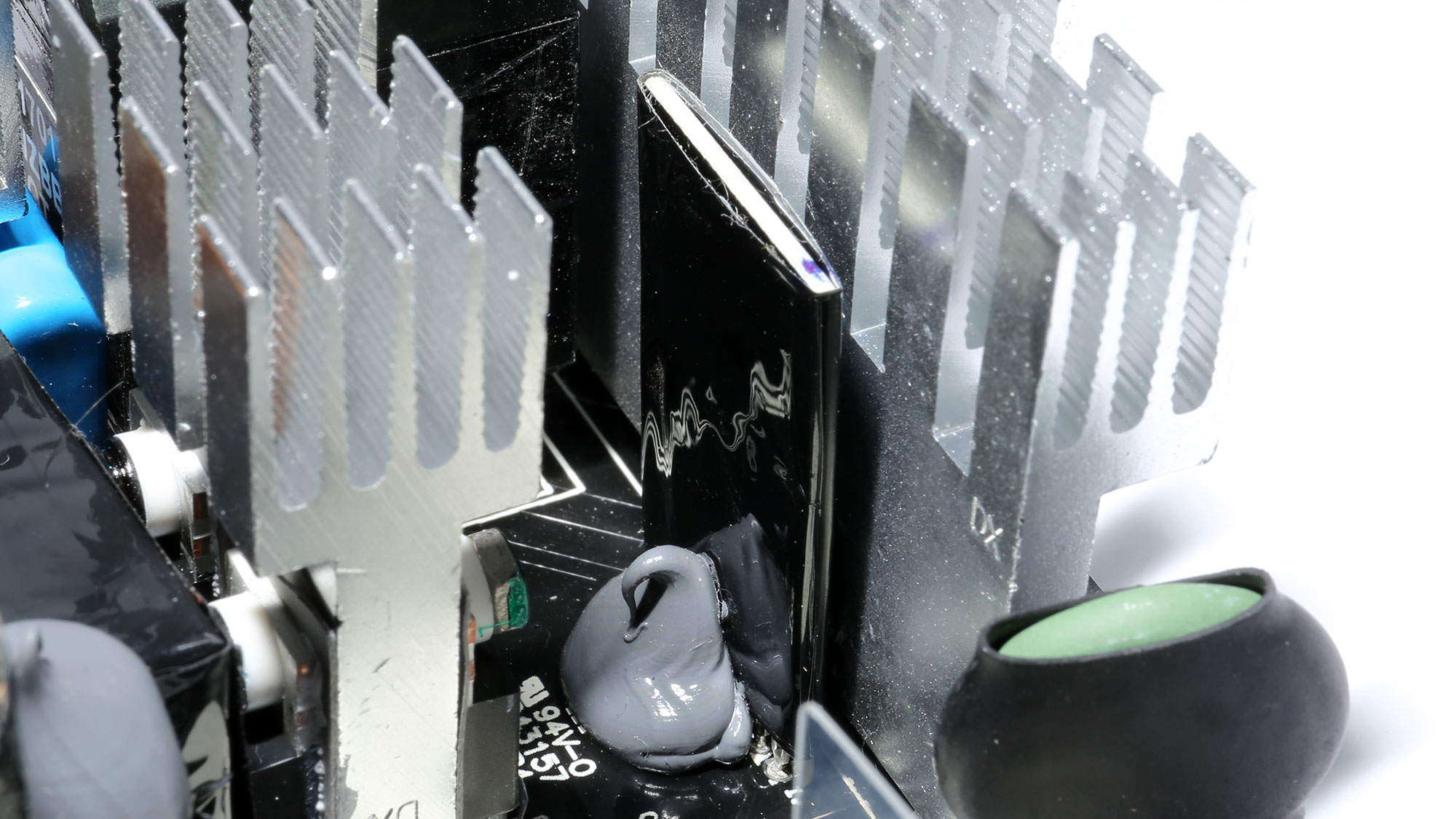
The APFC converter uses two Infineon FETs and a single boost diode. The APFC controller, an NPC1654 IC, is installed on a small vertical board, and it is covered by black tape.
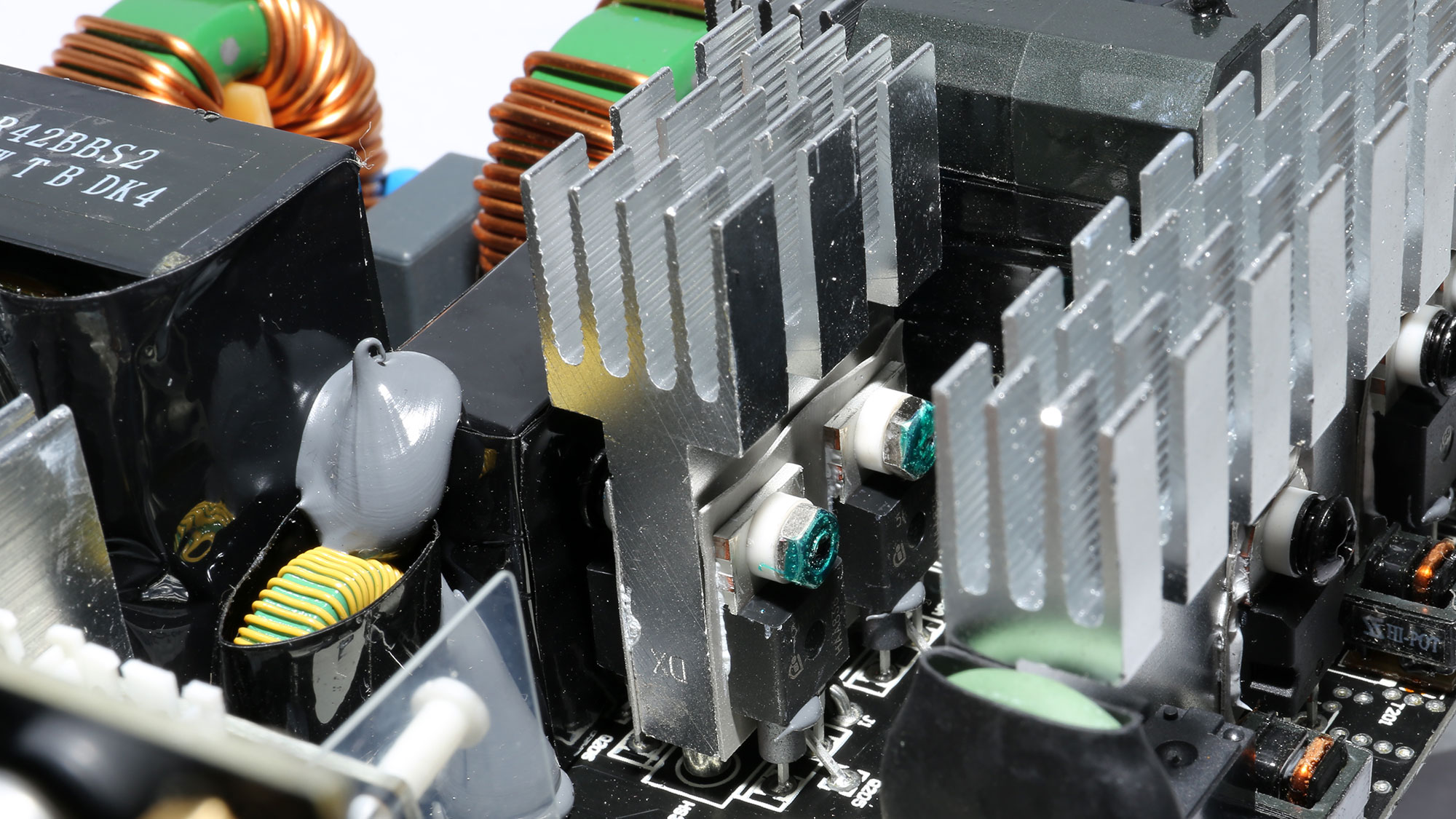
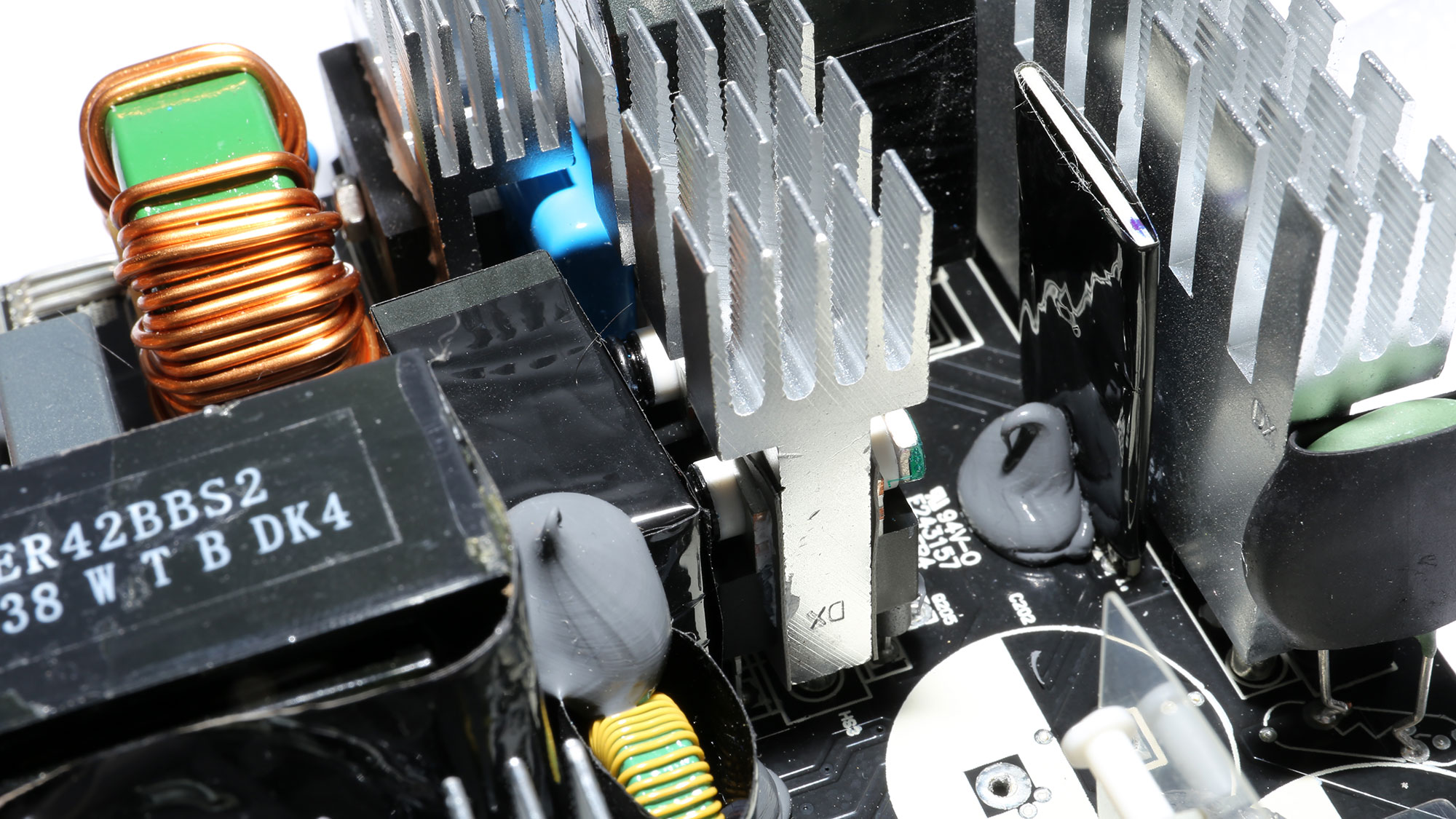
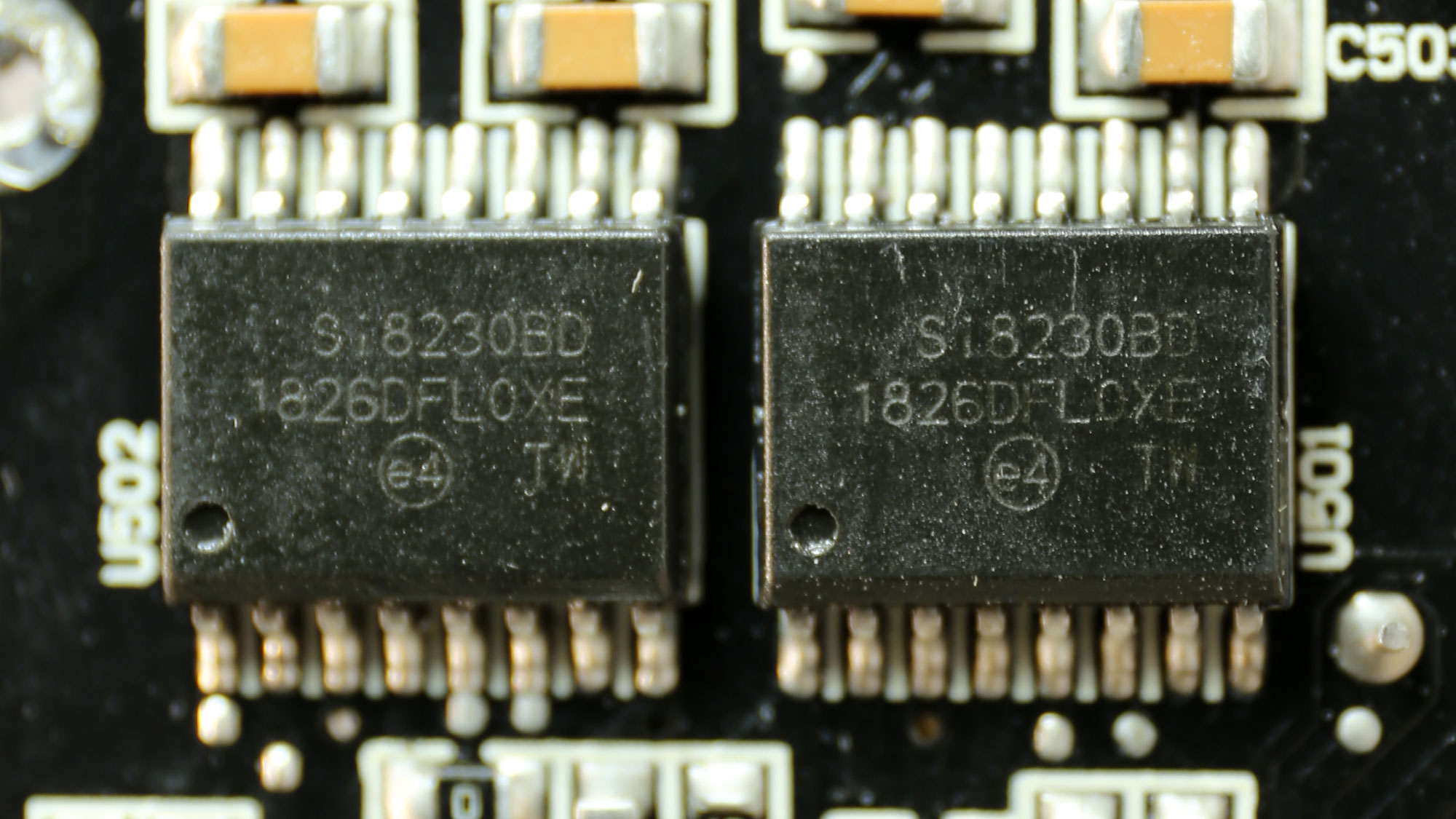
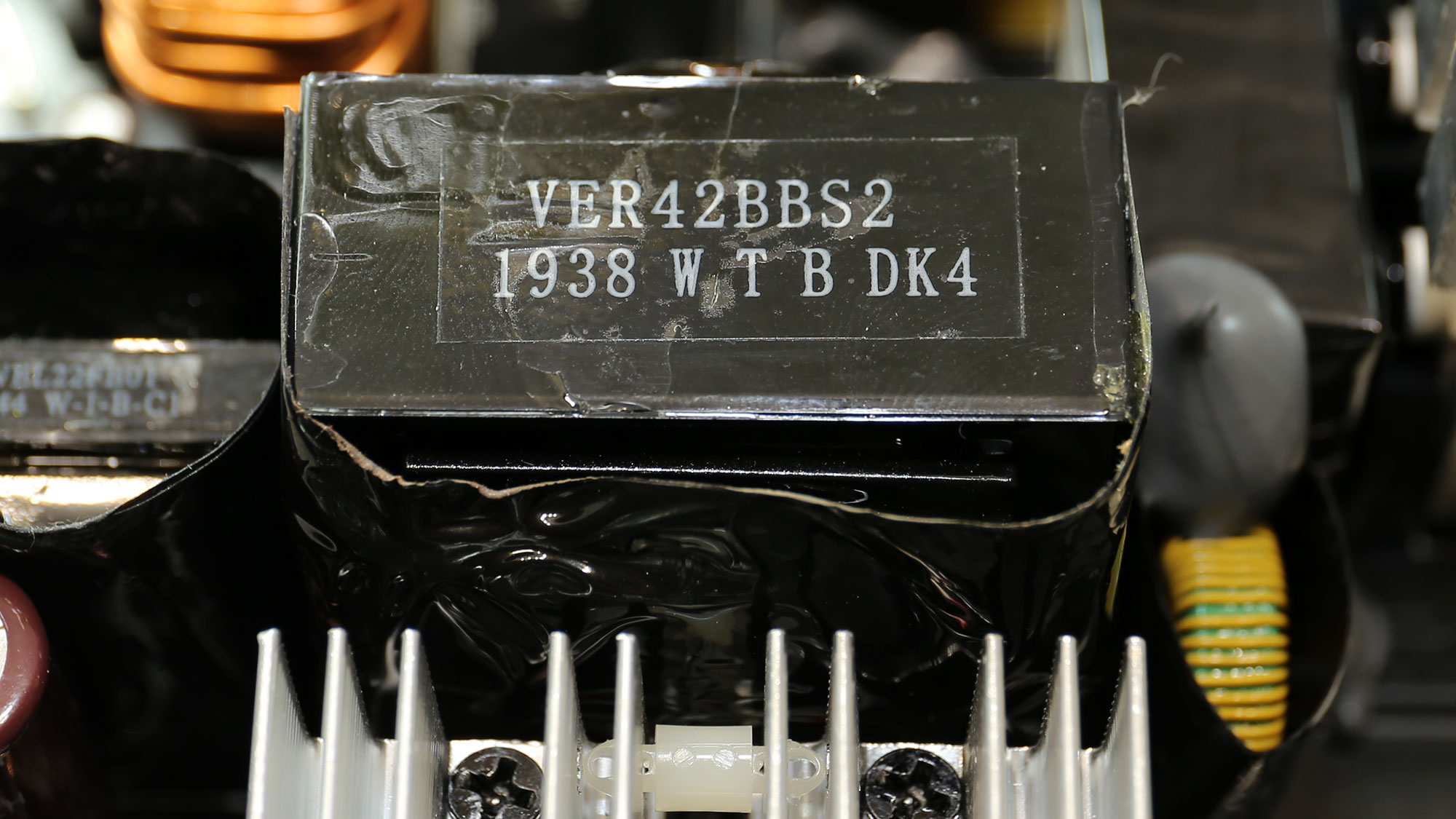
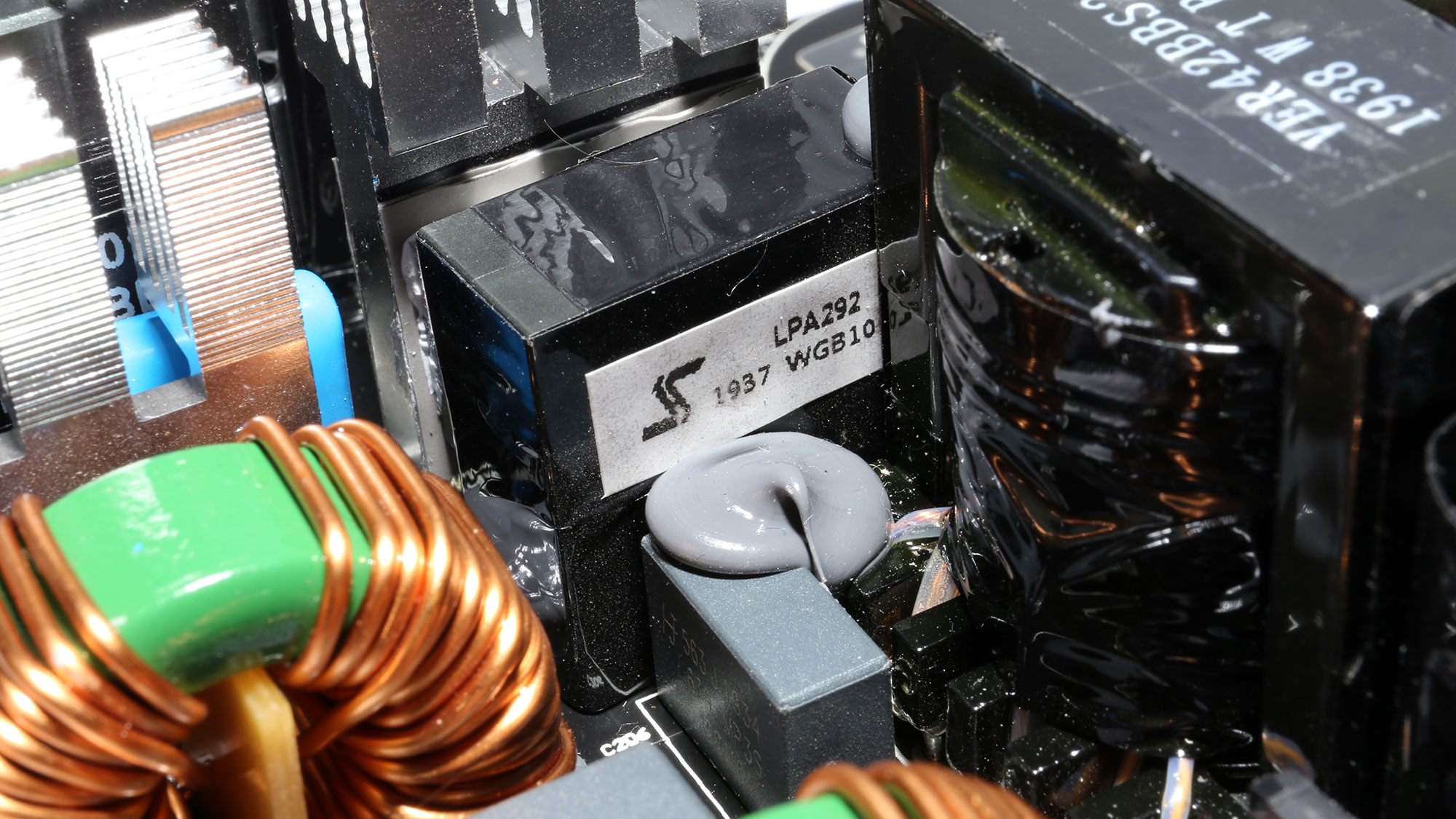
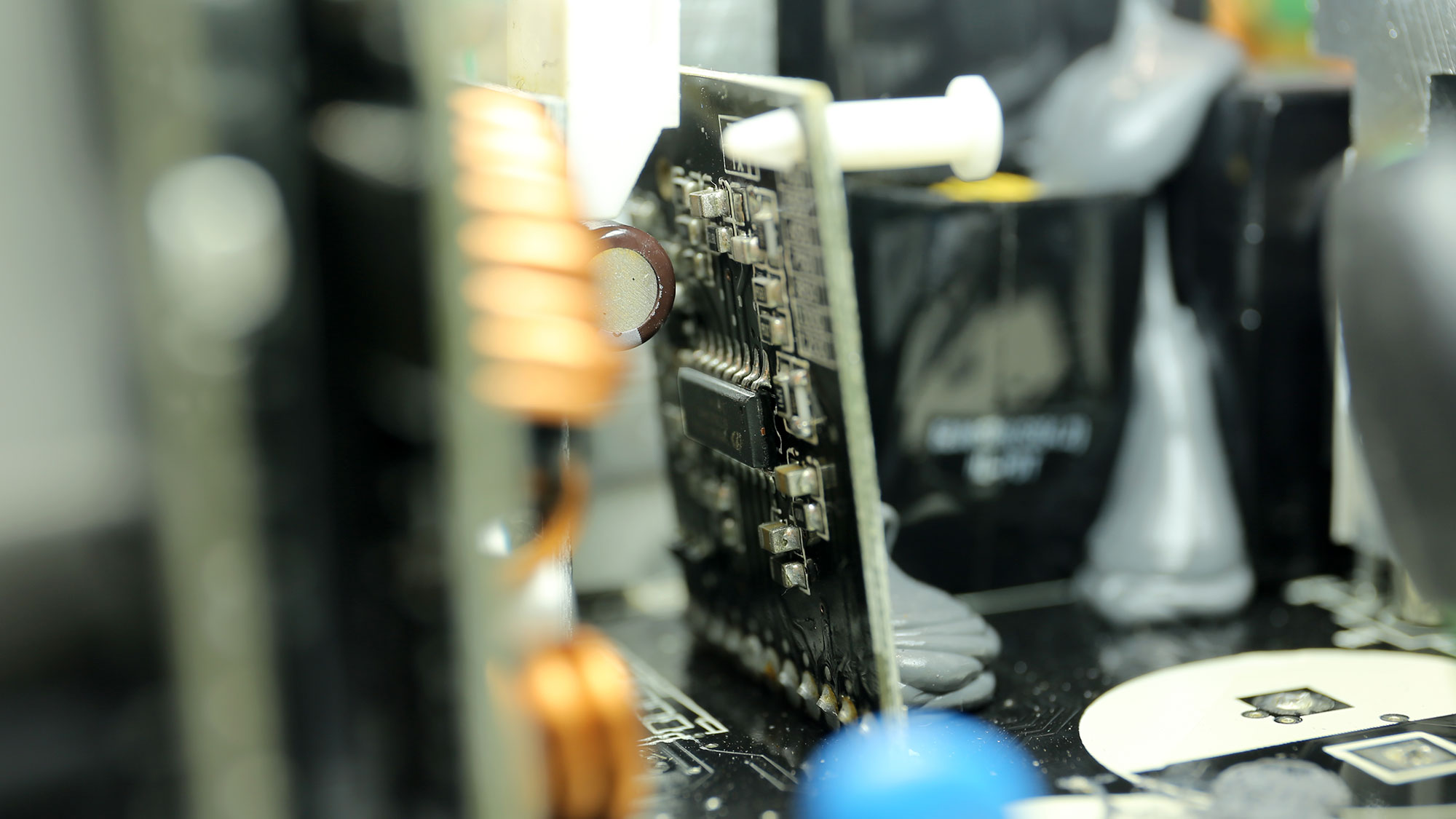
The four main FETs are arranged in a full-bridge topology. This is the best topology for achieving high-efficiency levels along with increased power output. As usual, an LLC resonant converter is also utilized for minimized energy losses.
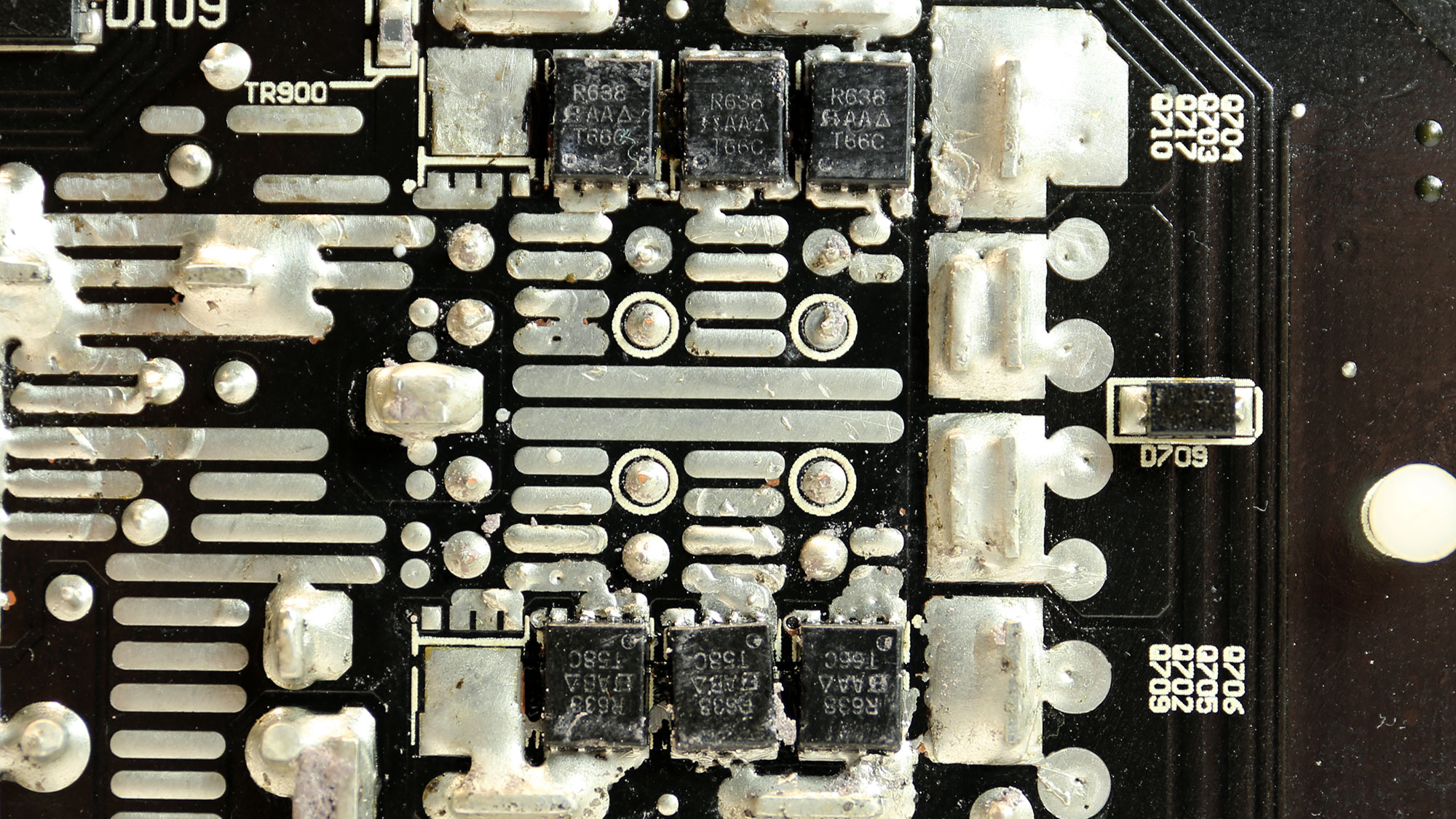
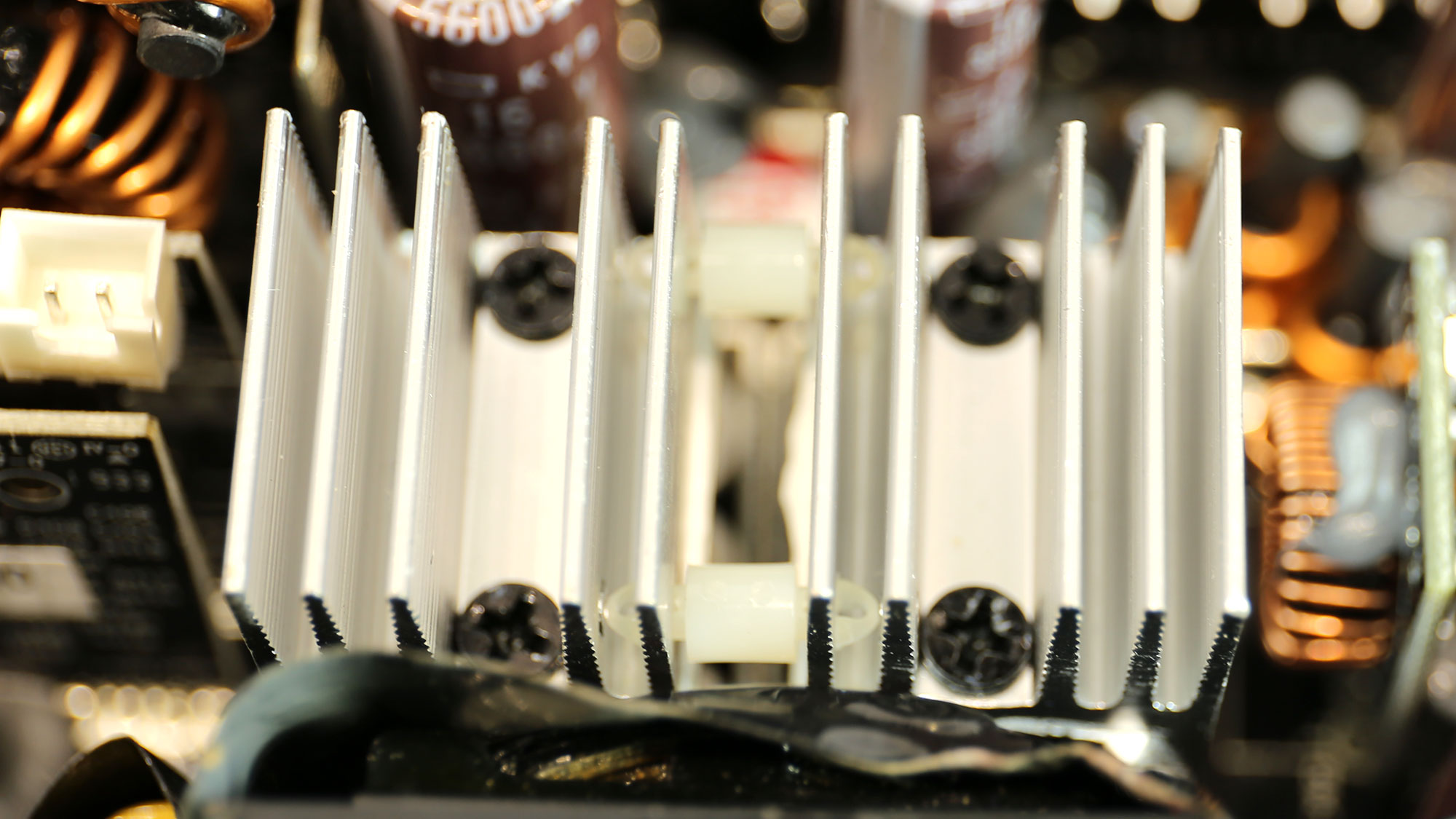
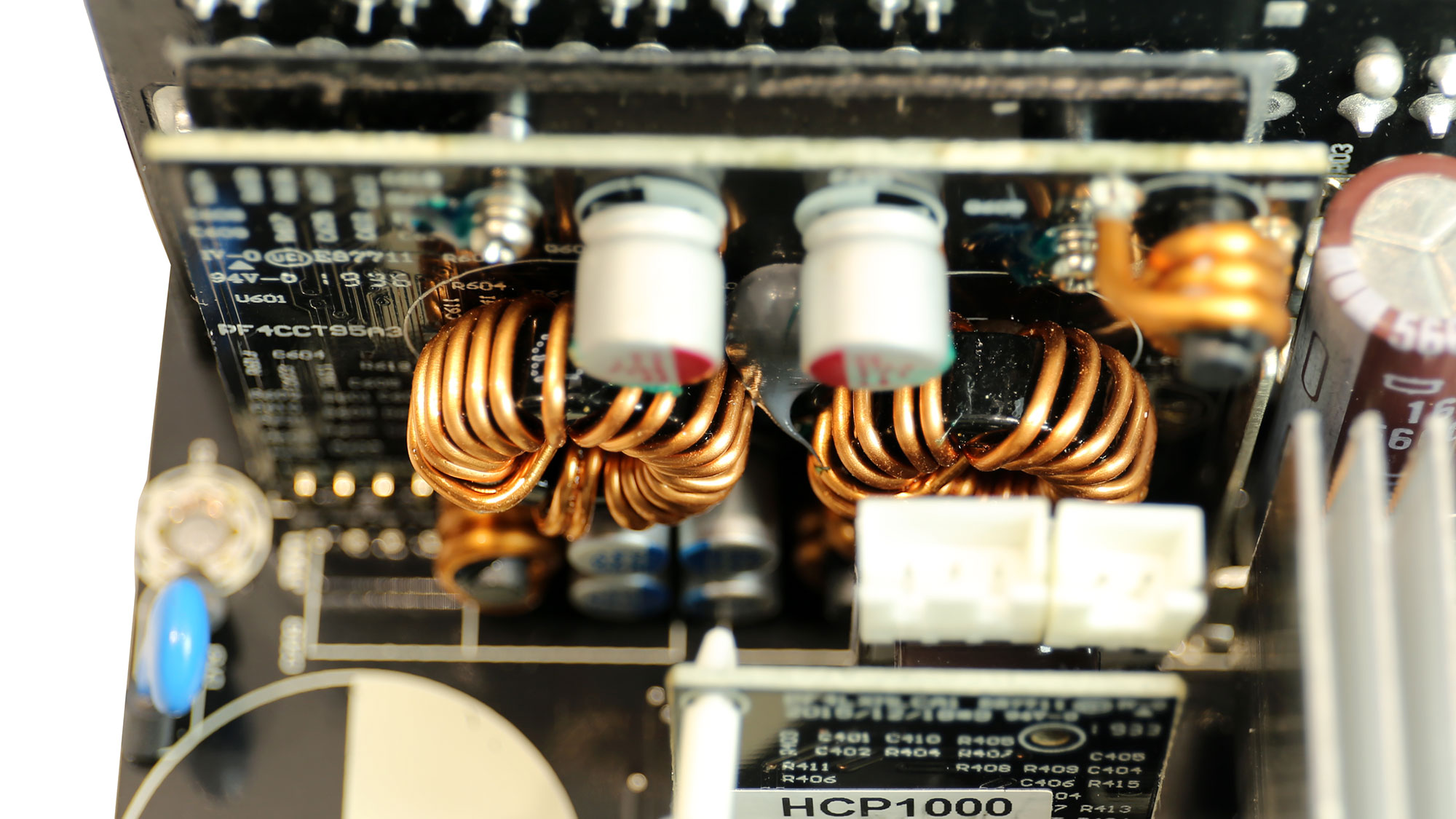
The FETs that generate the +12V rail are installed on the solder side of the PCB. The pair of heat sinks right above them helps in keeping their operating temperatures within the proper range.
A pair of VRMs handle the minor rails. Both are installed on the same board.
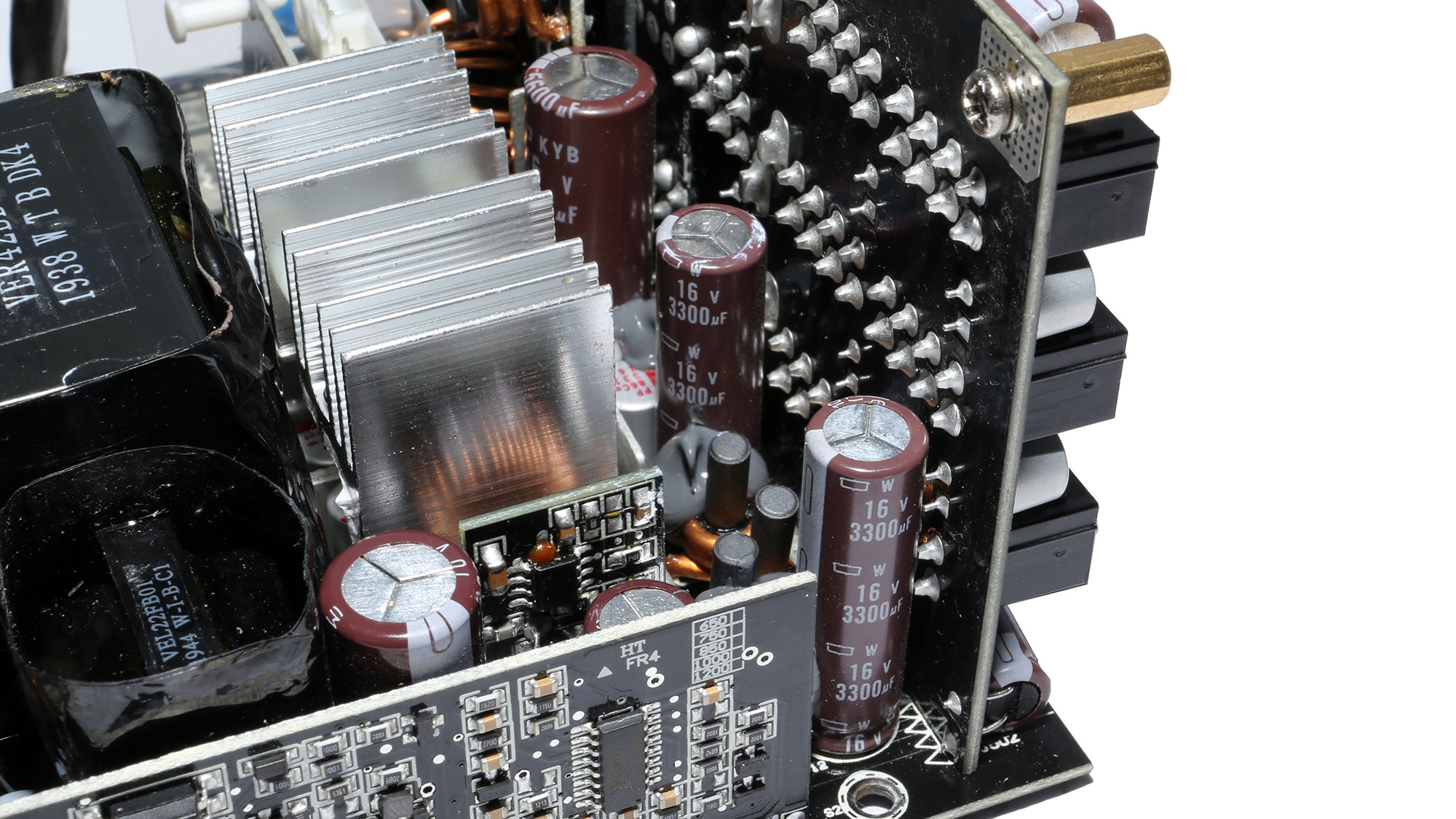
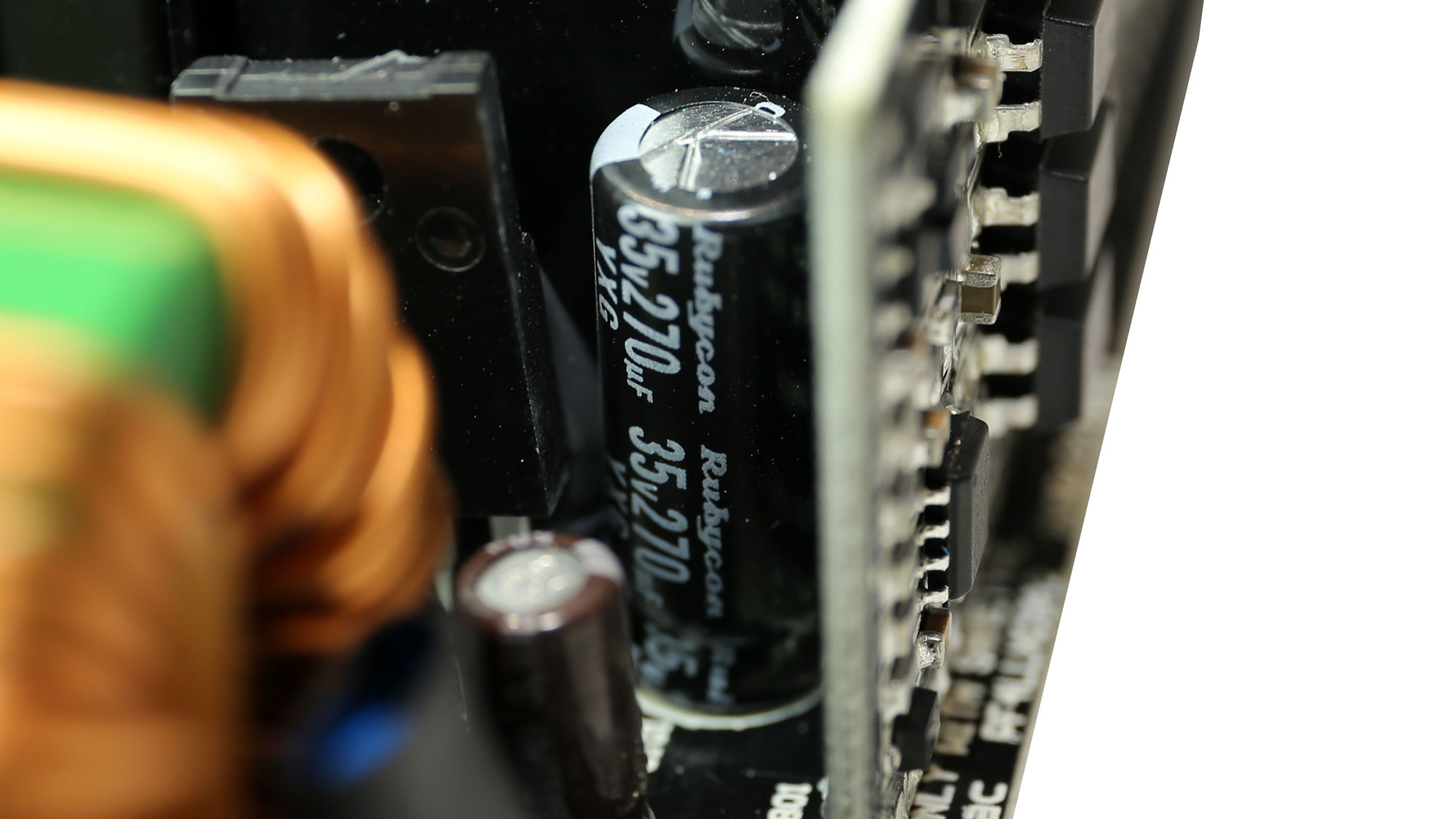
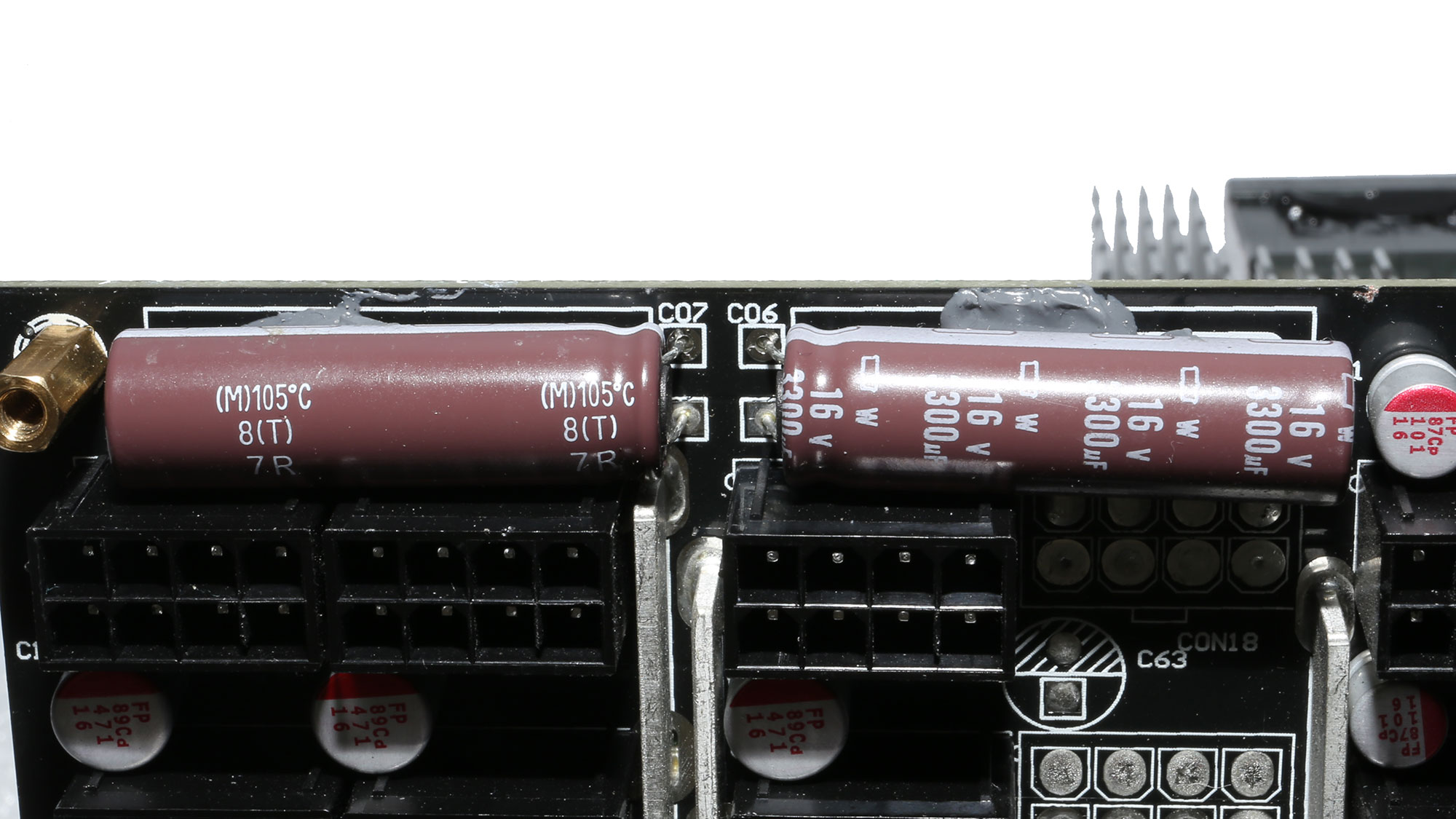
Both electrolytic and polymer filtering caps are provided by Japanese manufacturers, with the majority of them belonging to good lines.
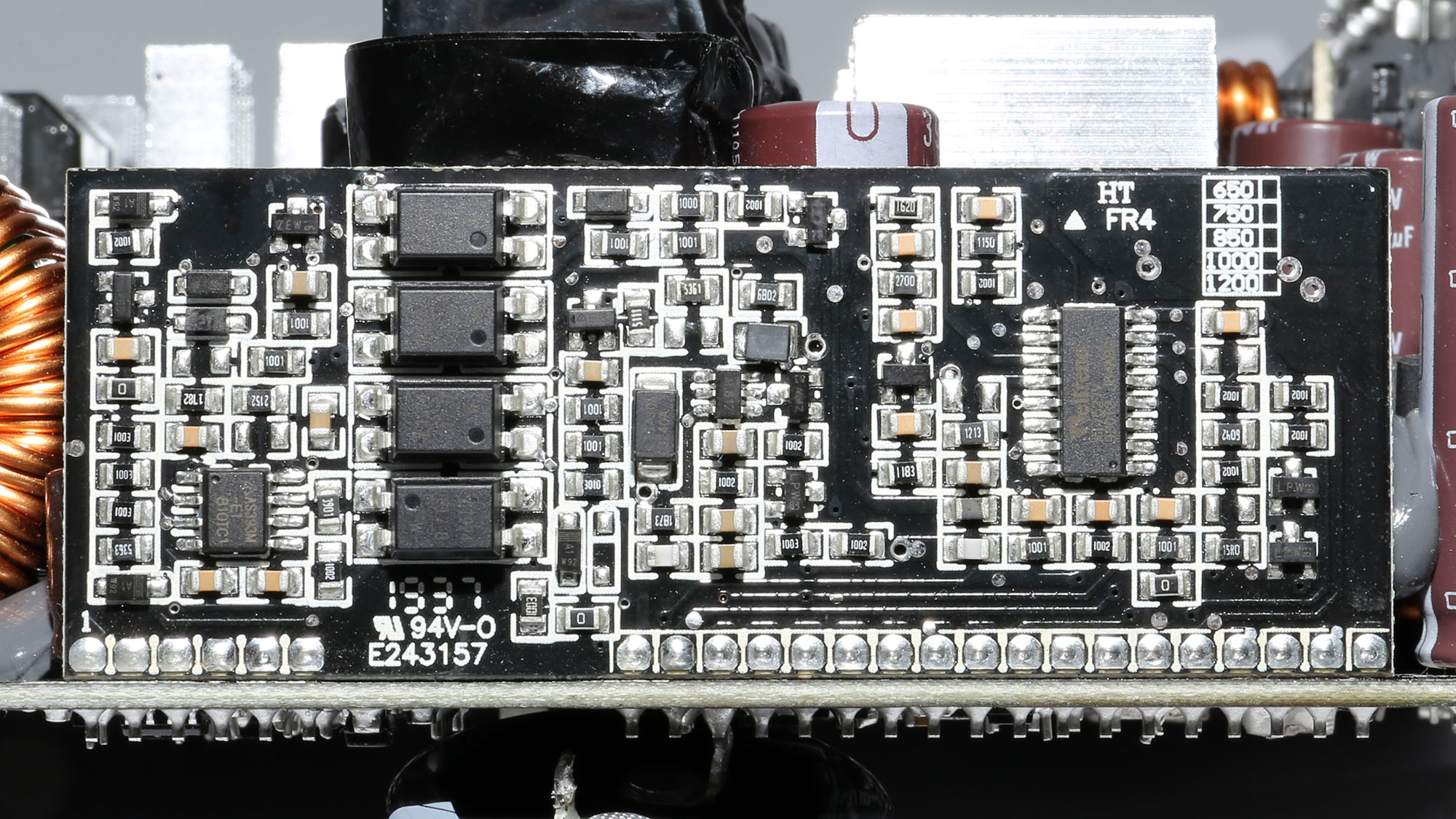
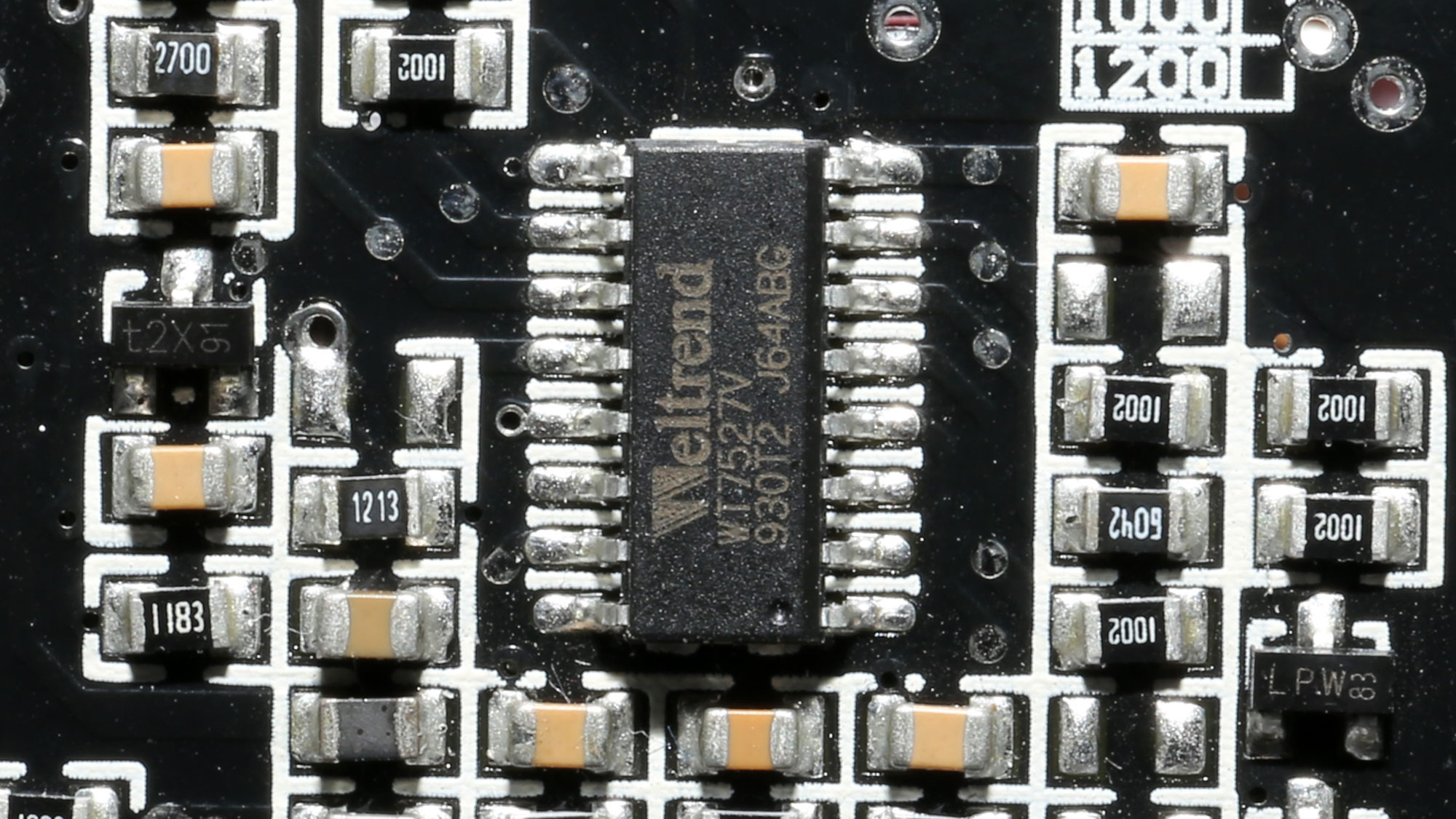
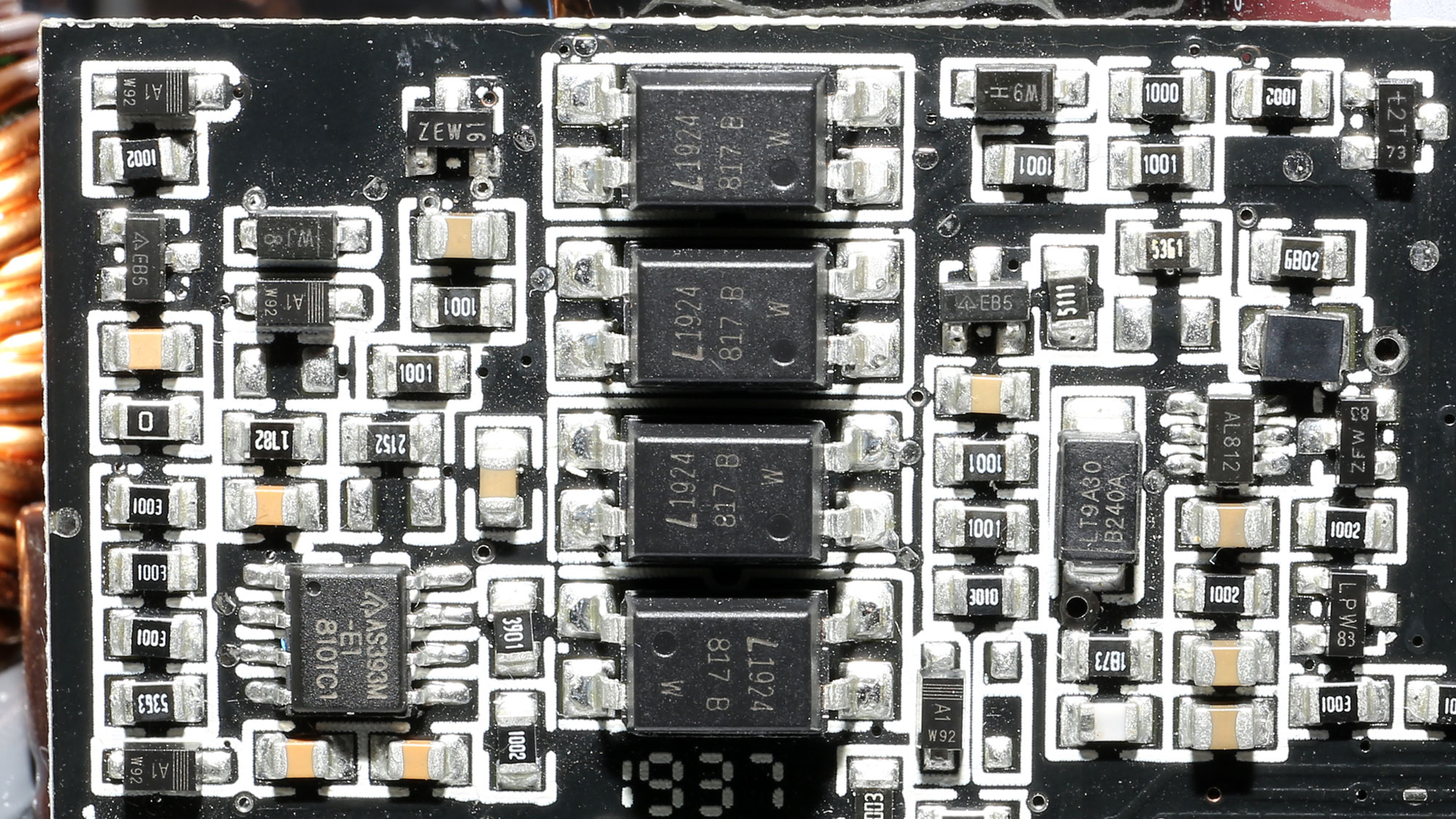
The supervisor IC, a Weltrend WT7527V, is installed on the PCB shown above.
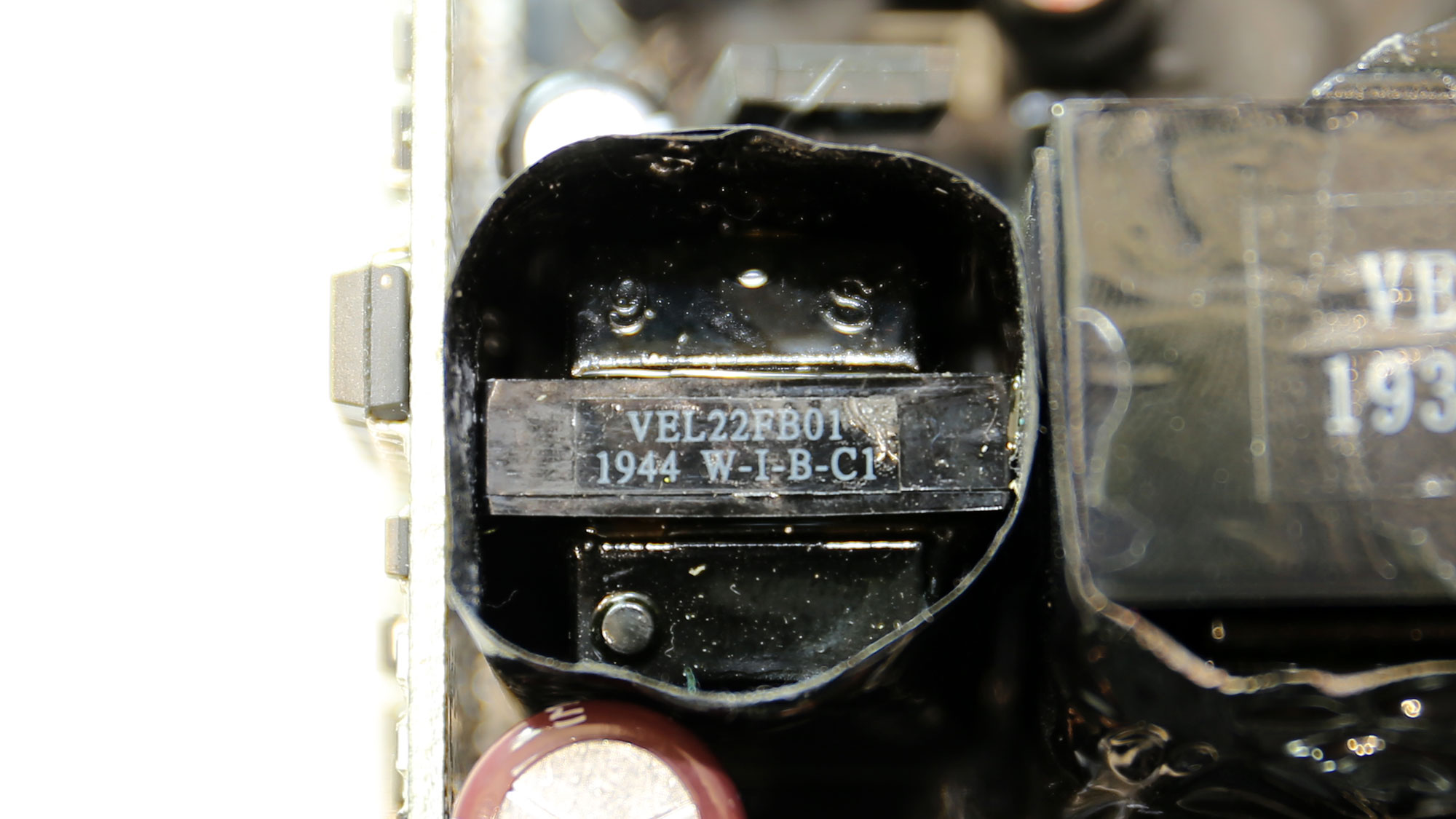
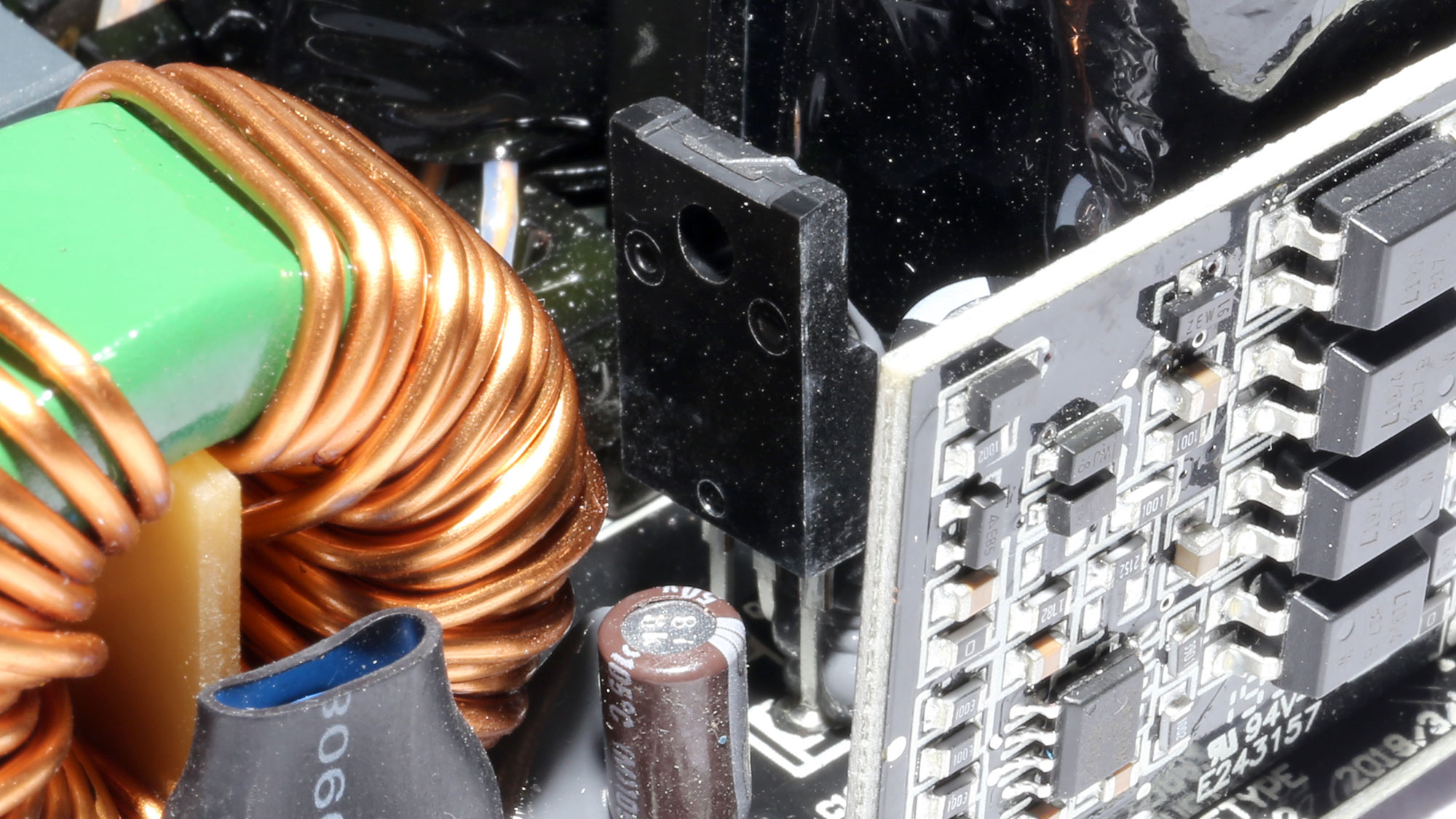
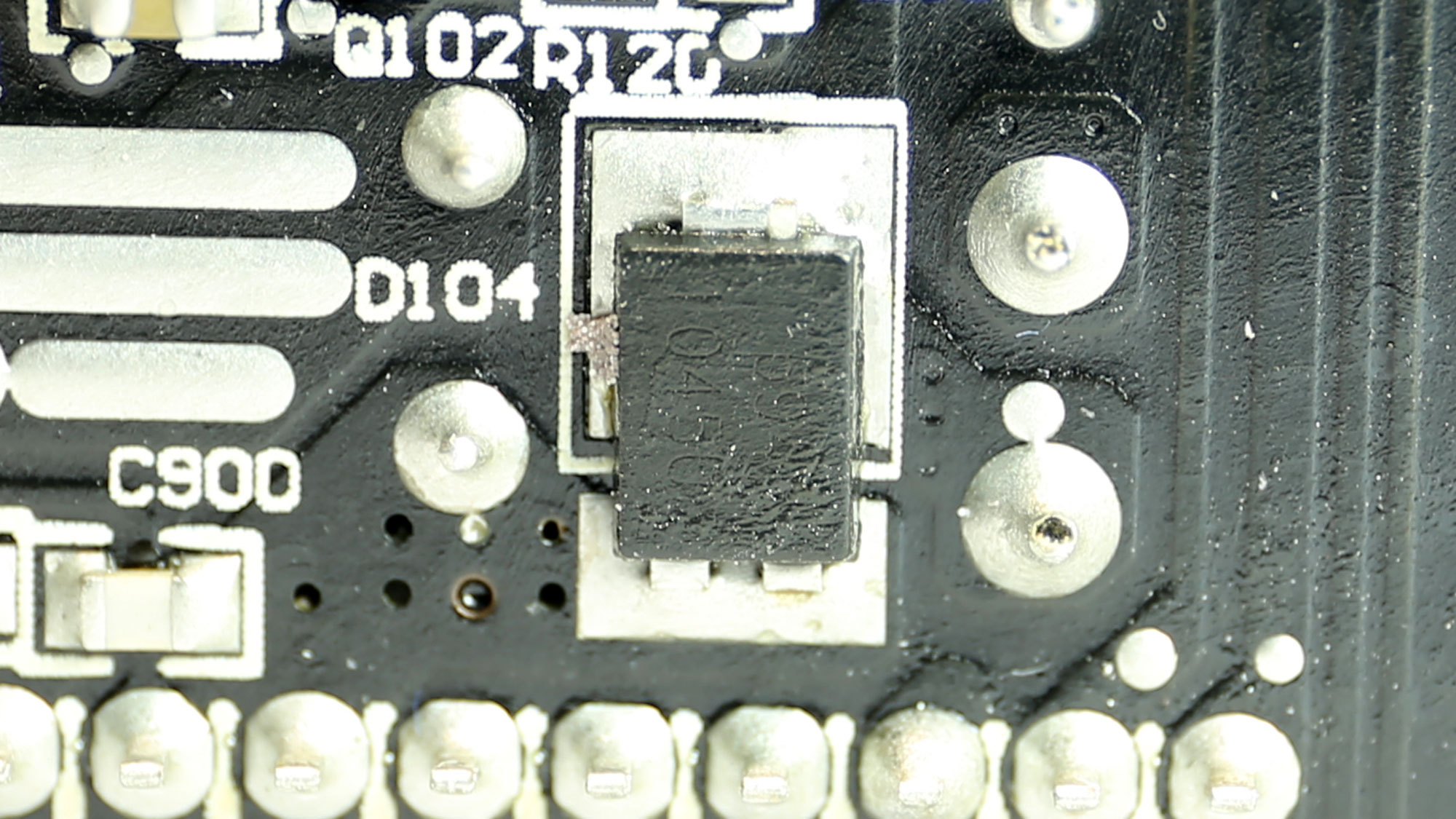
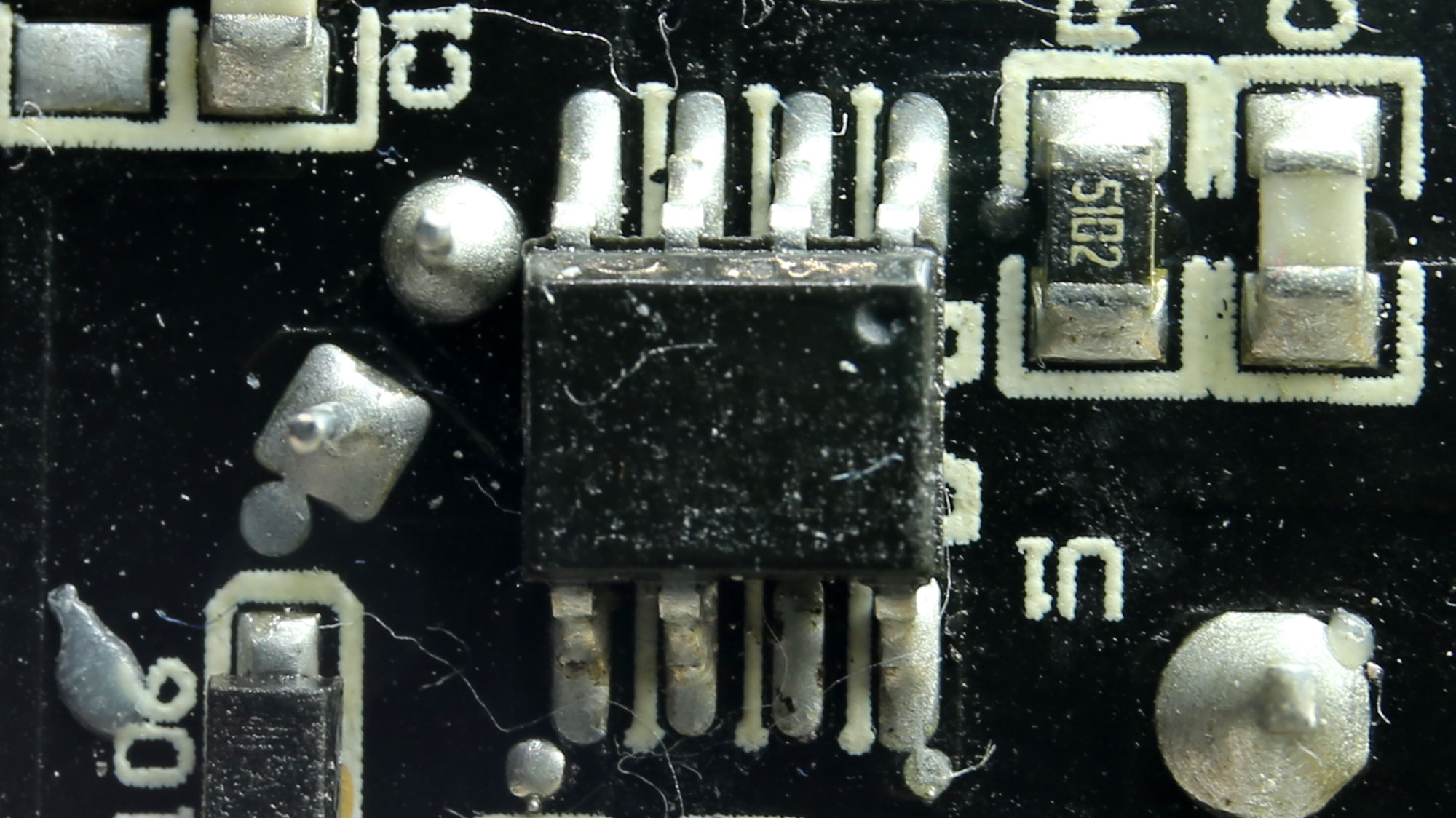
The parts of the 5VSB circuit are depicted on the photos above.
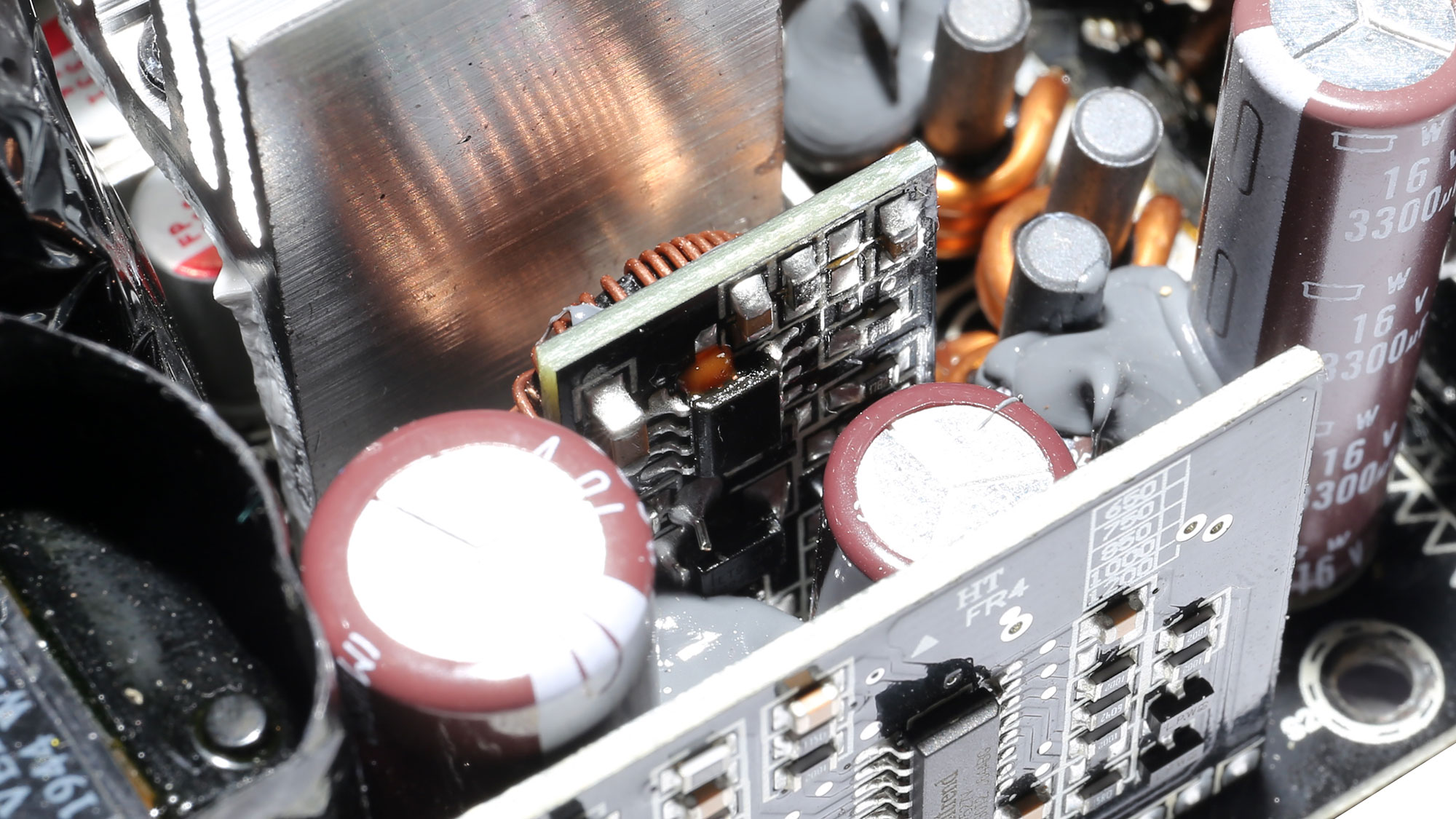
A small daughter-board holds the parts that regulate the -12V rail.
At the face of the modular board, besides a notable number of polymer caps, we also find three electrolytic ones.
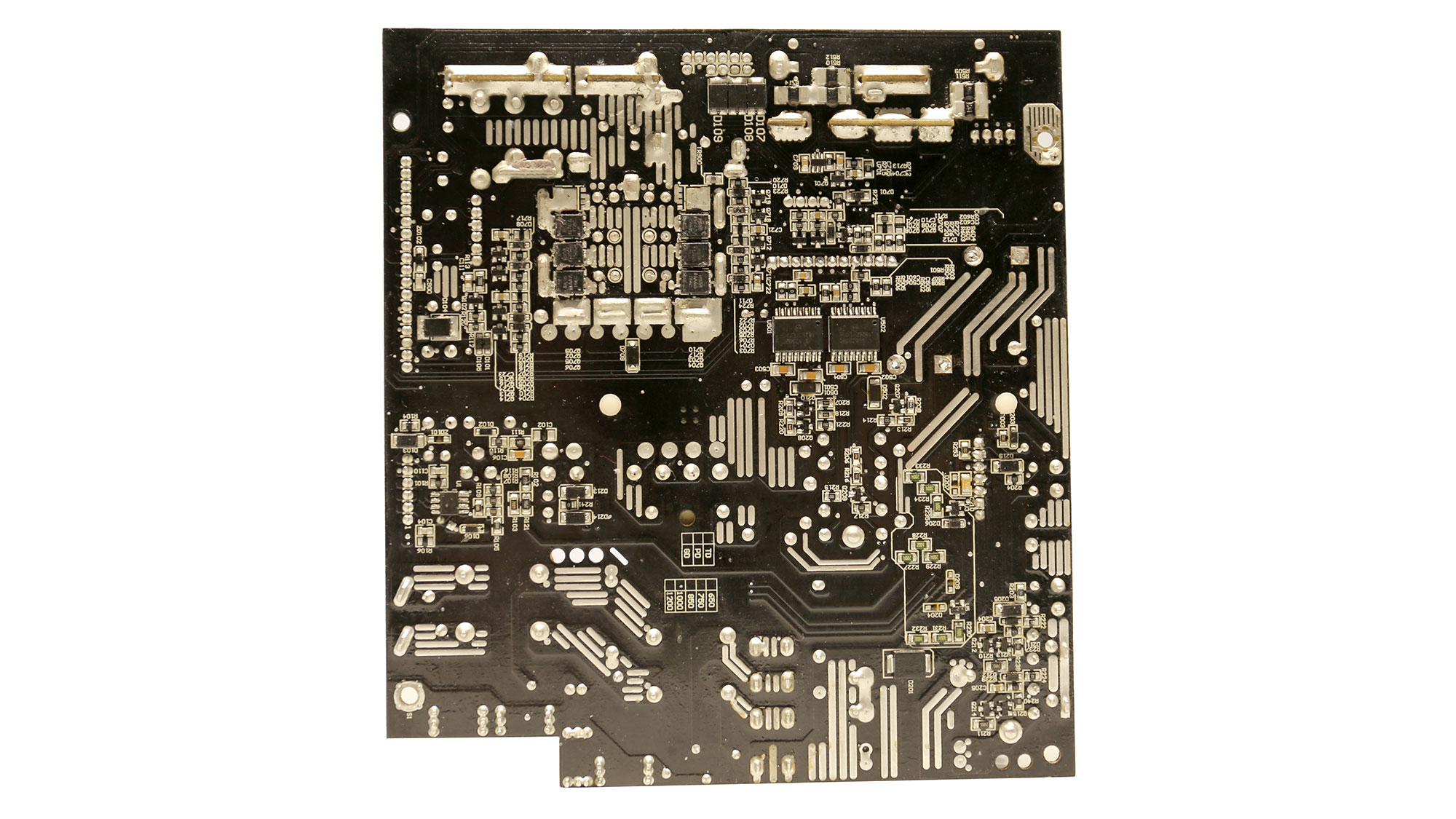
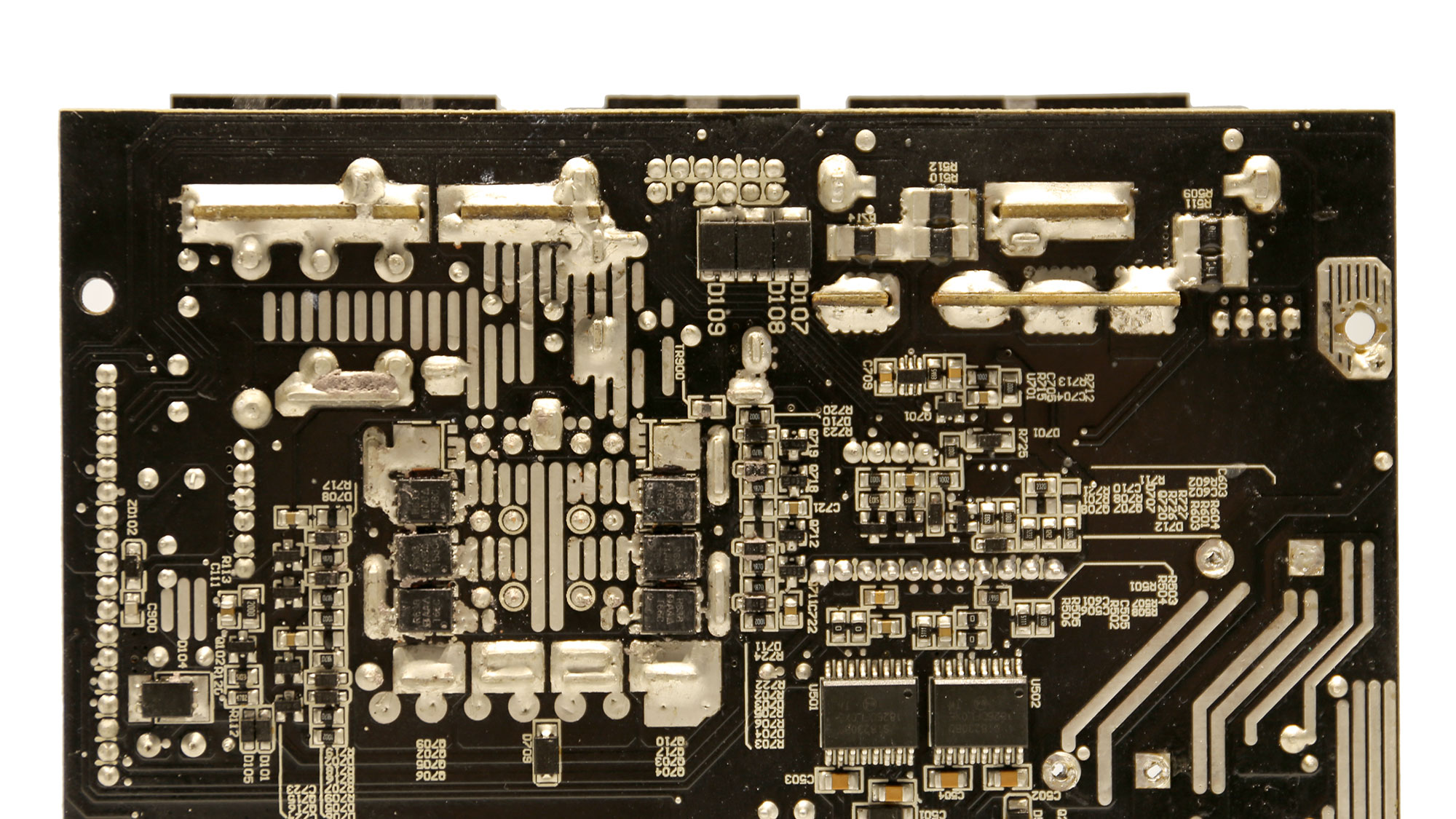



The soldering quality is good enough, although in some regions the soldering jobs could be better (e.g., in the +12V FETs area).


The Hong Hua fans offer good performance at an affordable price tag, and this is why Seasonic prefers them.
MORE: Best Power Supplies
MORE: How We Test Power Supplies
MORE: All Power Supply Content
Current page: Specifications and Part Analysis
Next Page Load Regulation, Hold-Up Time, Inrush Current, Efficiency and Noise
Aris Mpitziopoulos is a contributing editor at Tom's Hardware, covering PSUs.
-
refillable This is the first review I saw on the Seasonic titanum platform. Looks good on paper but I'd personally avoid it. Are you not extremely concerned about that sky-high OCP? I mean 117 A, that's huge! What if something went wrong? Wouldn't that instantly fry something? Shame Seasonic doesn't bother having multi-rail OCP on a 1000W unit. Something like the HX1000 I think is a better option with multi-rail OCP. I think 1000+ W PSUs without multi-rail OCP is just asking for trouble.Reply
I wonder why you don't seem to agree with this and instead give this thing an editor choice award. -
Aris_Mp Replyrefillable said:This is the first review I saw on the Seasonic titanum platform. Looks good on paper but I'd personally avoid it. Are you not extremely concerned about that sky-high OCP? I mean 117 A, that's huge! What if something went wrong? Wouldn't that instantly fry something? Shame Seasonic doesn't bother having multi-rail OCP on a 1000W unit. Something like the HX1000 I think is a better option with multi-rail OCP. I think 1000+ W PSUs without multi-rail OCP is just asking for trouble.
I wonder why you don't seem to agree with this and instead give this thing an editor choice award.
The HX1000 also has a single +12V rail: https://www.tomshardware.com/reviews/corsair-hx1000-psu,5214.html -
refillable Reply
No, it definitely has multi-rail OCP around 40A, a huge difference from 117A seen in this seasonic platform. You said that here:Aris_Mp said:The HX1000 also has a single +12V rail: https://www.tomshardware.com/reviews/corsair-hx1000-psu,5214.html
https://www.tomshardware.com/reviews/corsair-hx1000-psu,5214-6.html -
javiindo It would be nice to precise the use case for each power supply. Because the power supply is recommended, but you don't indicate for what. For 1000W maybe a threadripper 3990X with two 2080 ti in SLI?Reply -
waltc3 Replyrefillable said:No, it definitely has multi-rail OCP around 40A, a huge difference from 117A seen in this seasonic platform. You said that here:
https://www.tomshardware.com/reviews/corsair-hx1000-psu,5214-6.html
Yes, the Corsair HX-850 has a single/multi-rail hardware switch for either a single 72A 12v rail or else 7 40A rails...;) https://www.kitguru.net/components/power-supplies/zardon/corsair-hx850-platinum-2017-power-supply-review/3/ -
emgarf Please consider providing power-off rail sequencing as well as power-on. Both are important.Reply -
Aris_Mp Reply
LOL my bad, totally missed that :)refillable said:No, it definitely has multi-rail OCP around 40A, a huge difference from 117A seen in this seasonic platform. You said that here:
https://www.tomshardware.com/reviews/corsair-hx1000-psu,5214-6.html -
refillable Reply
So, which one do you prefer? The HX seems to as quiet despite efficiency difference, so I don't think the Titanium efficiency matters. Plus, the HX is also cheaper here and in many other countries such as the US and Australia. I think the HX is a much better choice, or at least should be honourably mentioned.Aris_Mp said:LOL my bad, totally missed that :)
